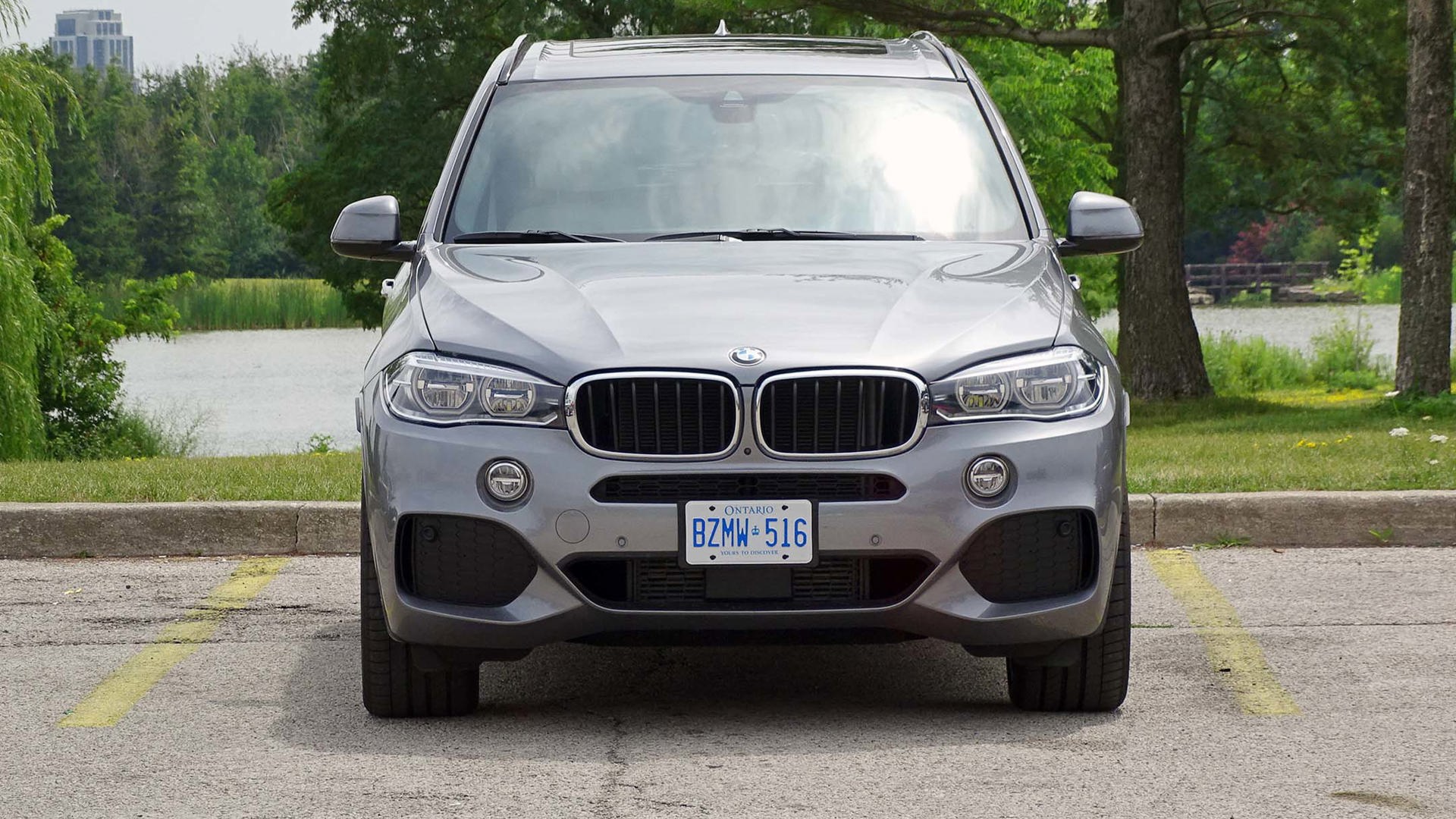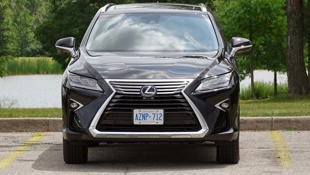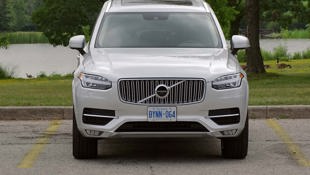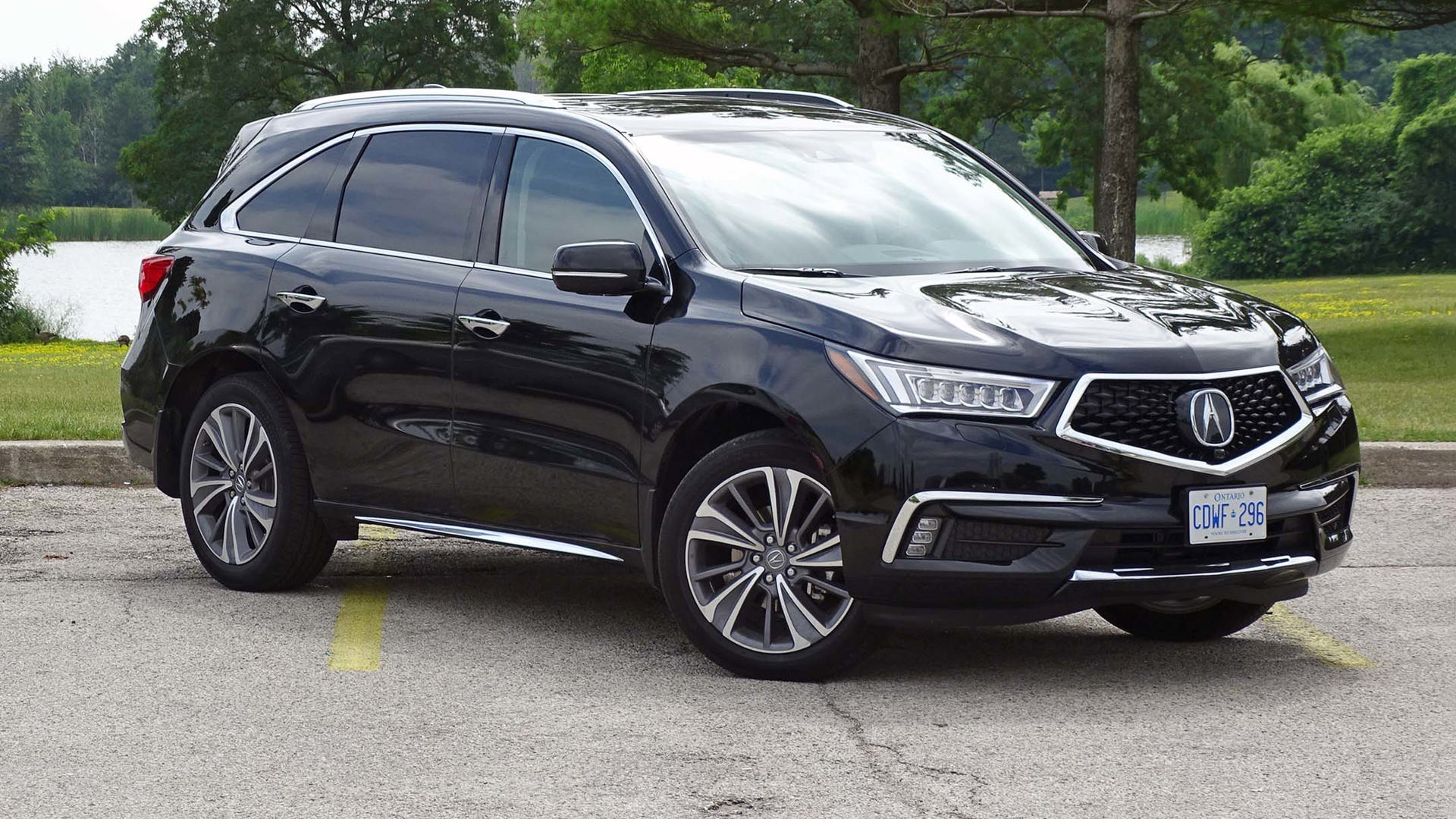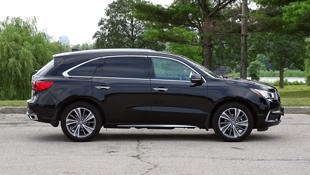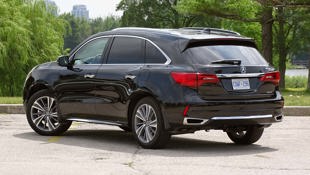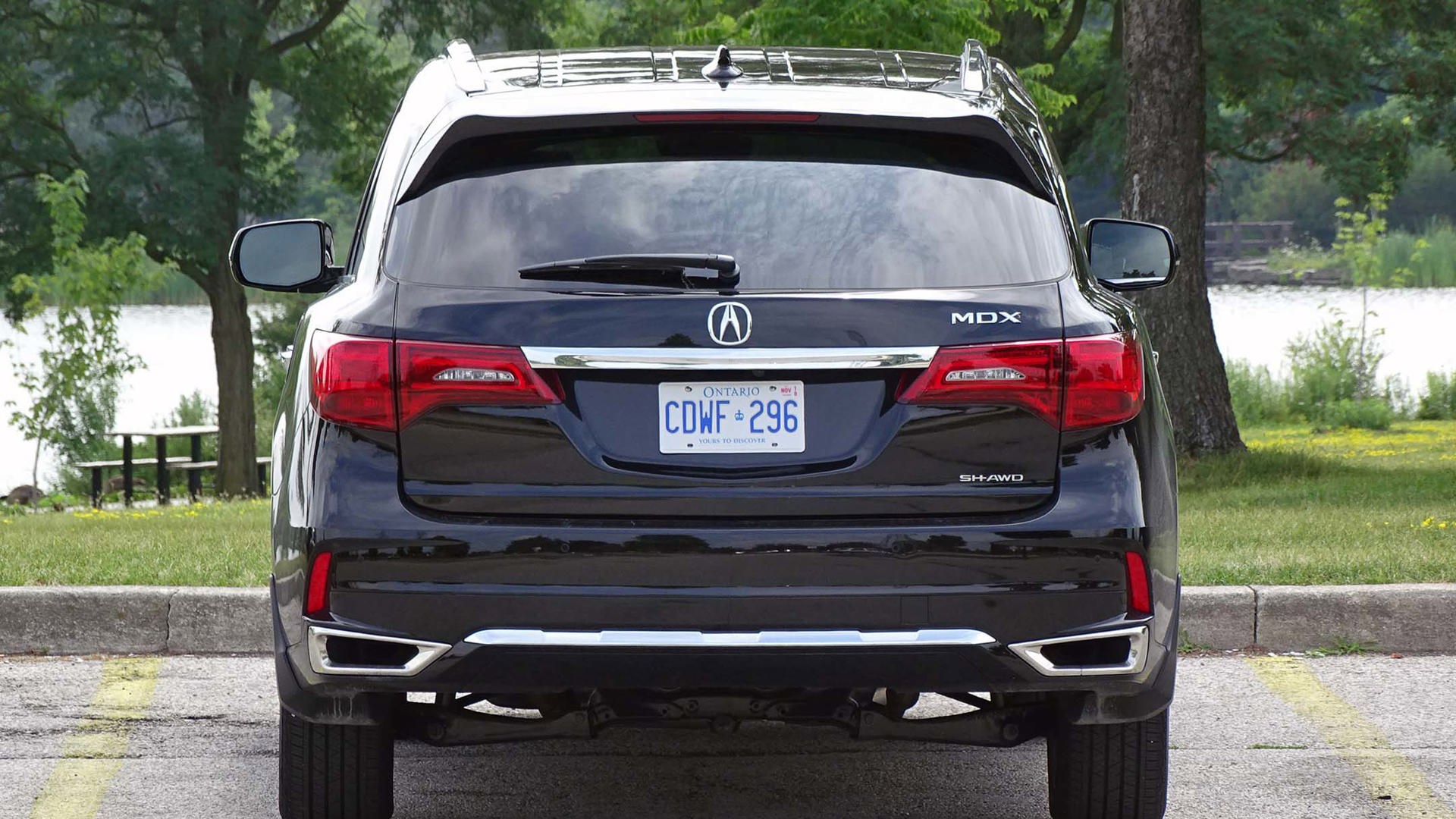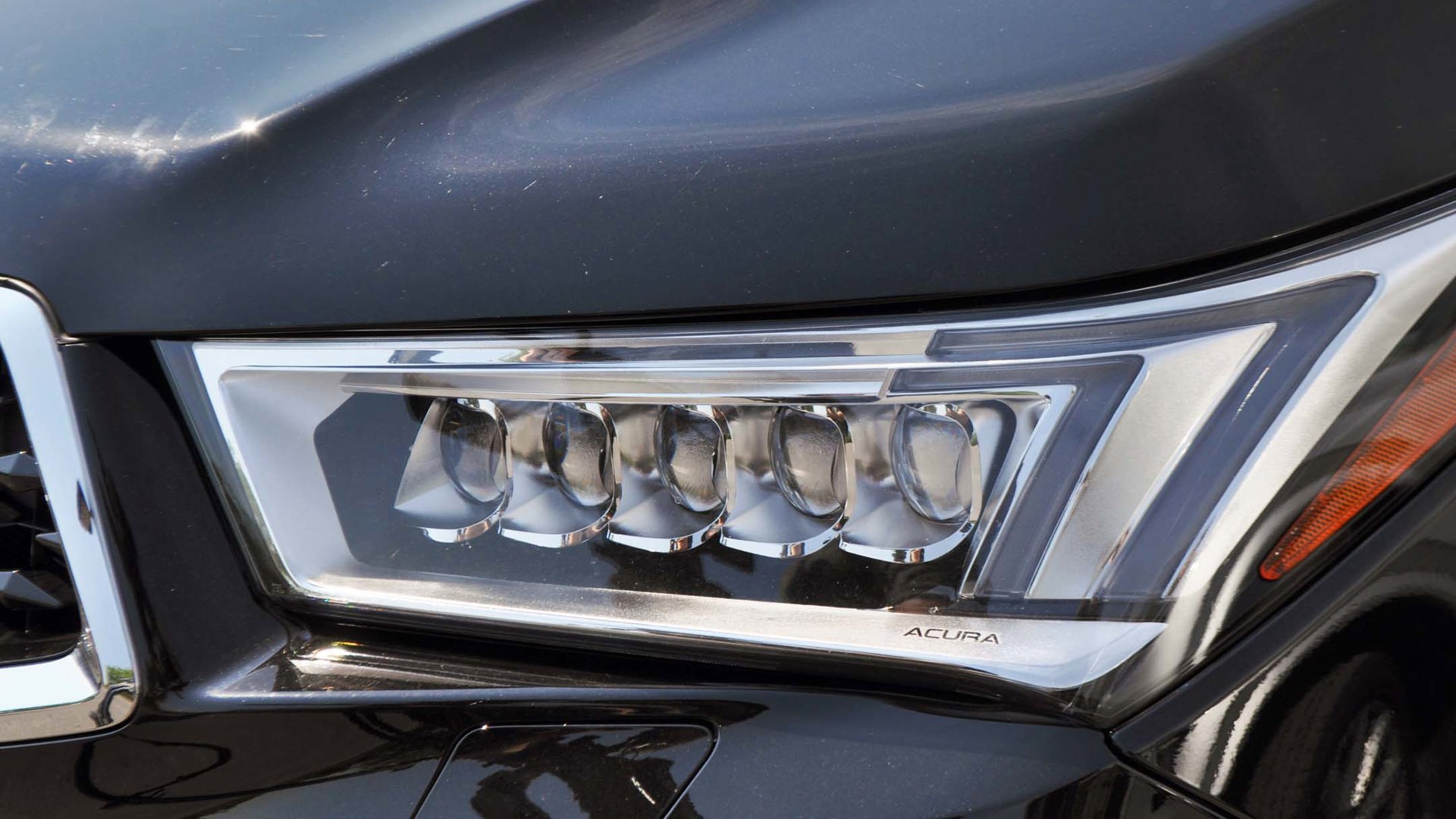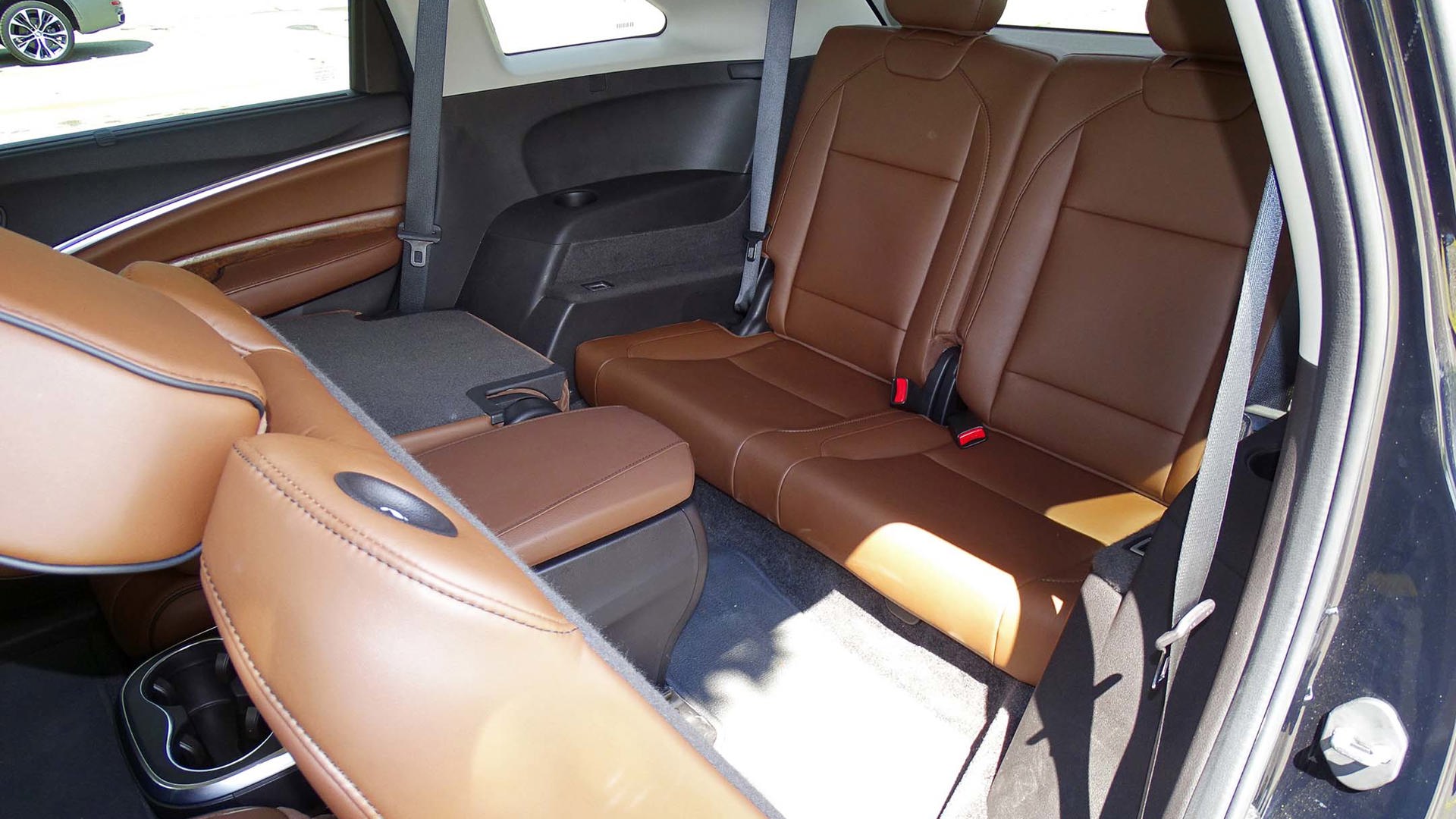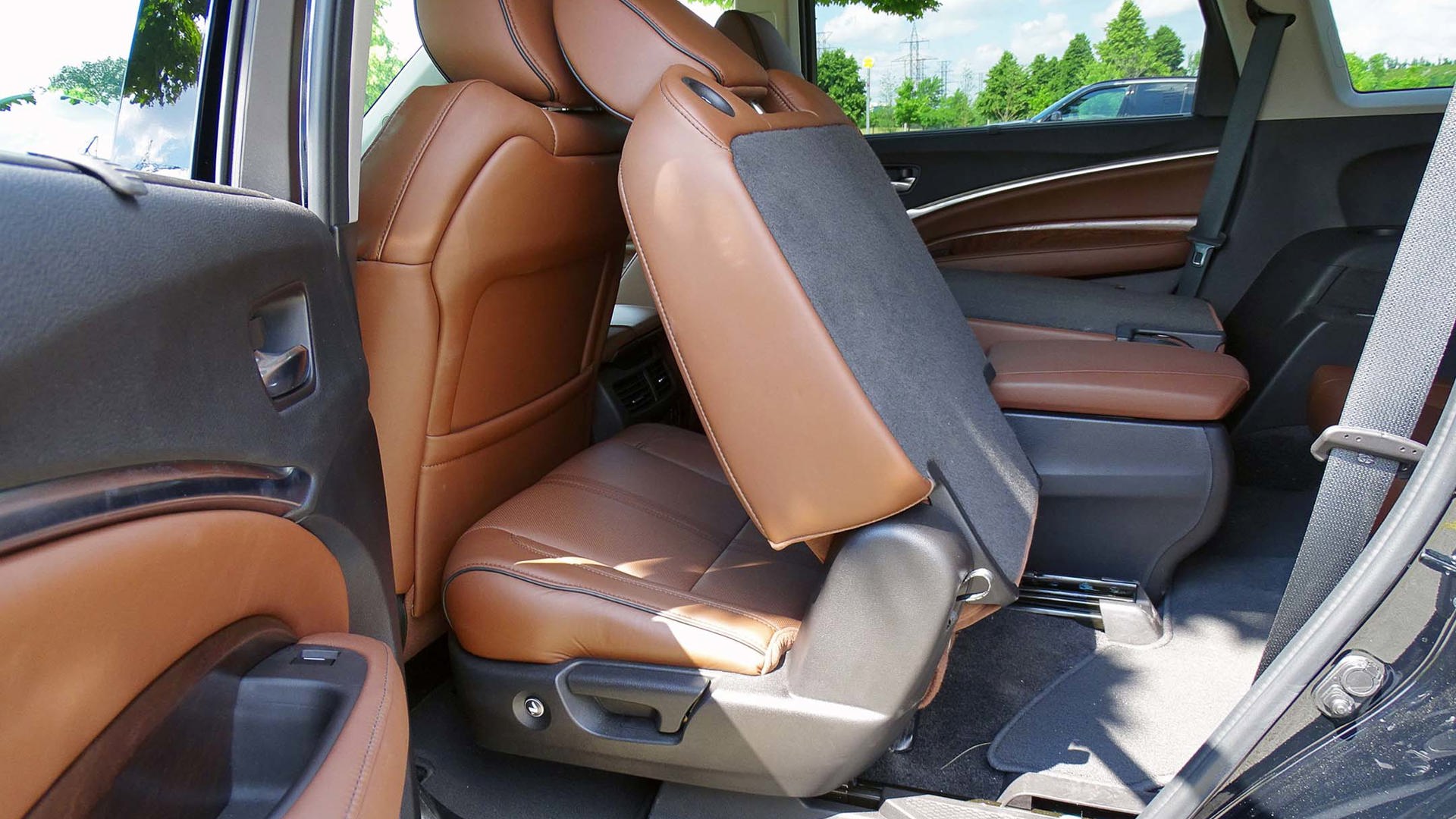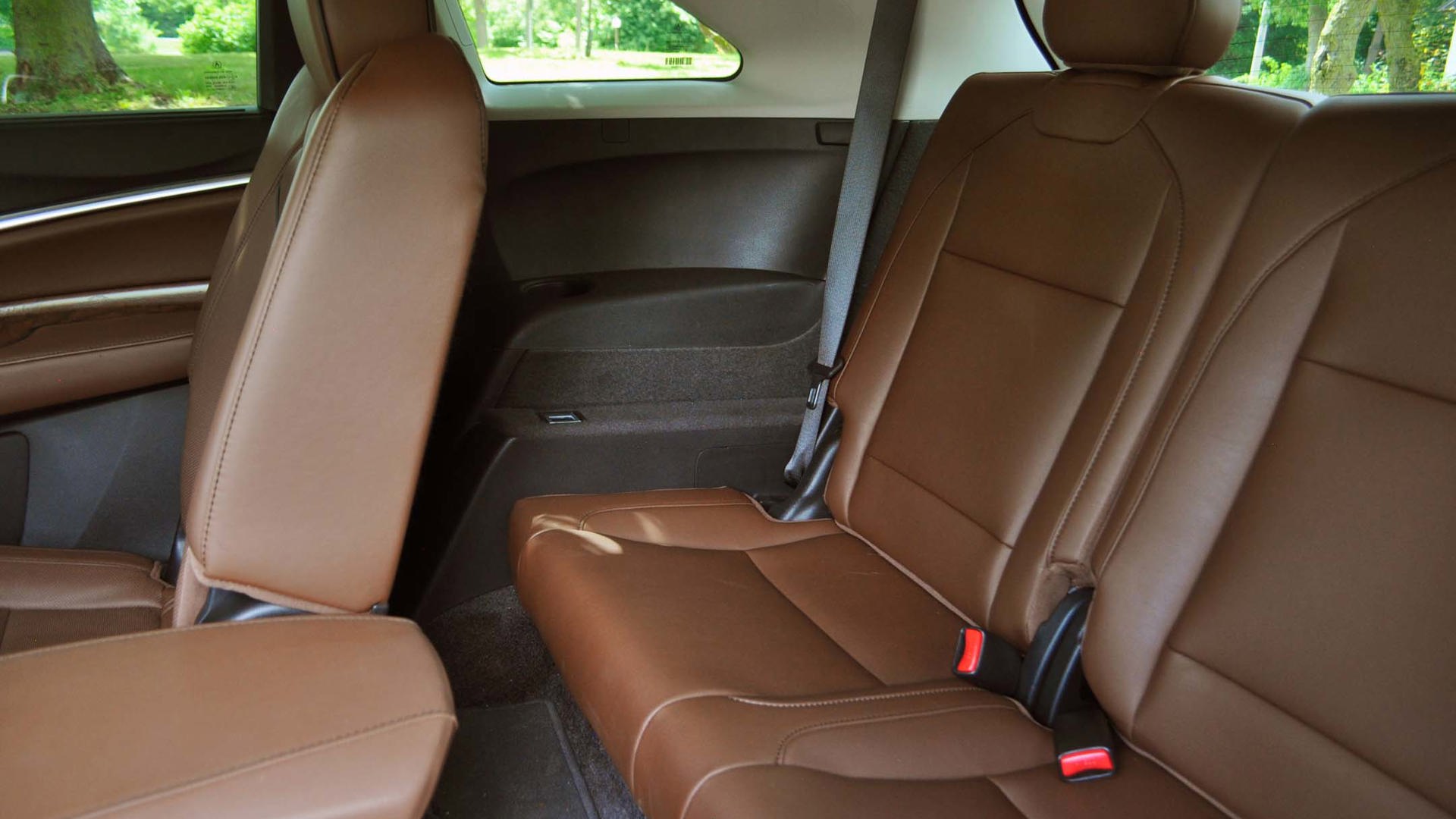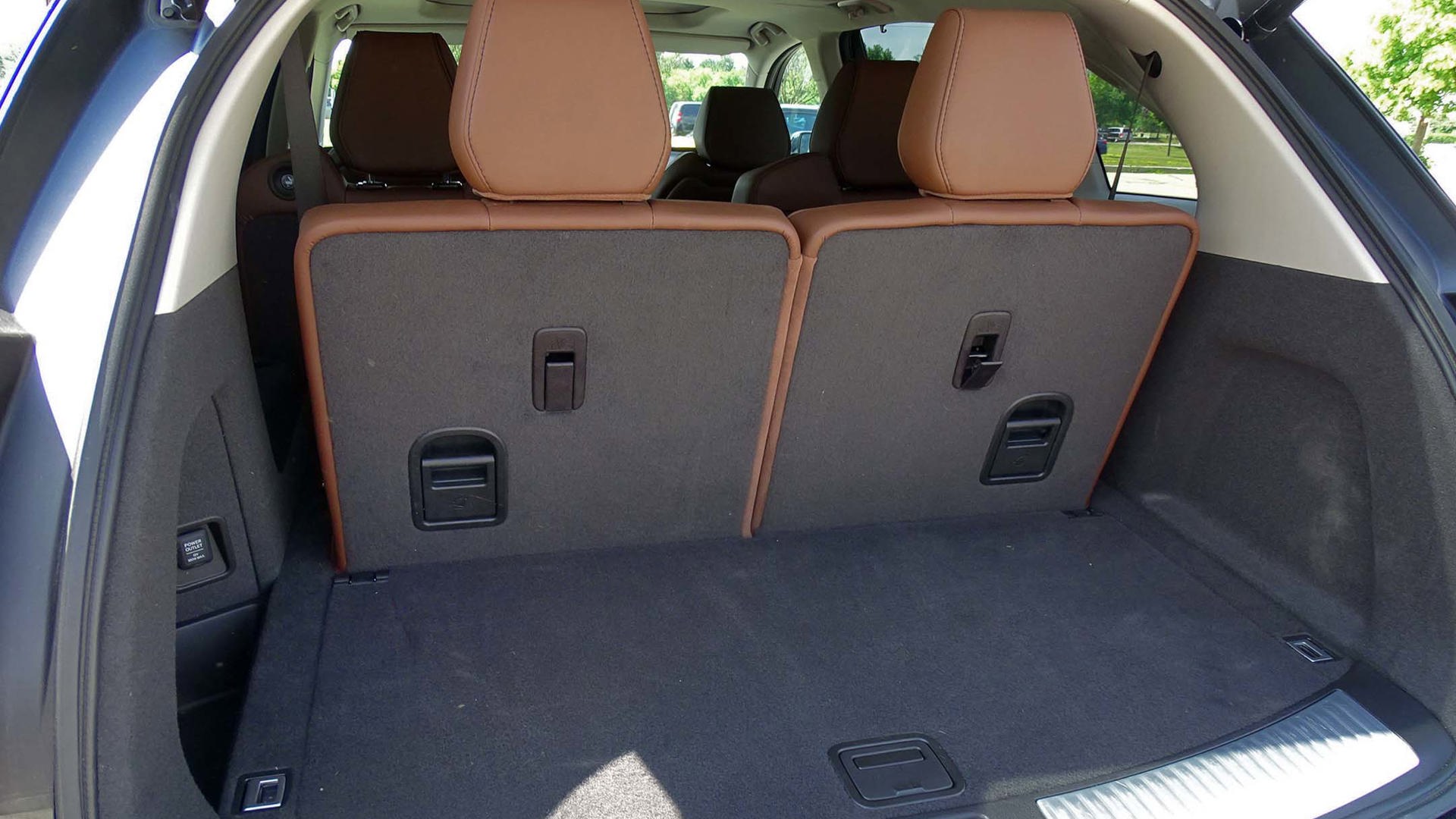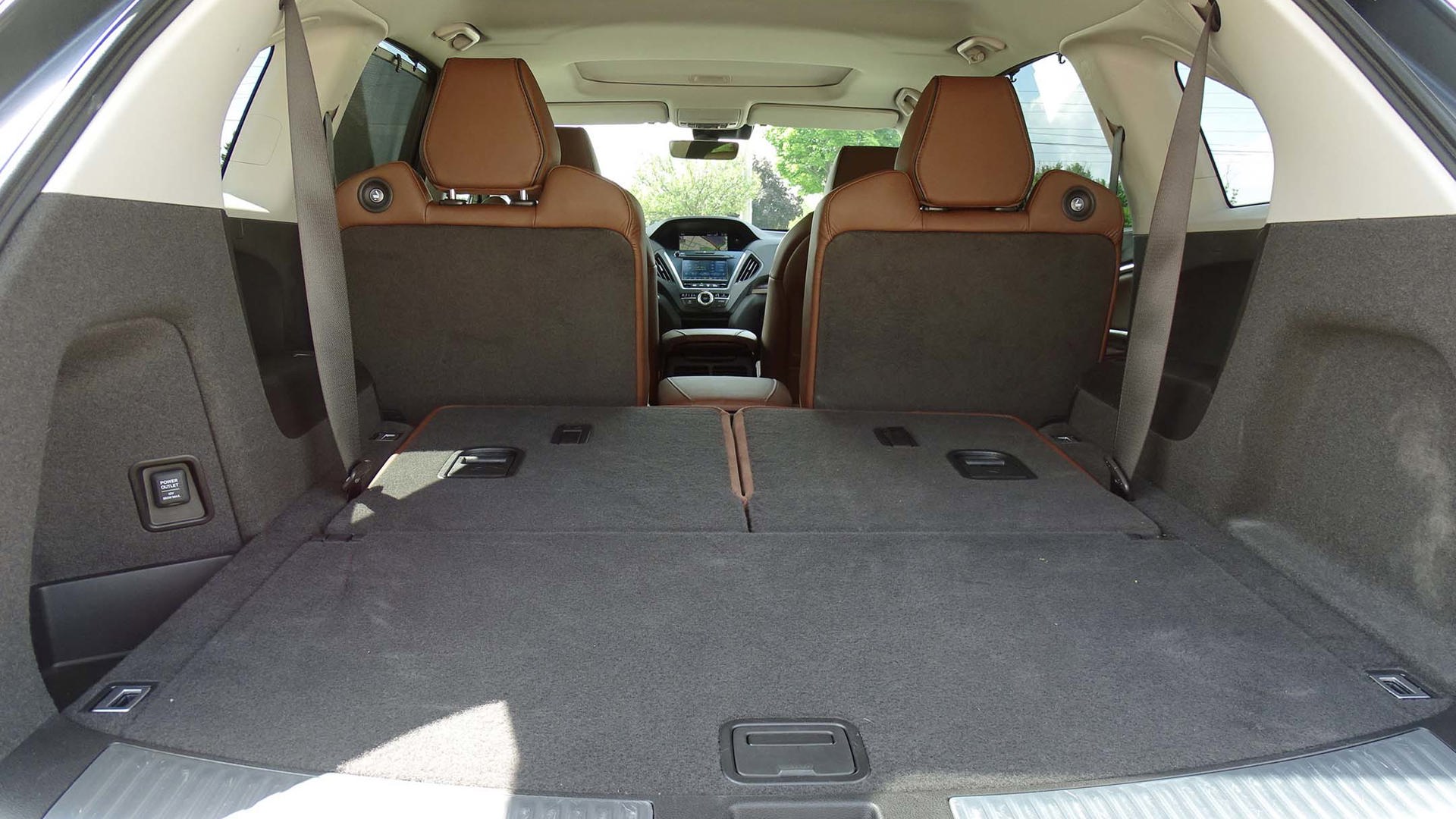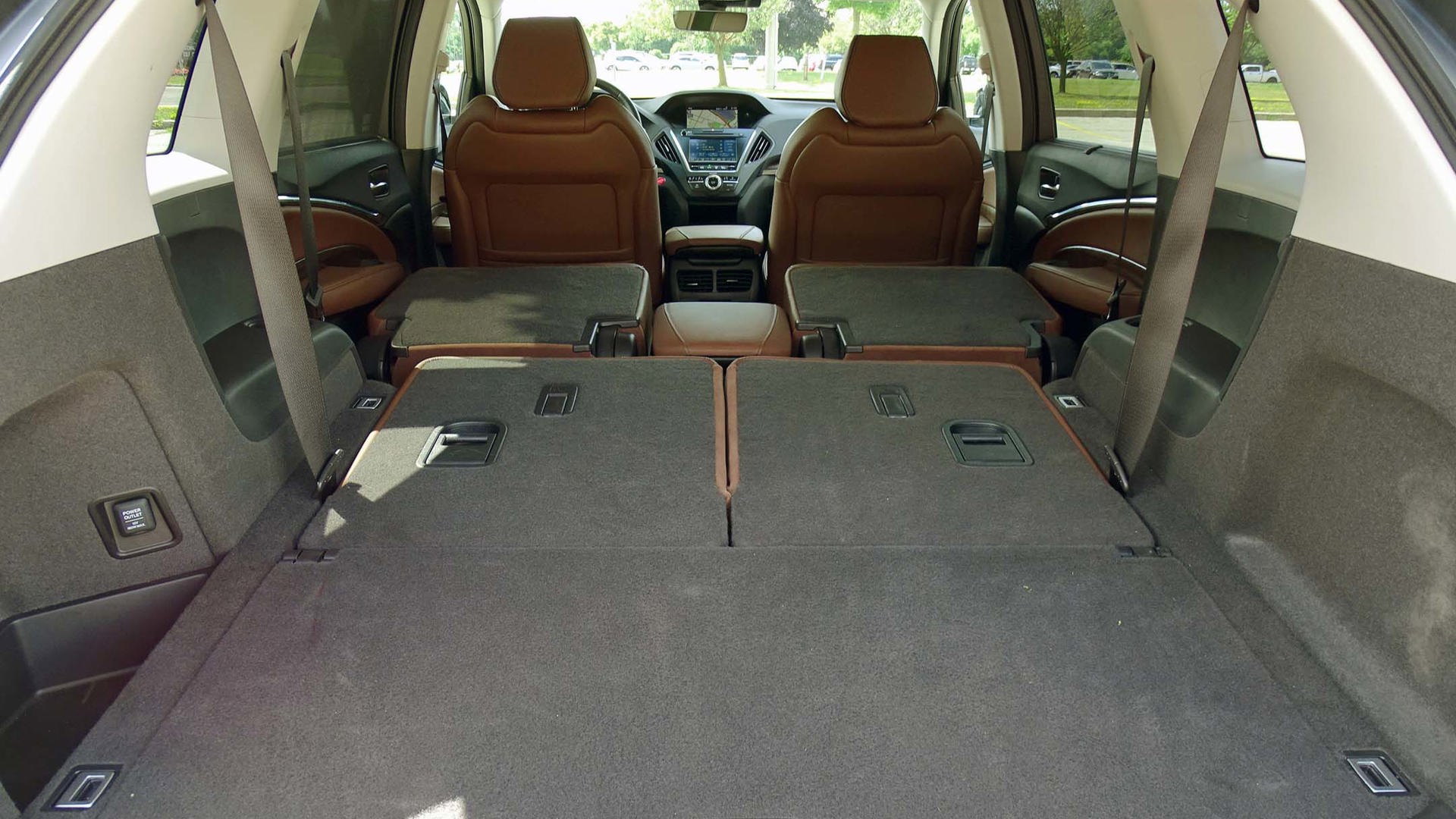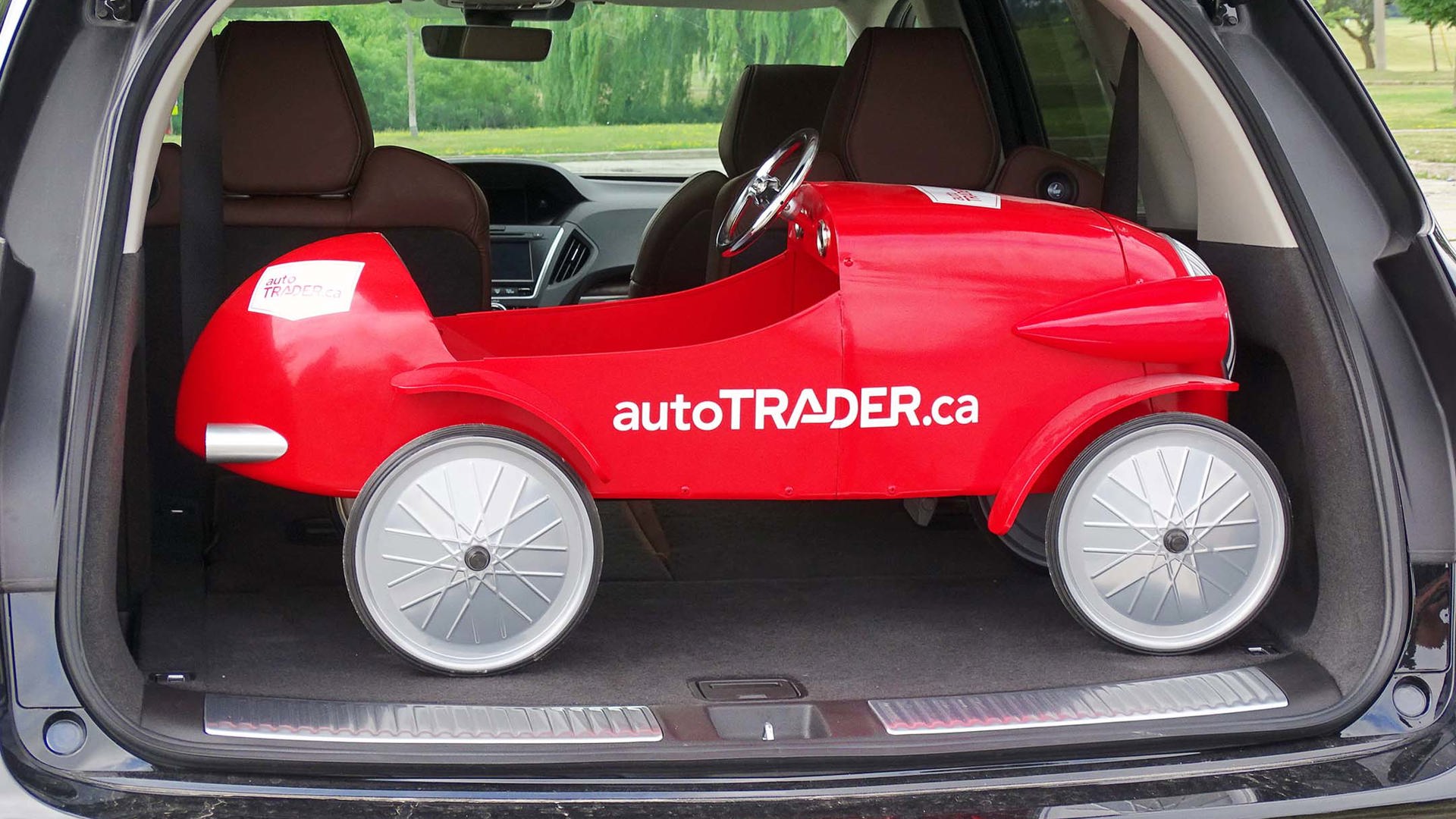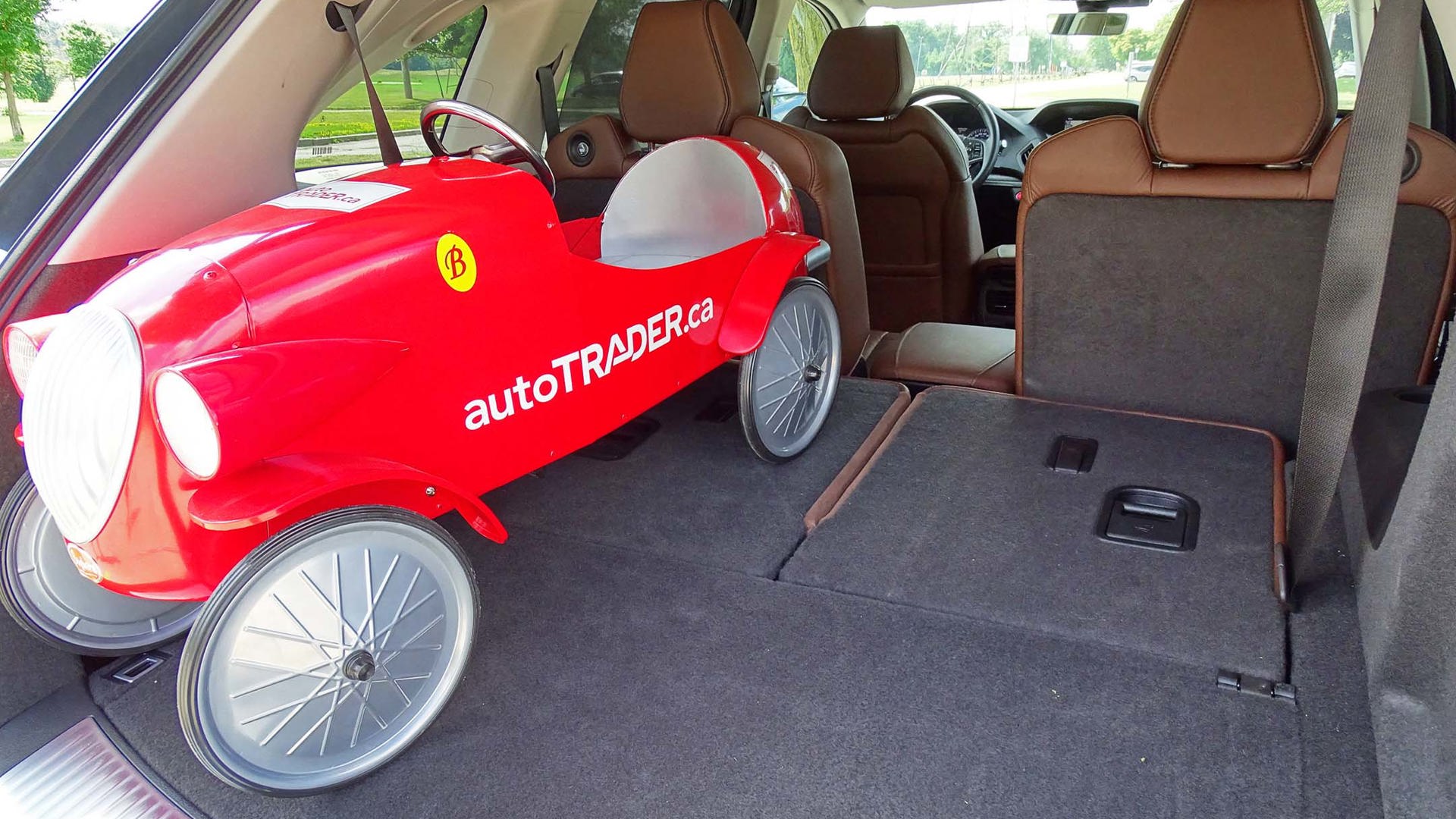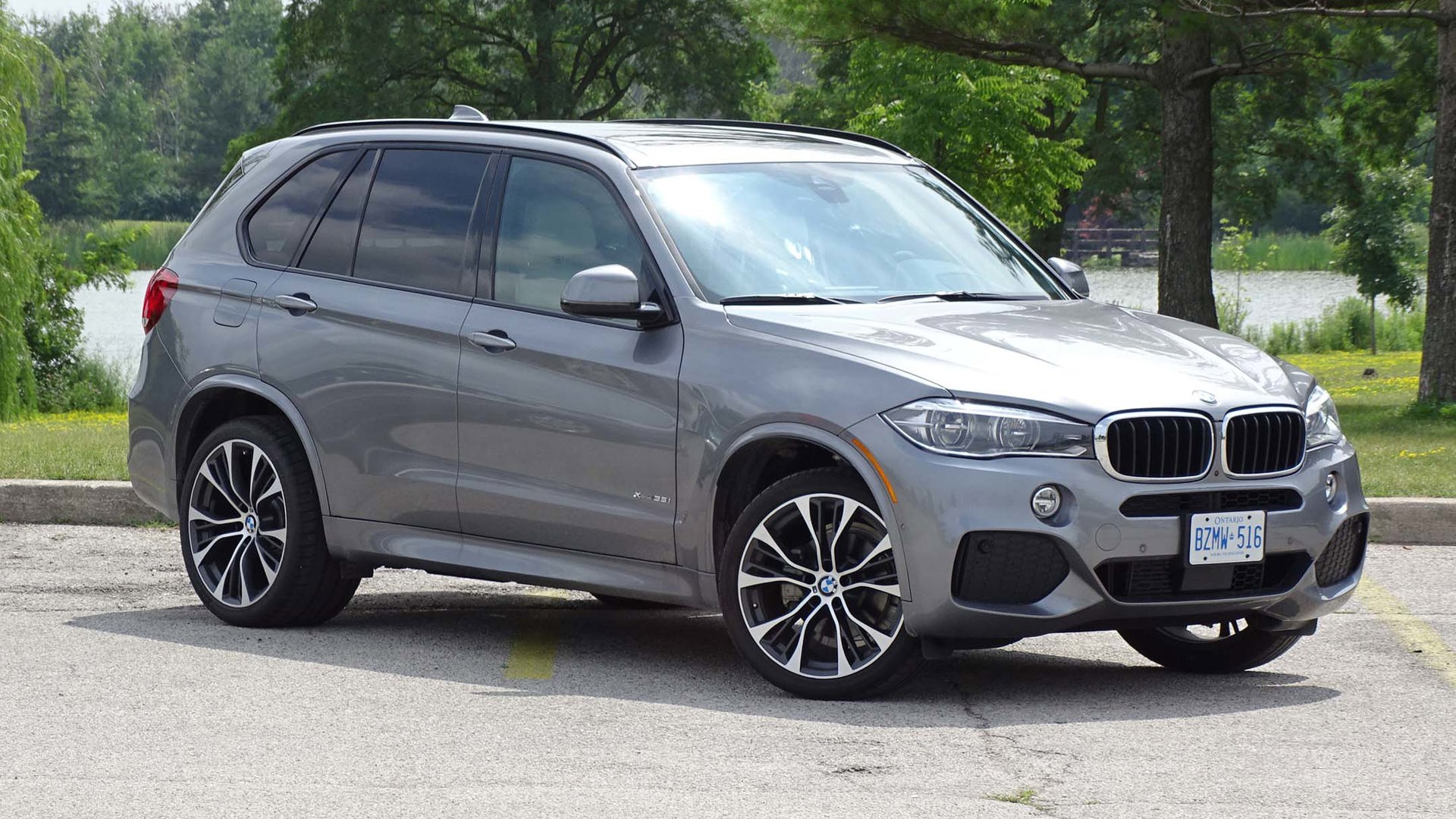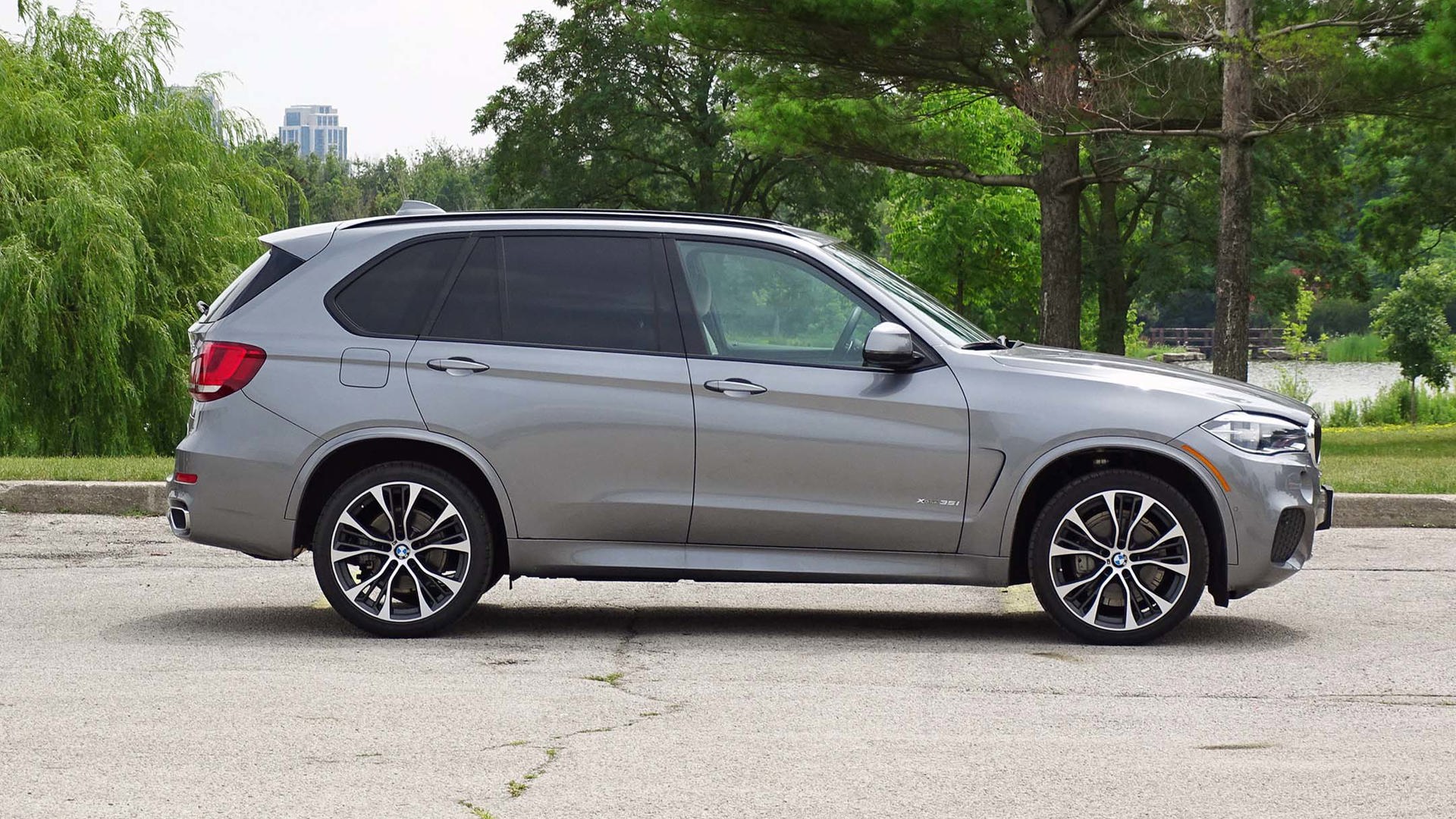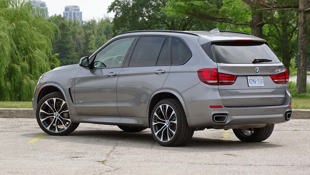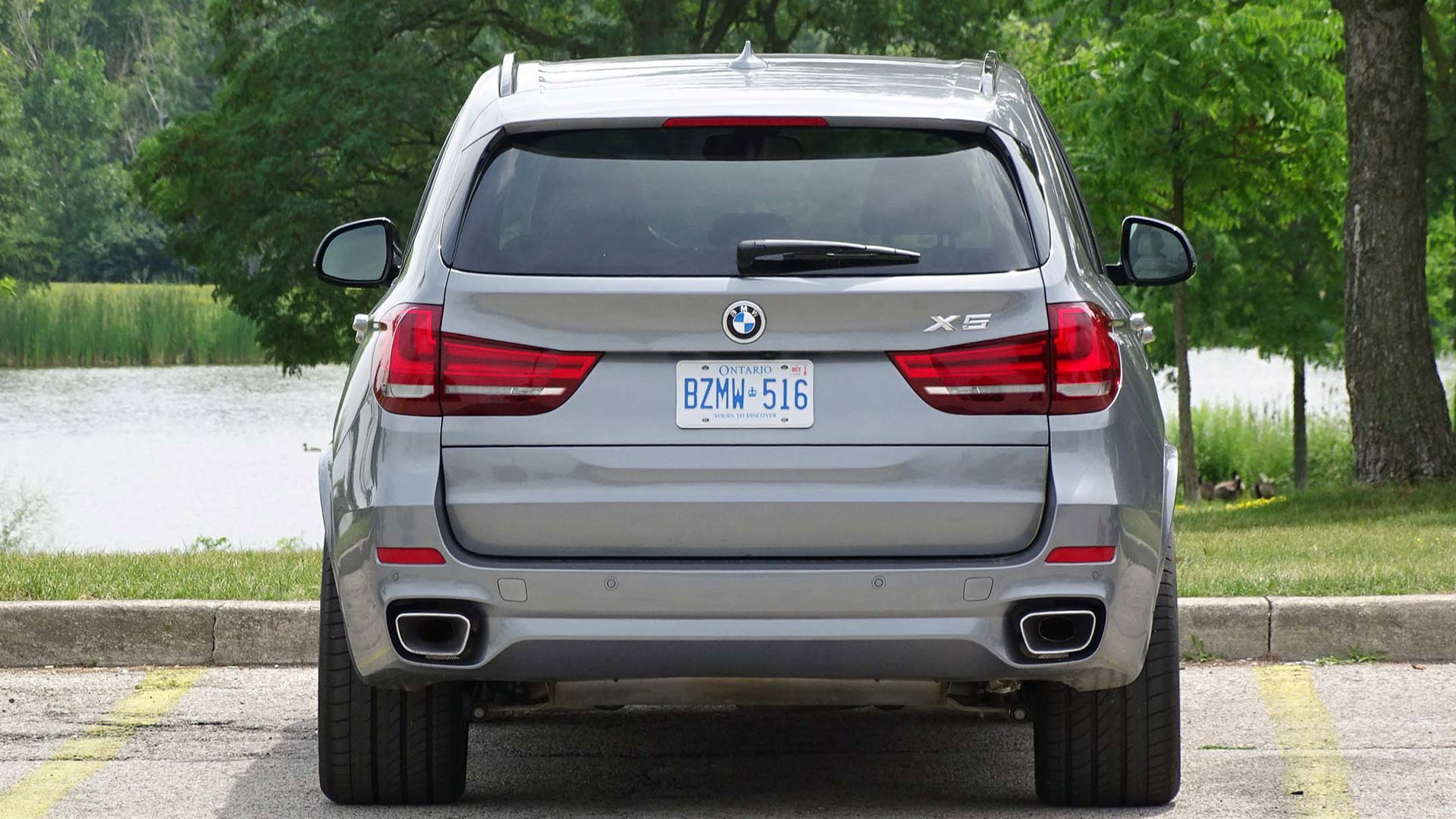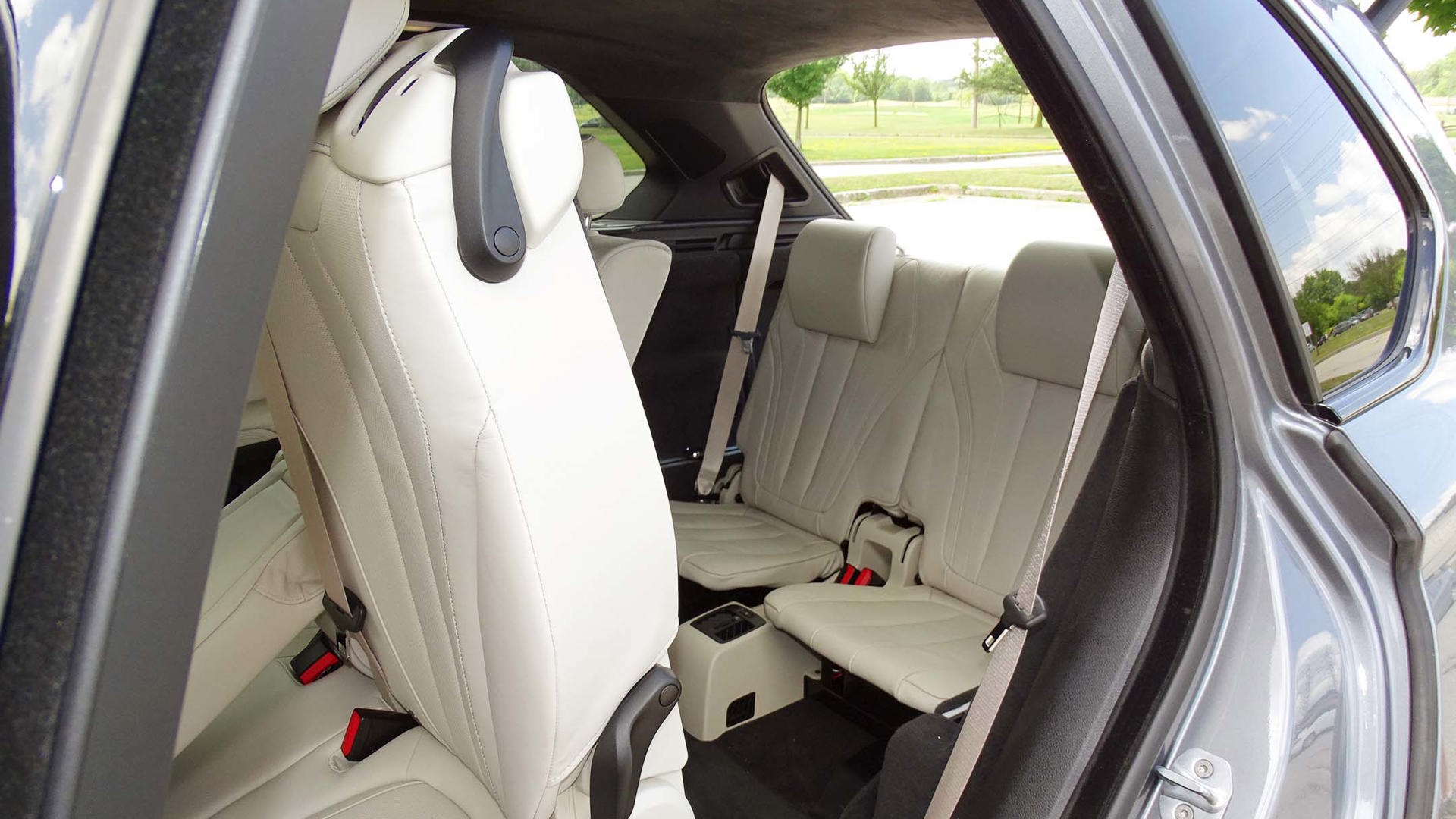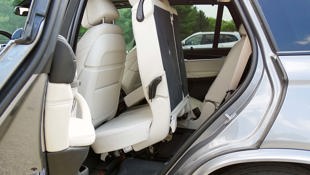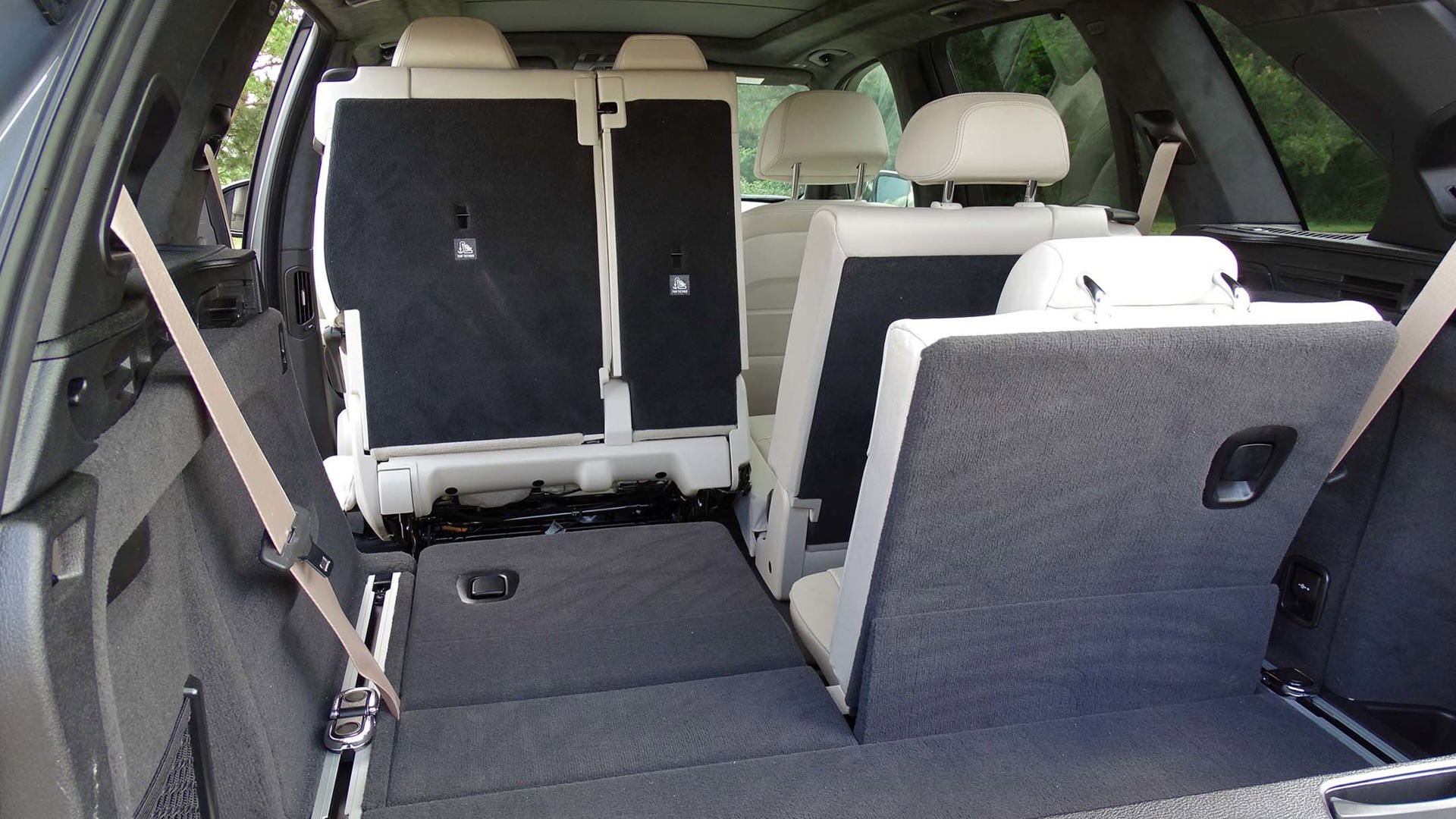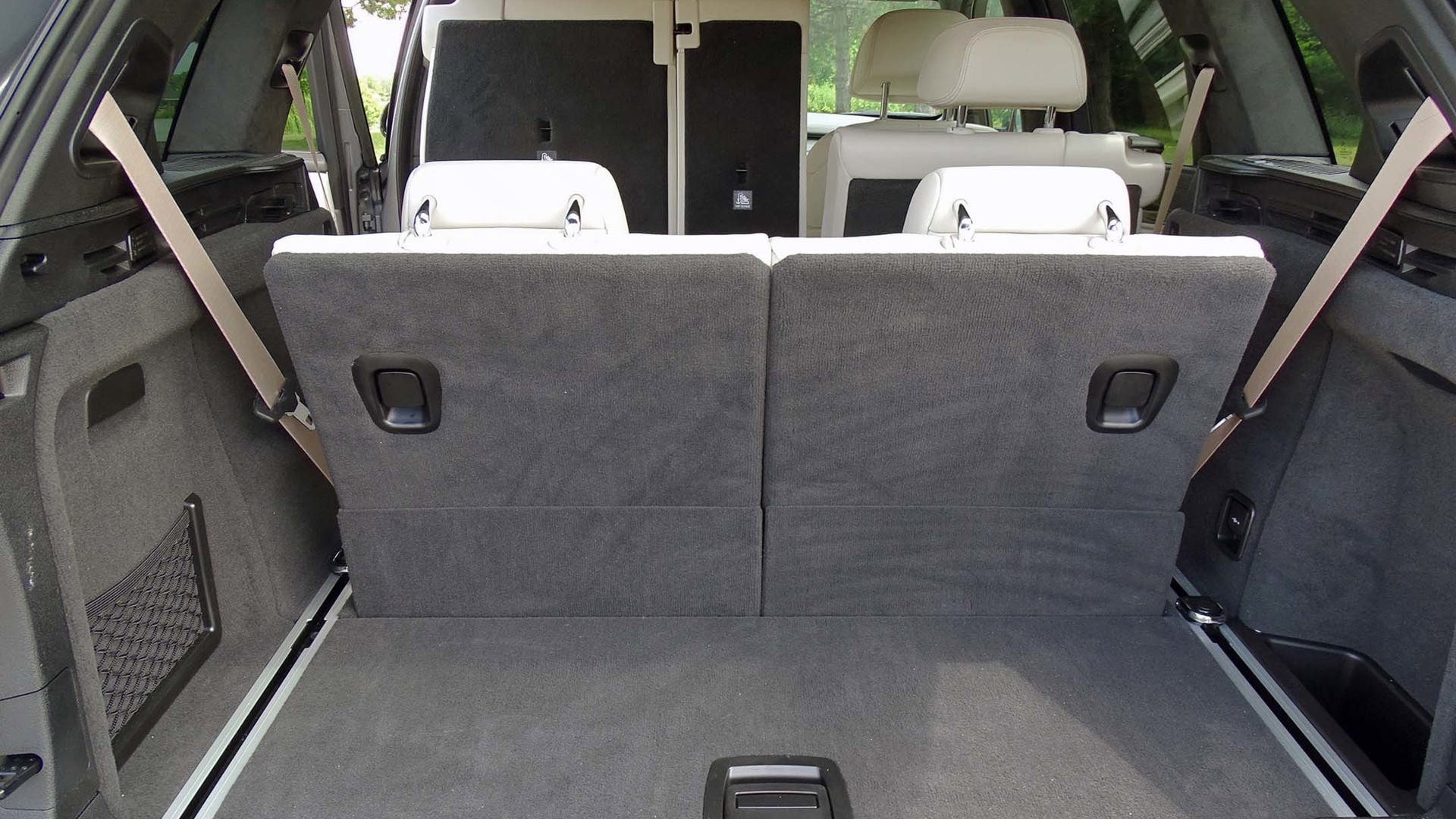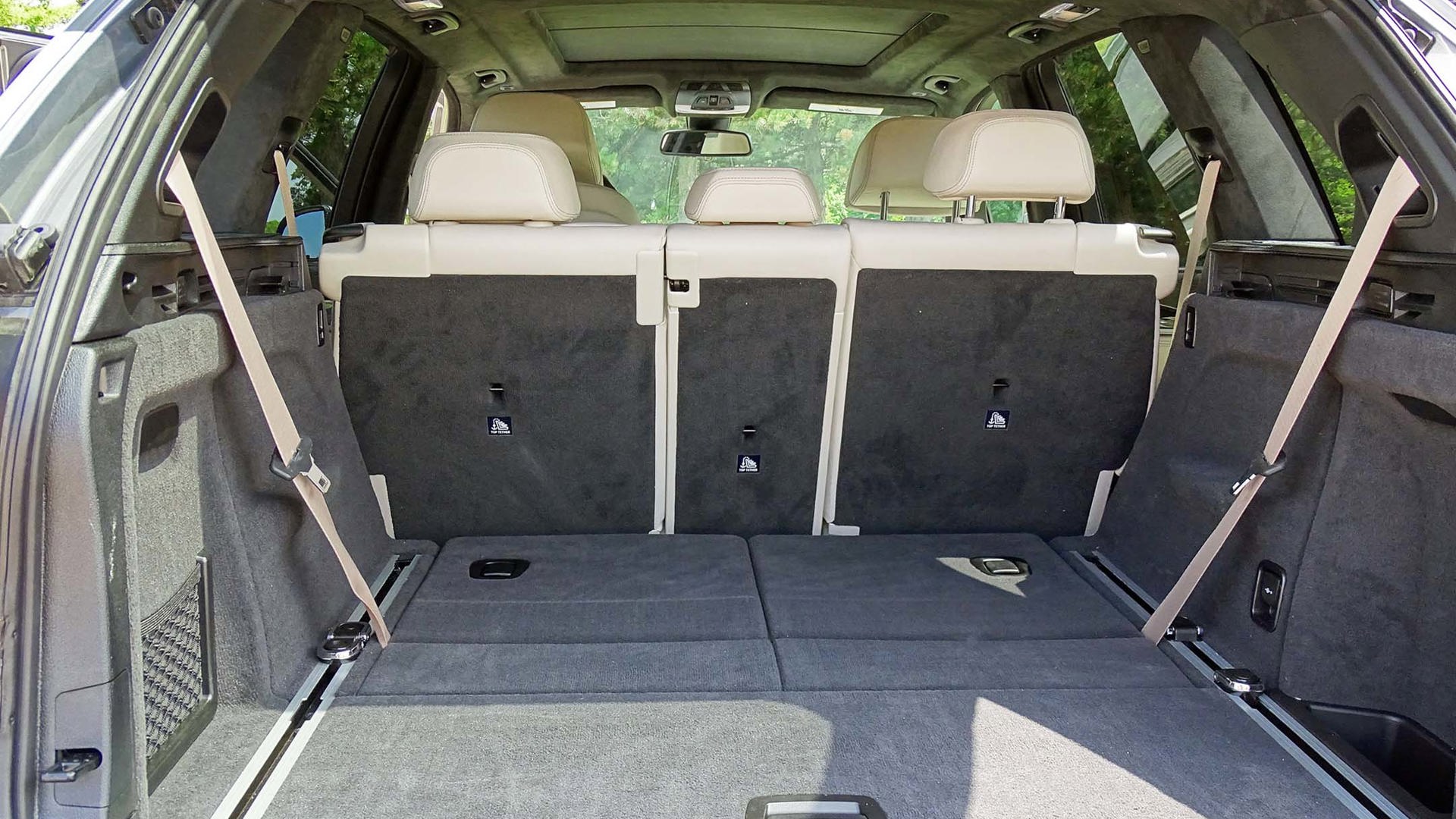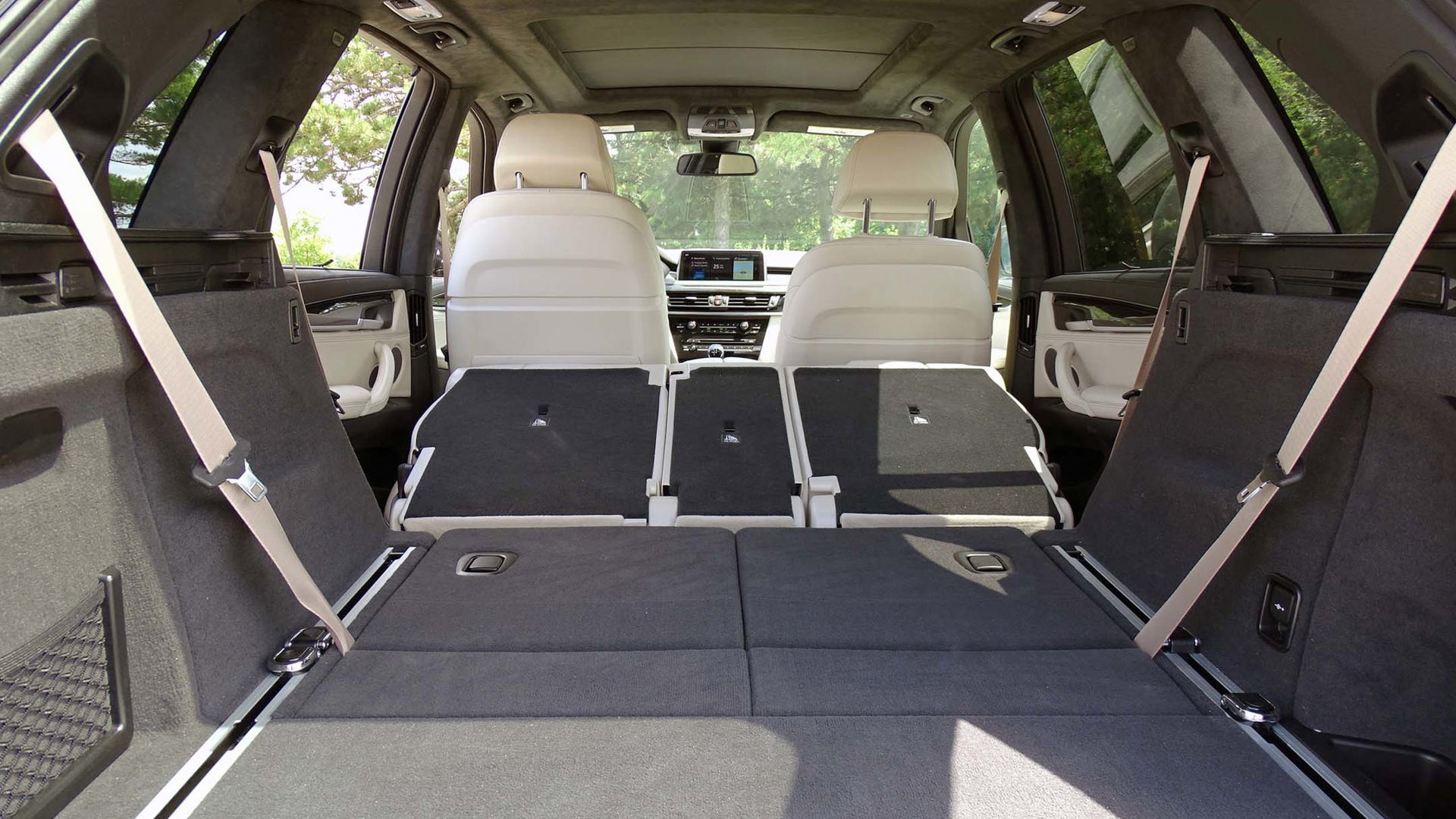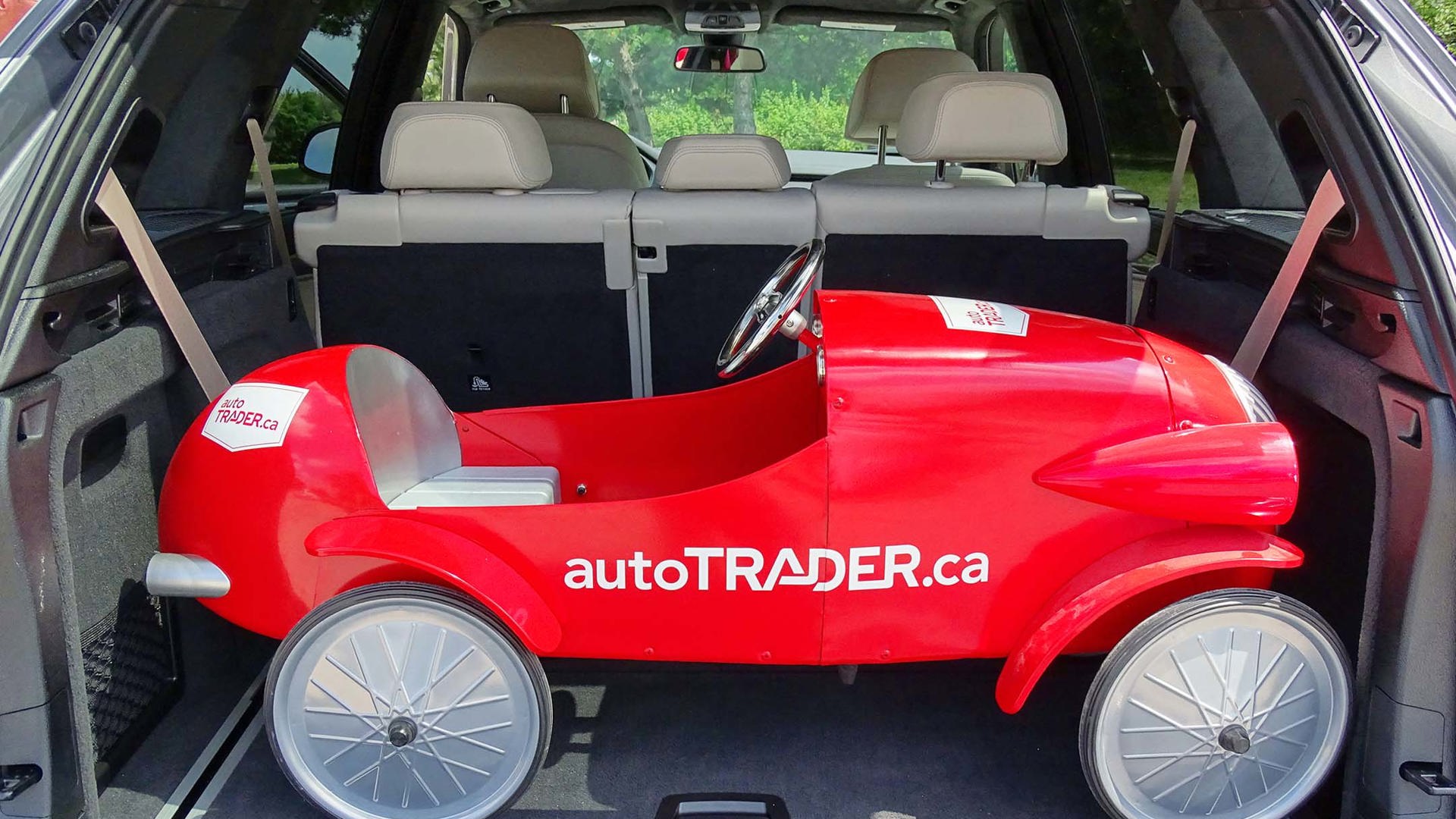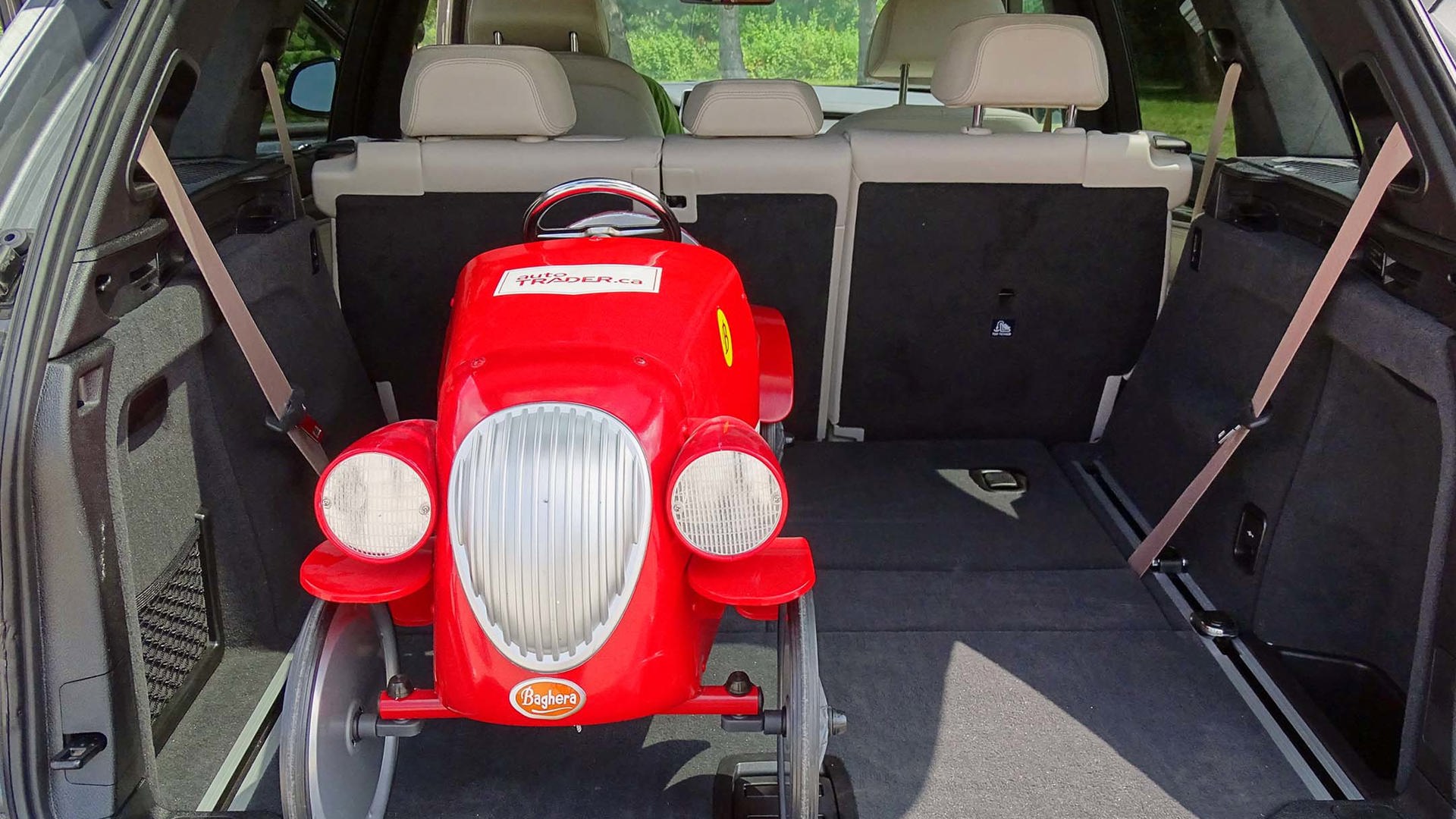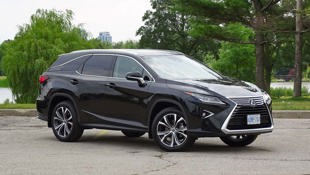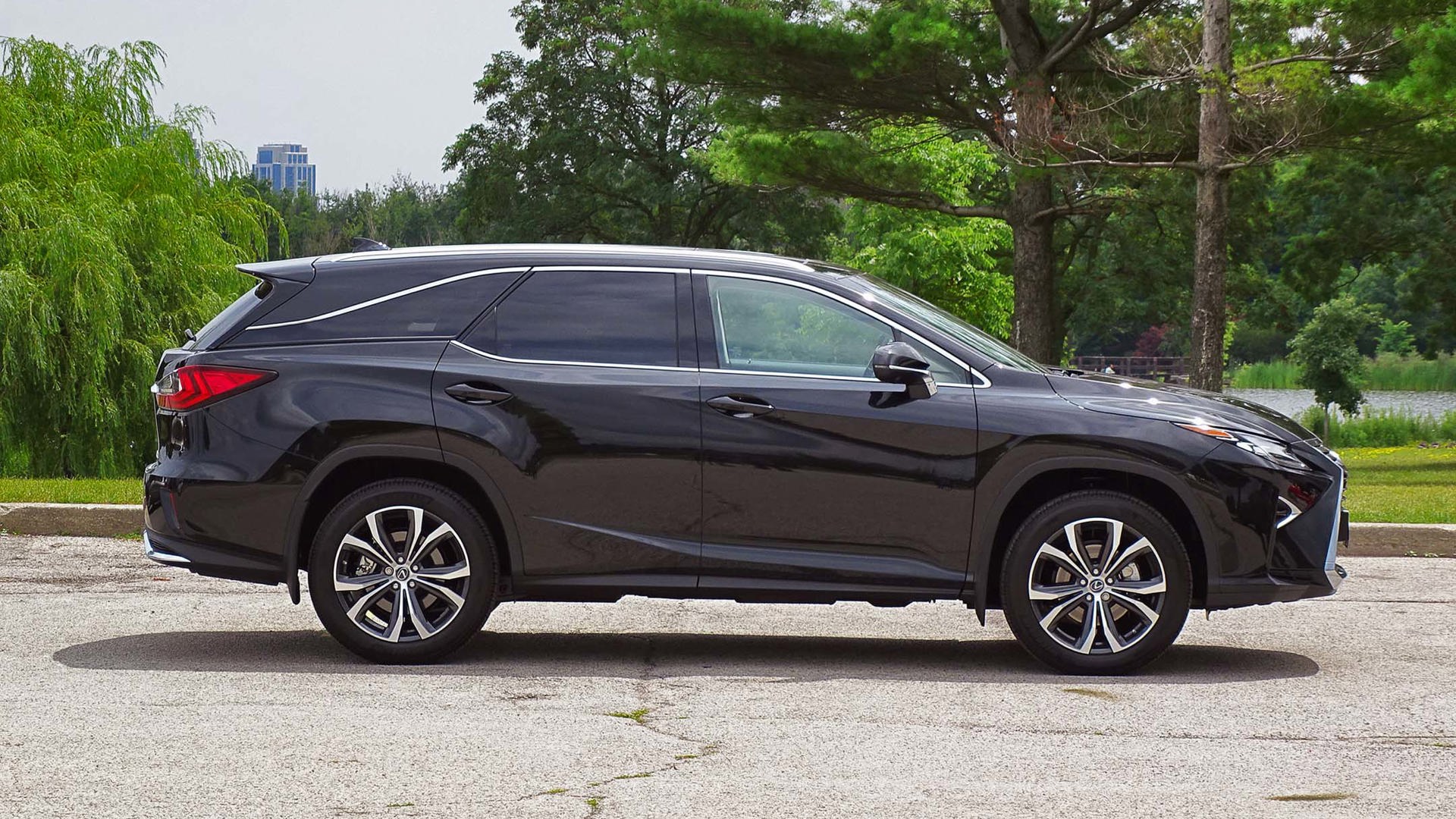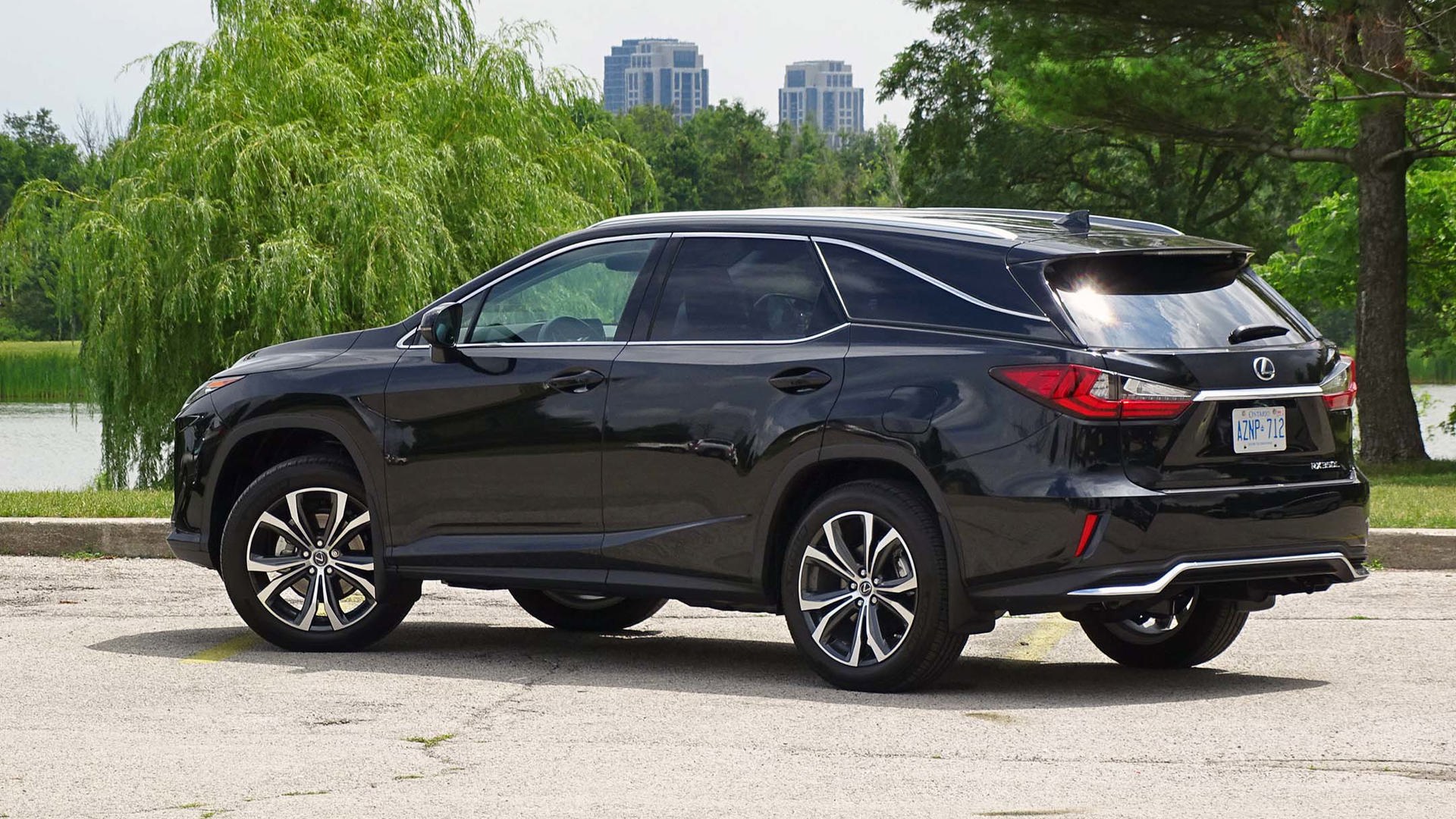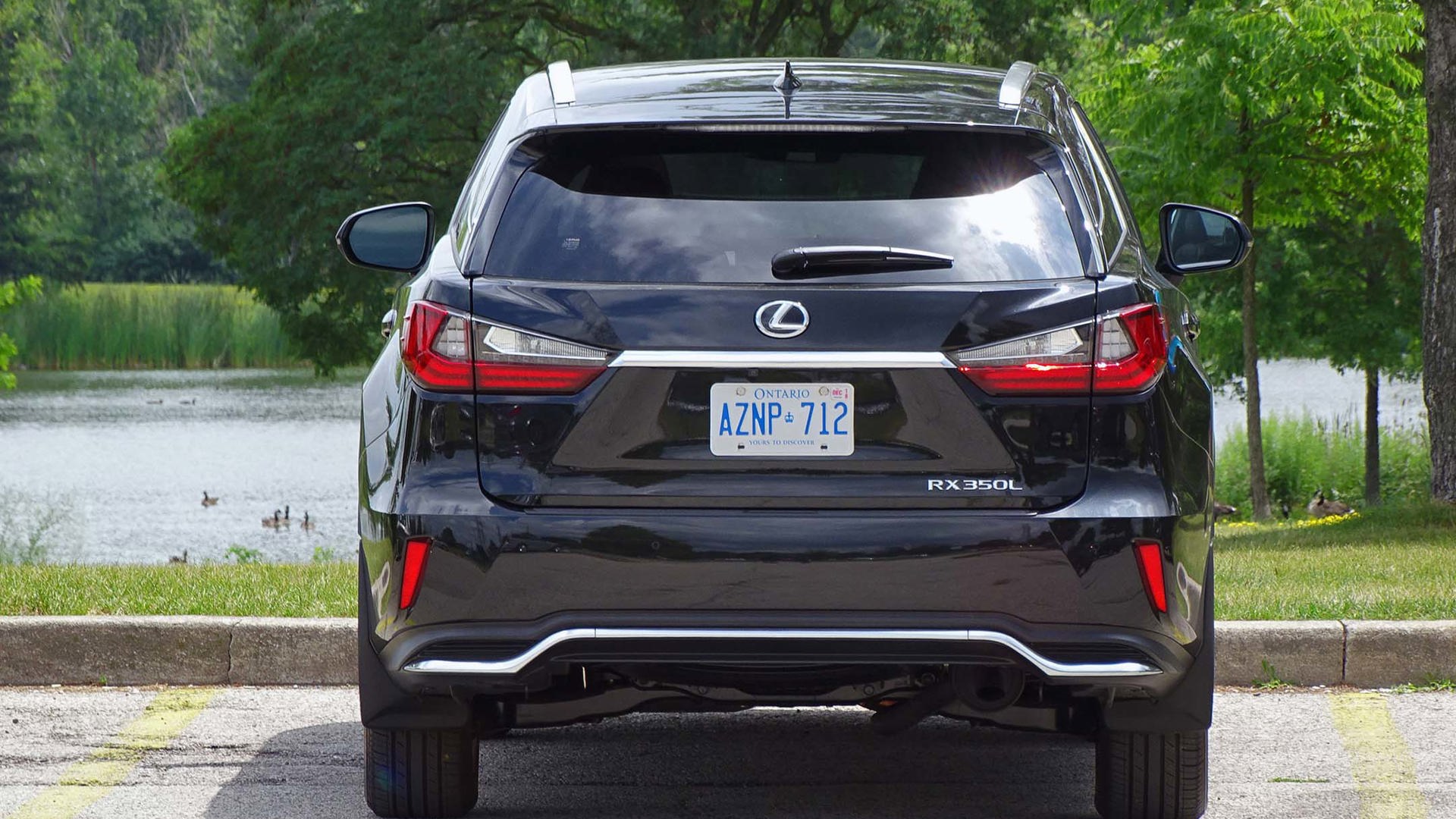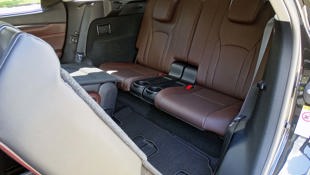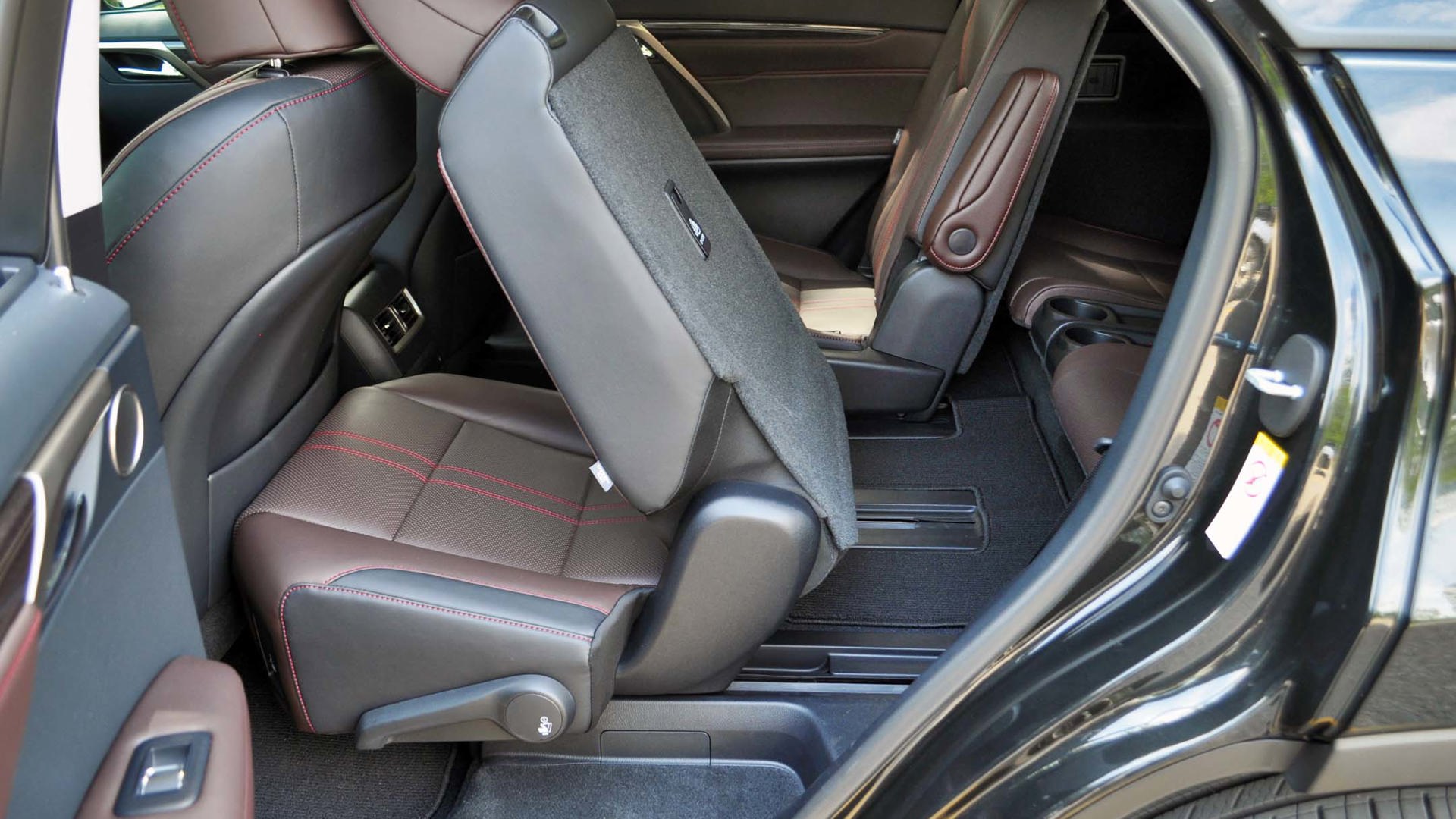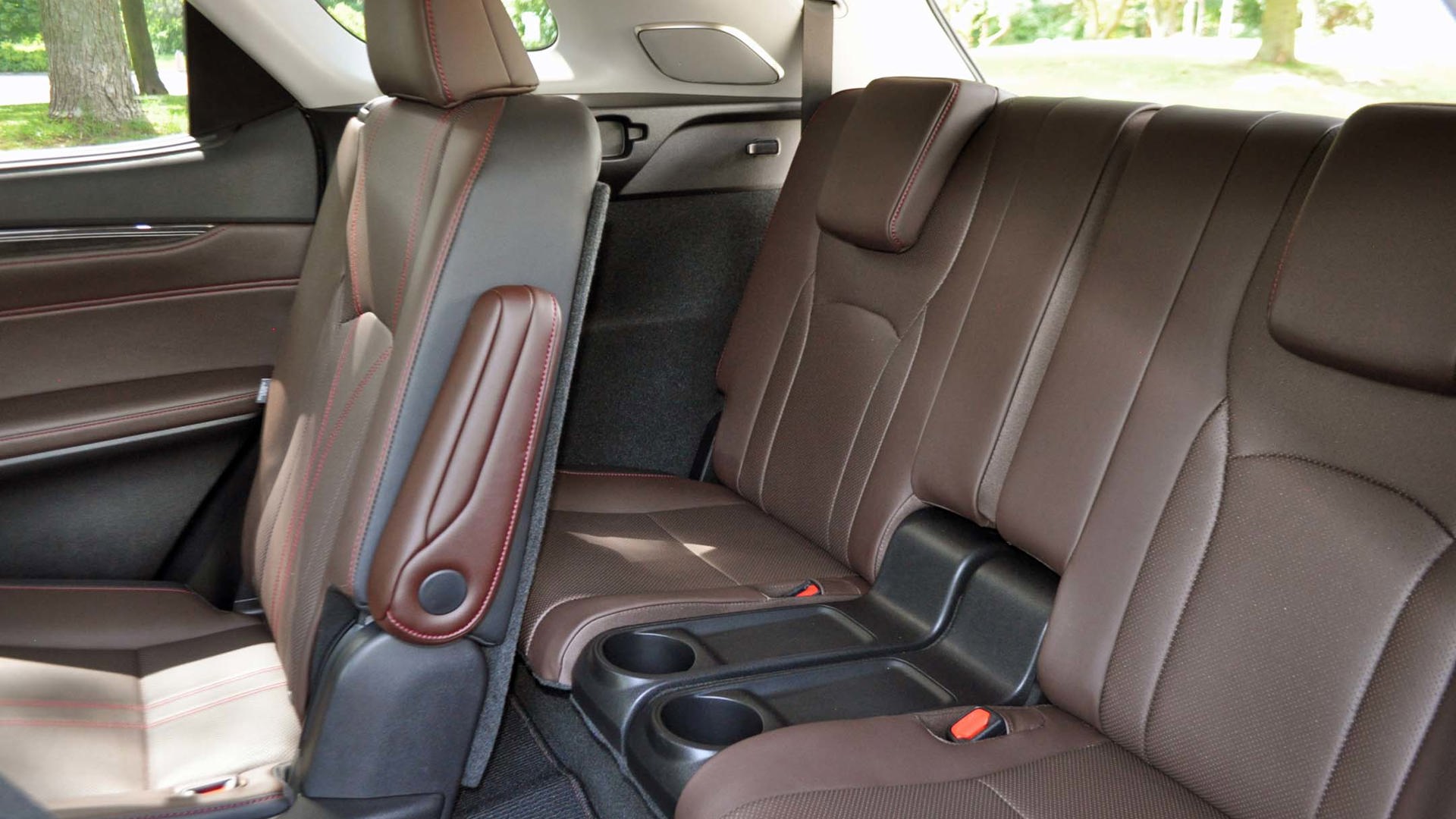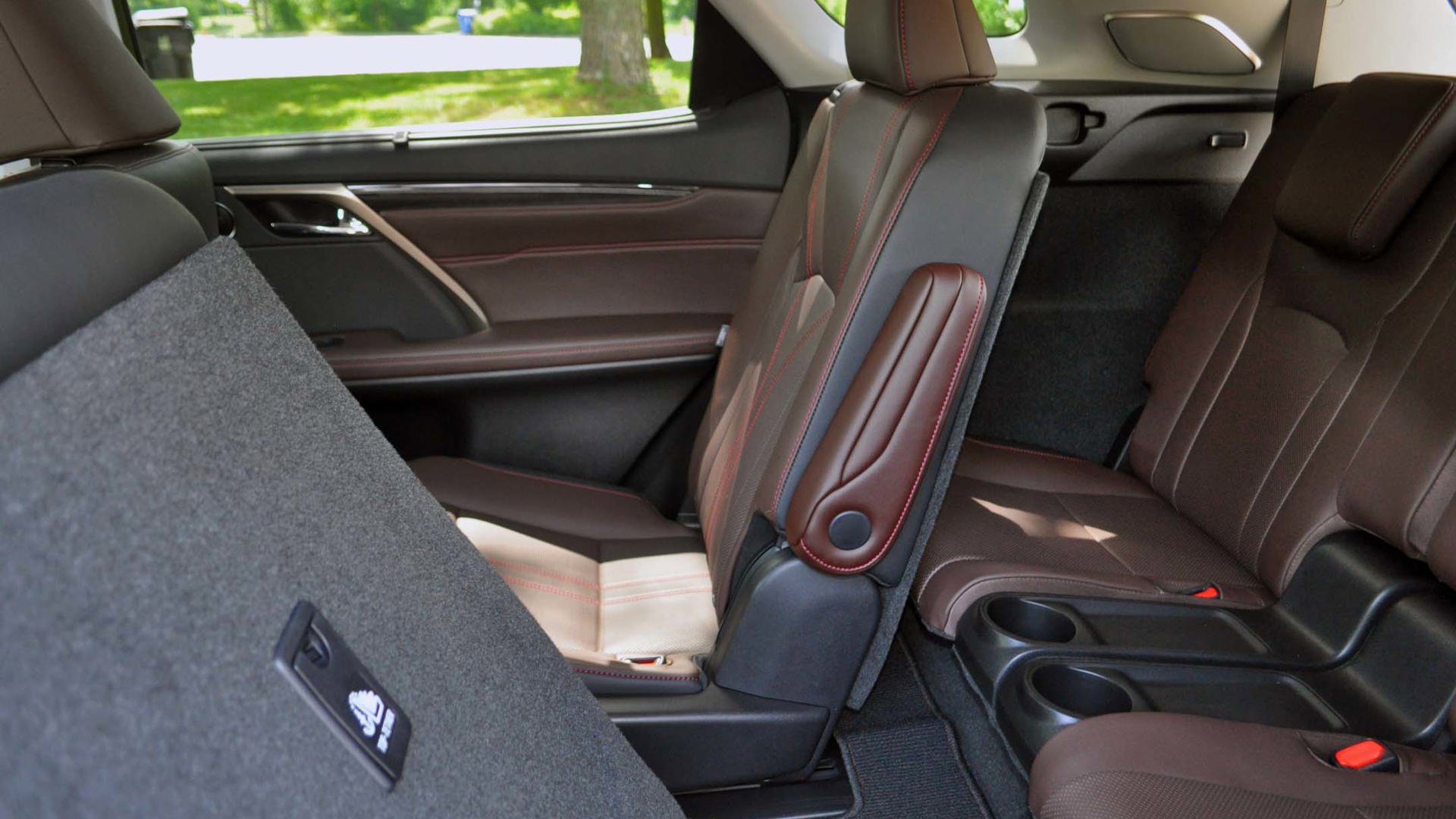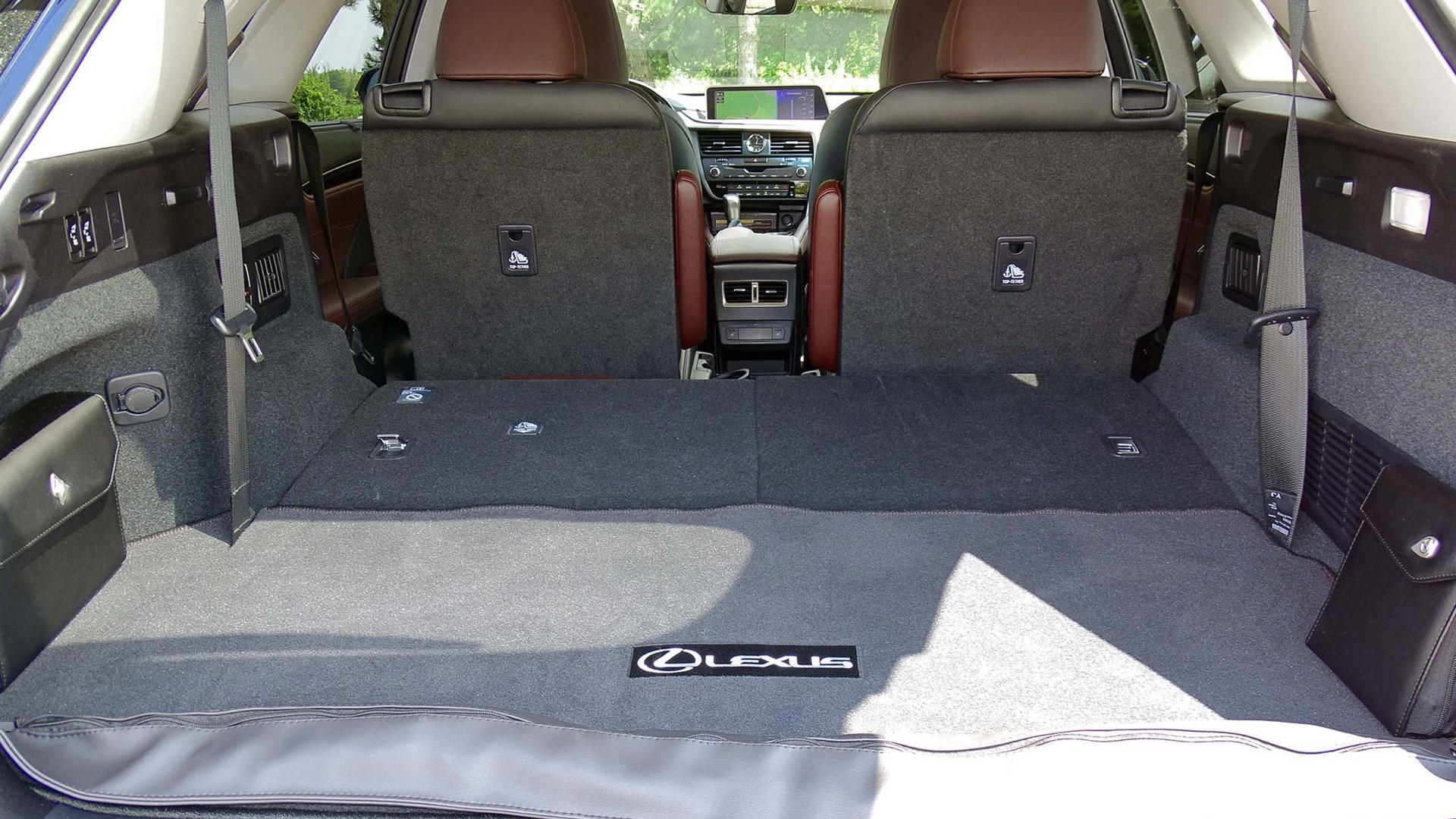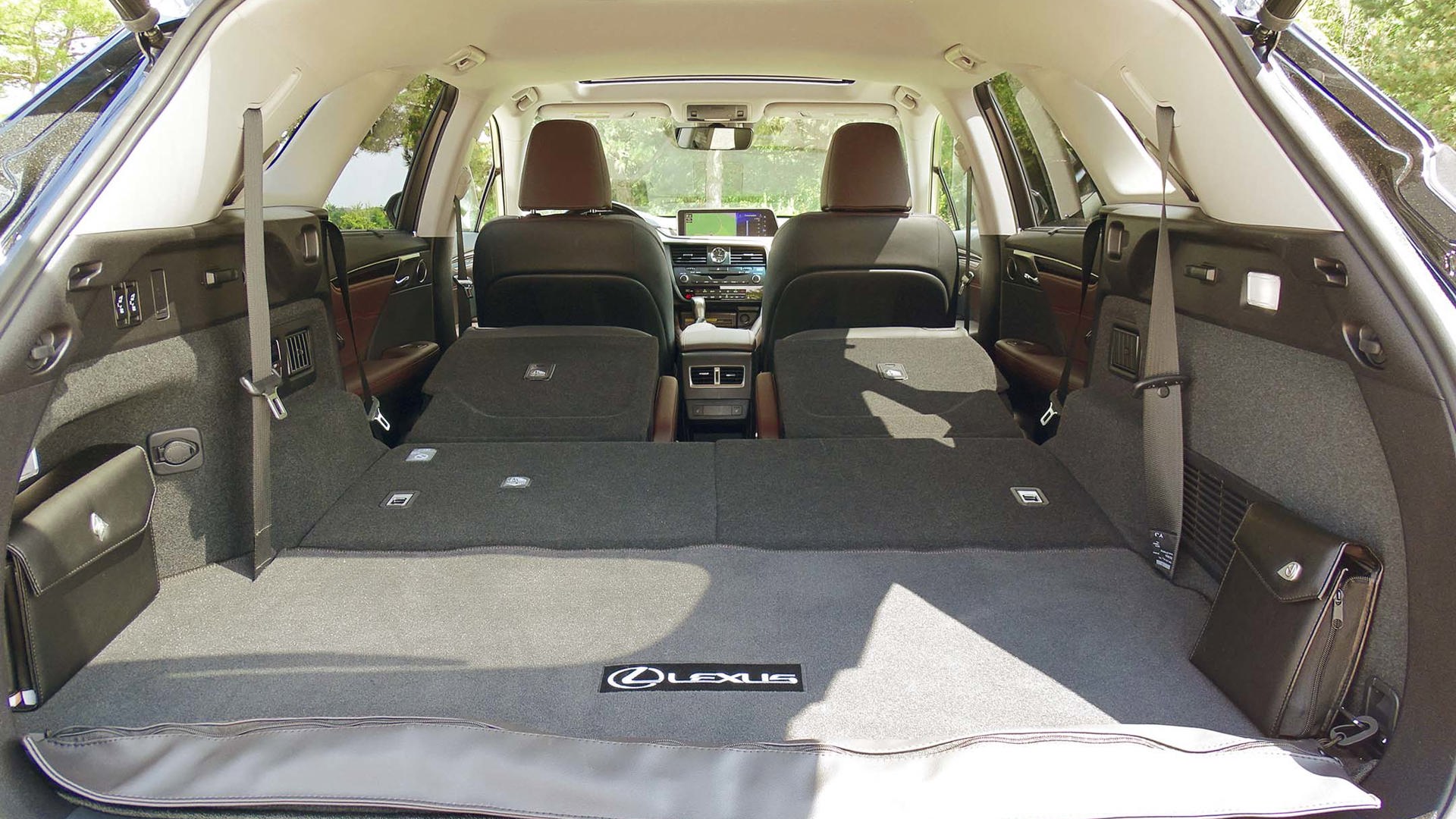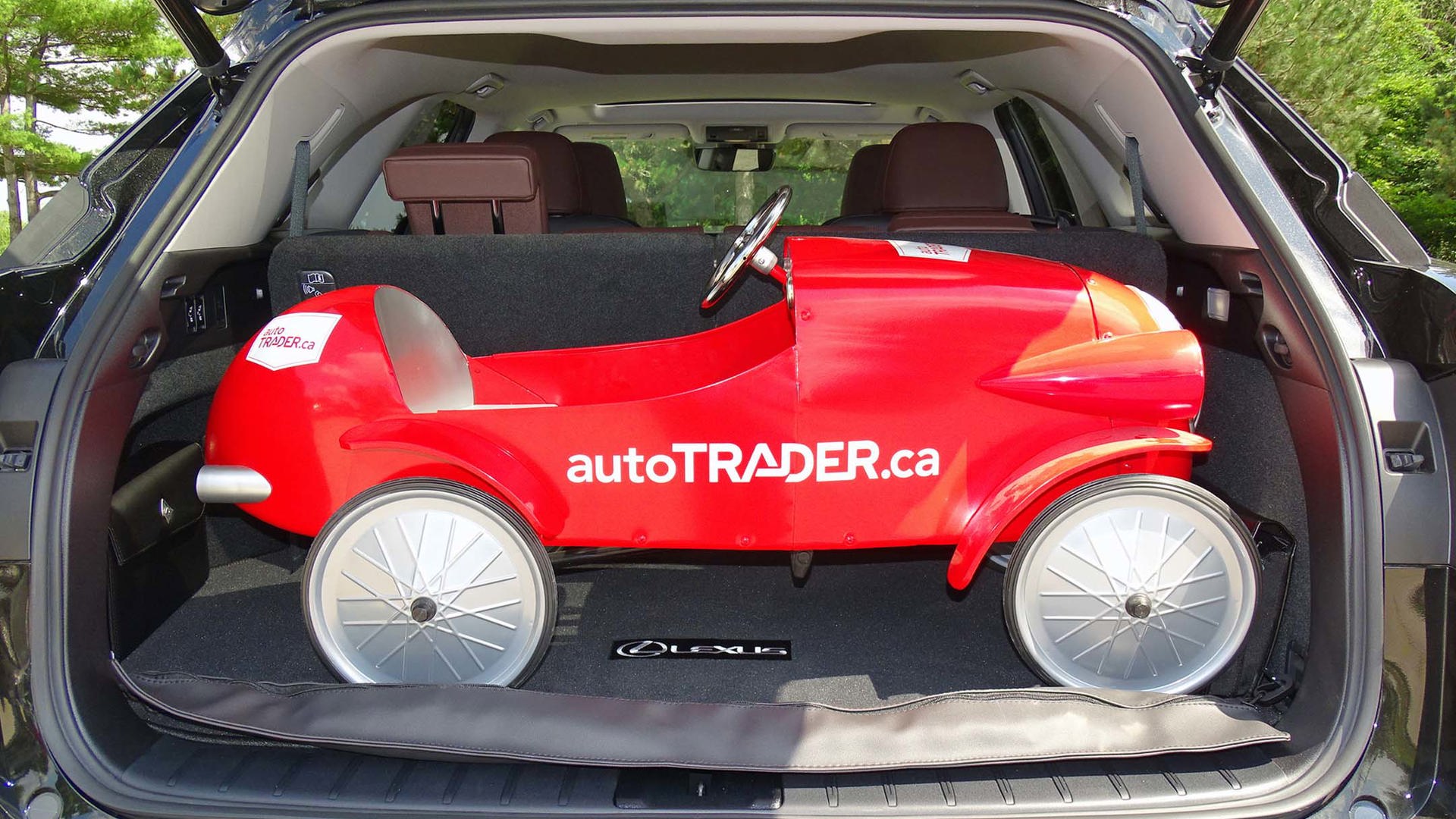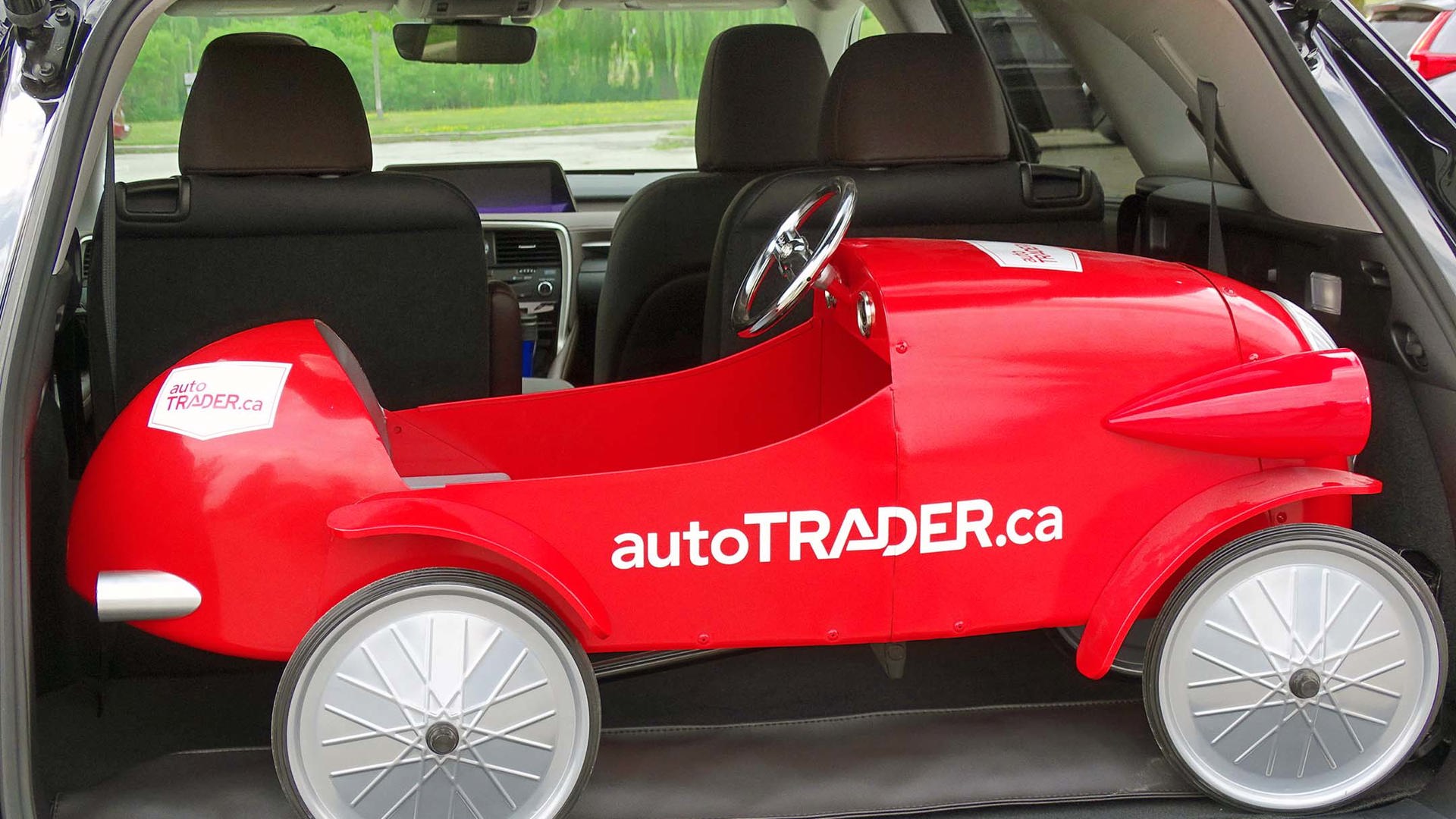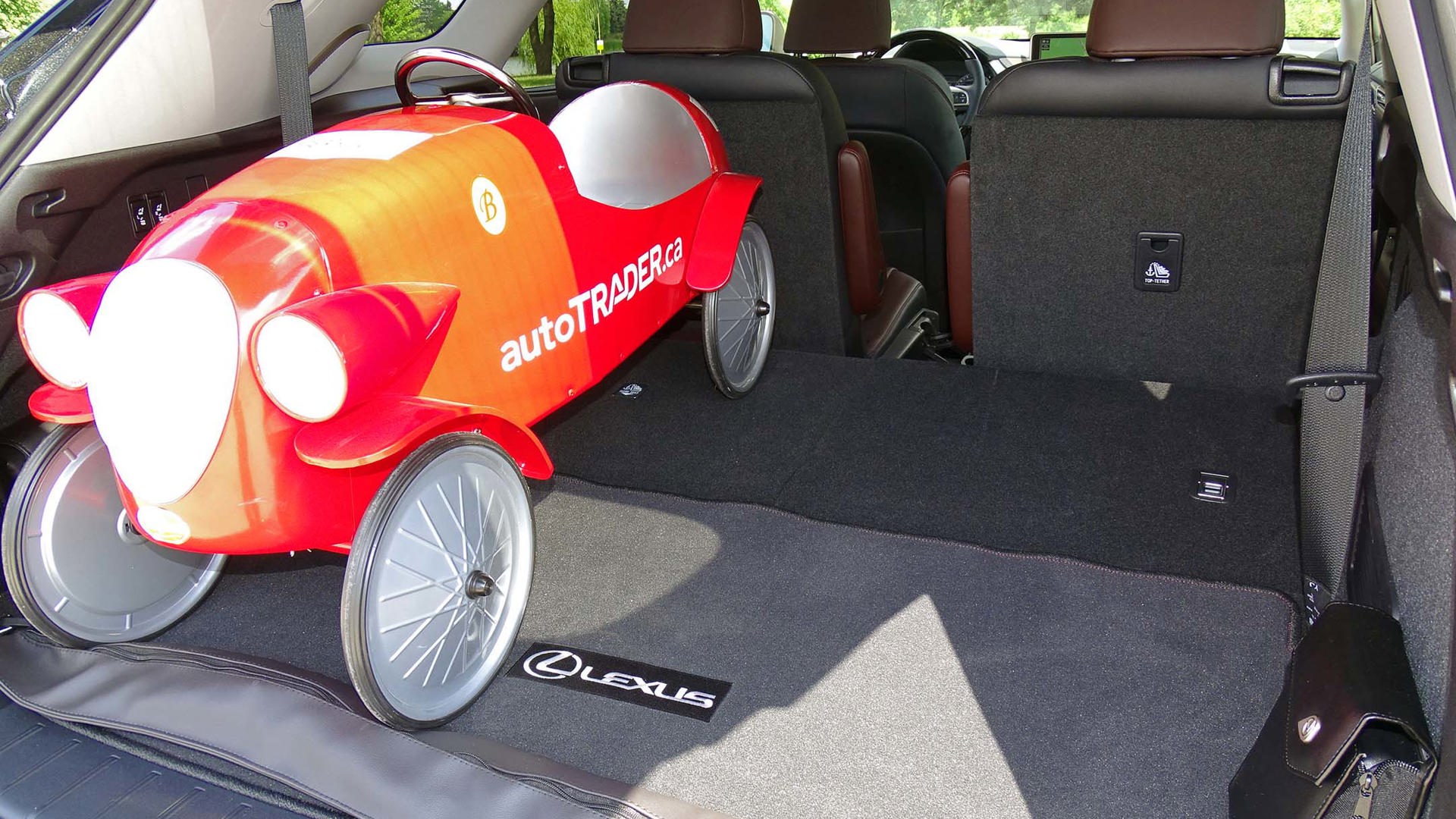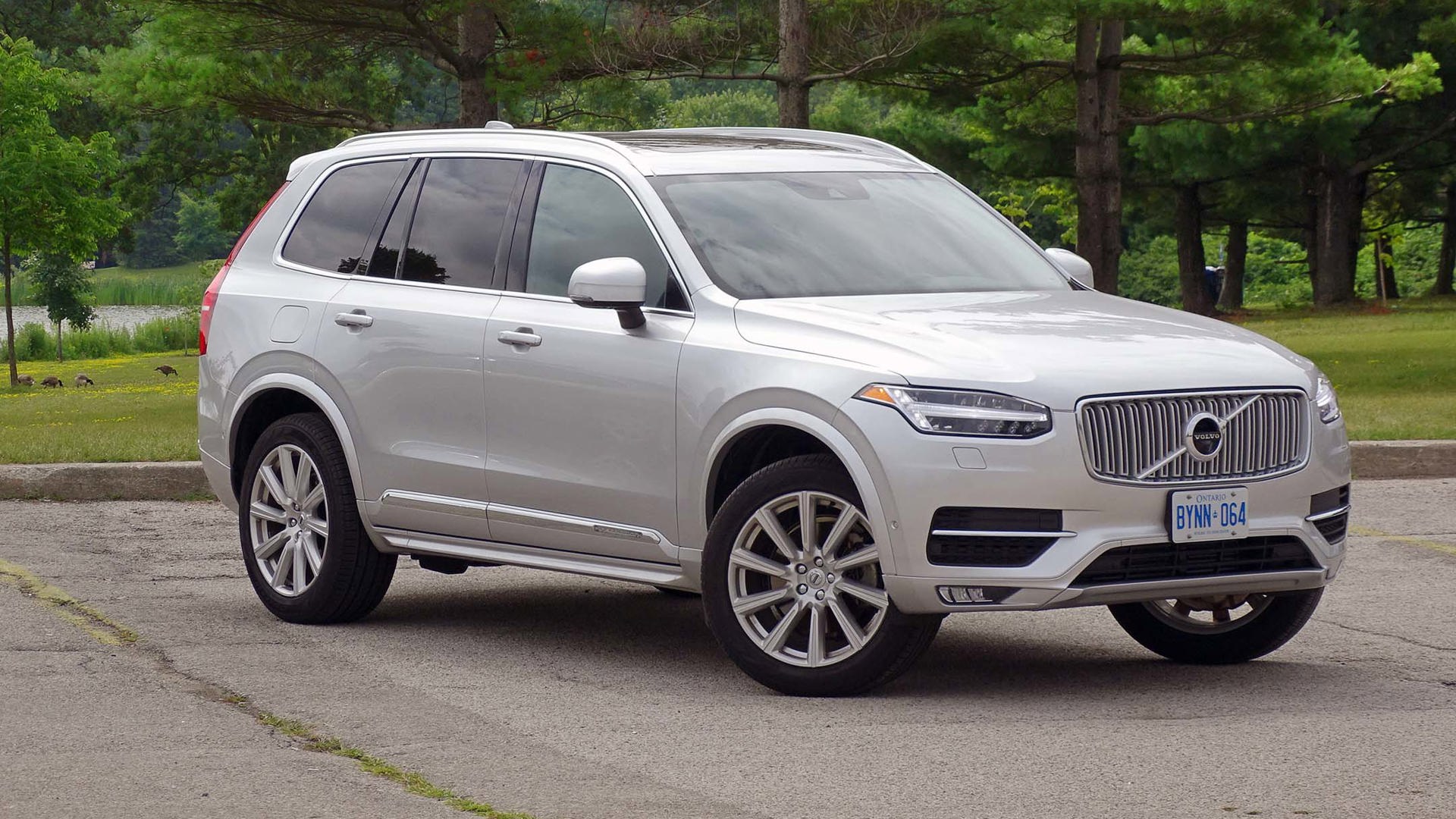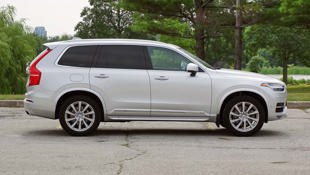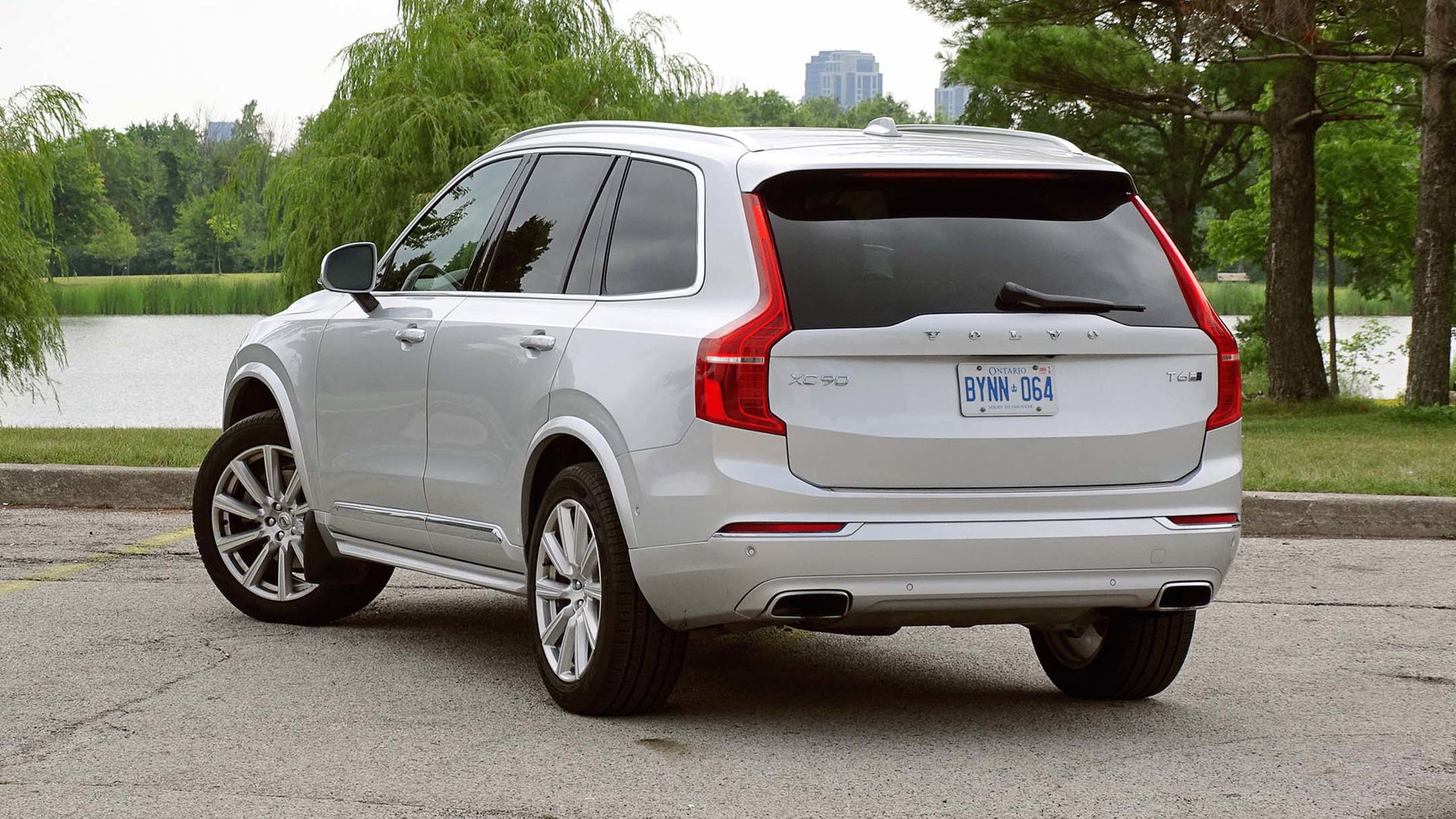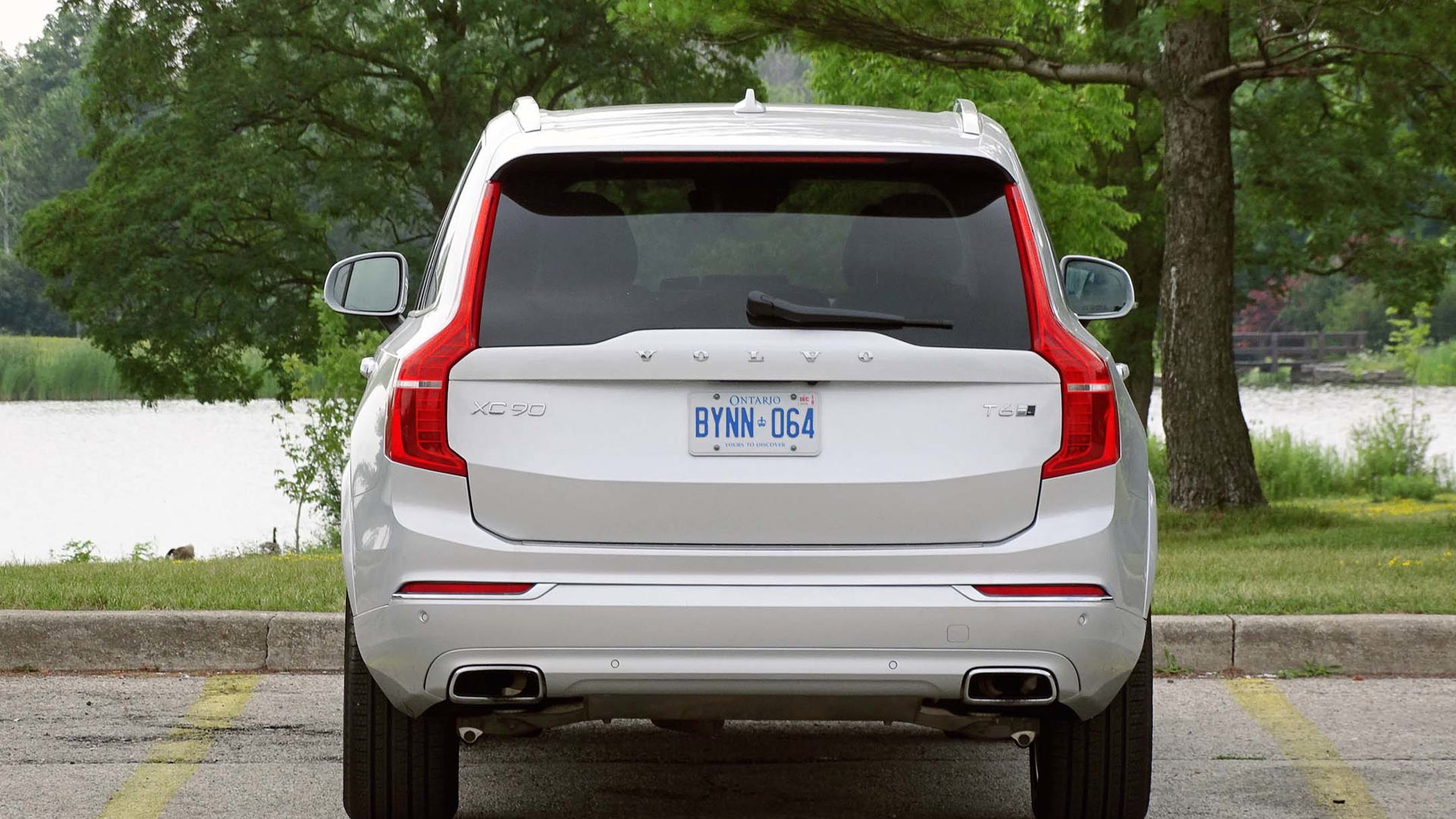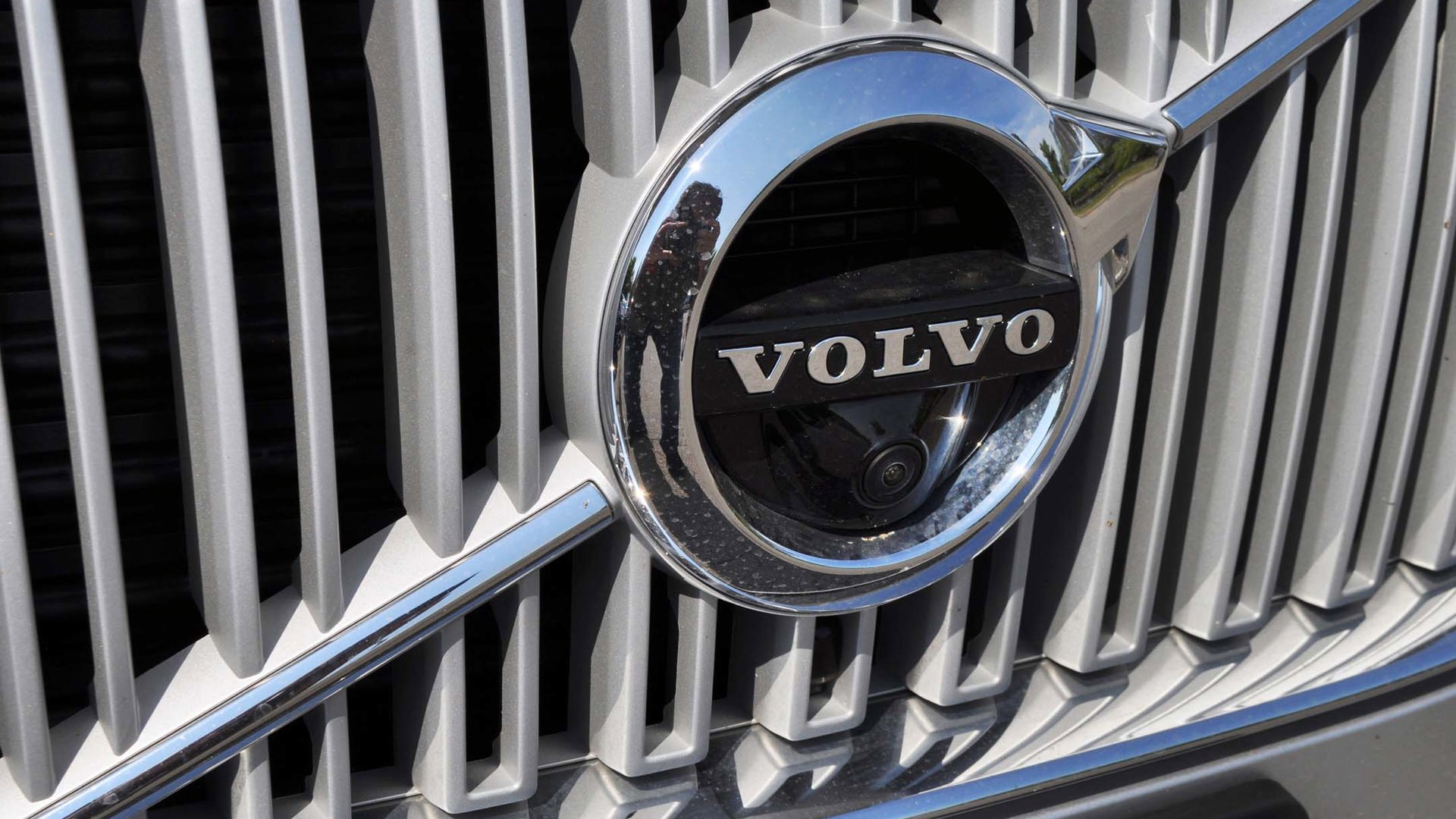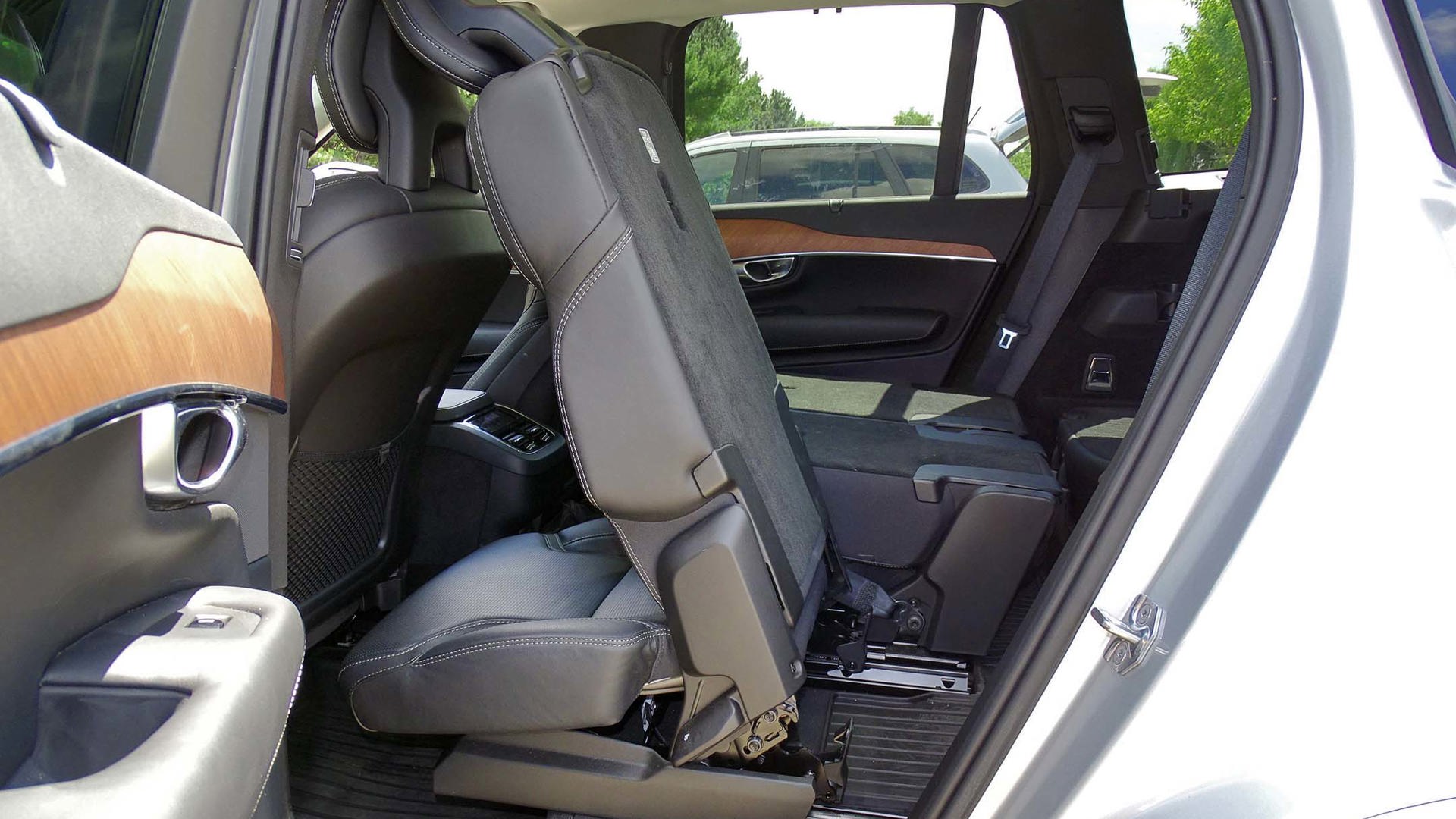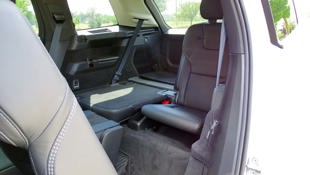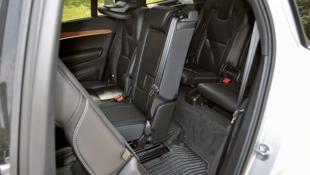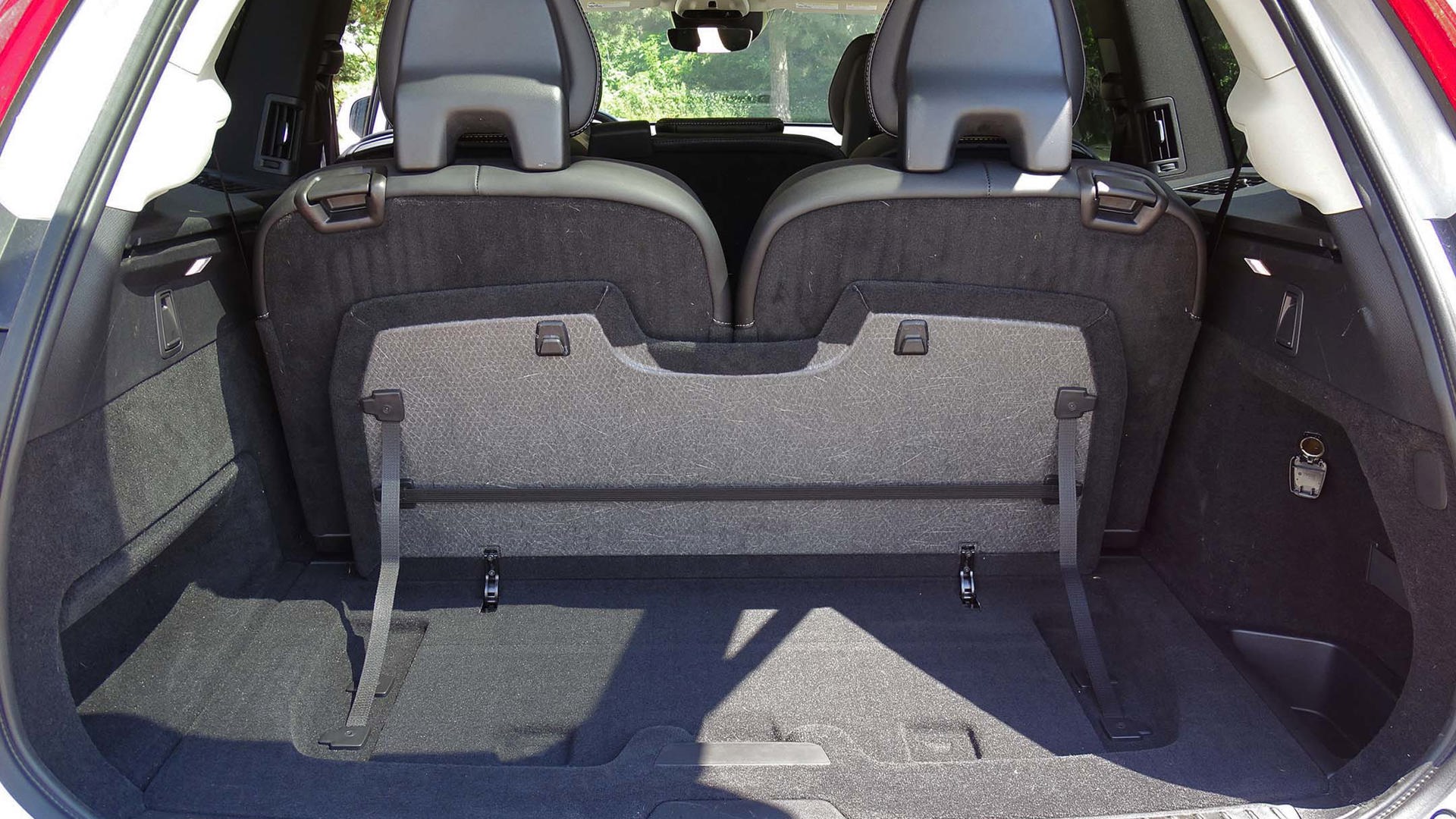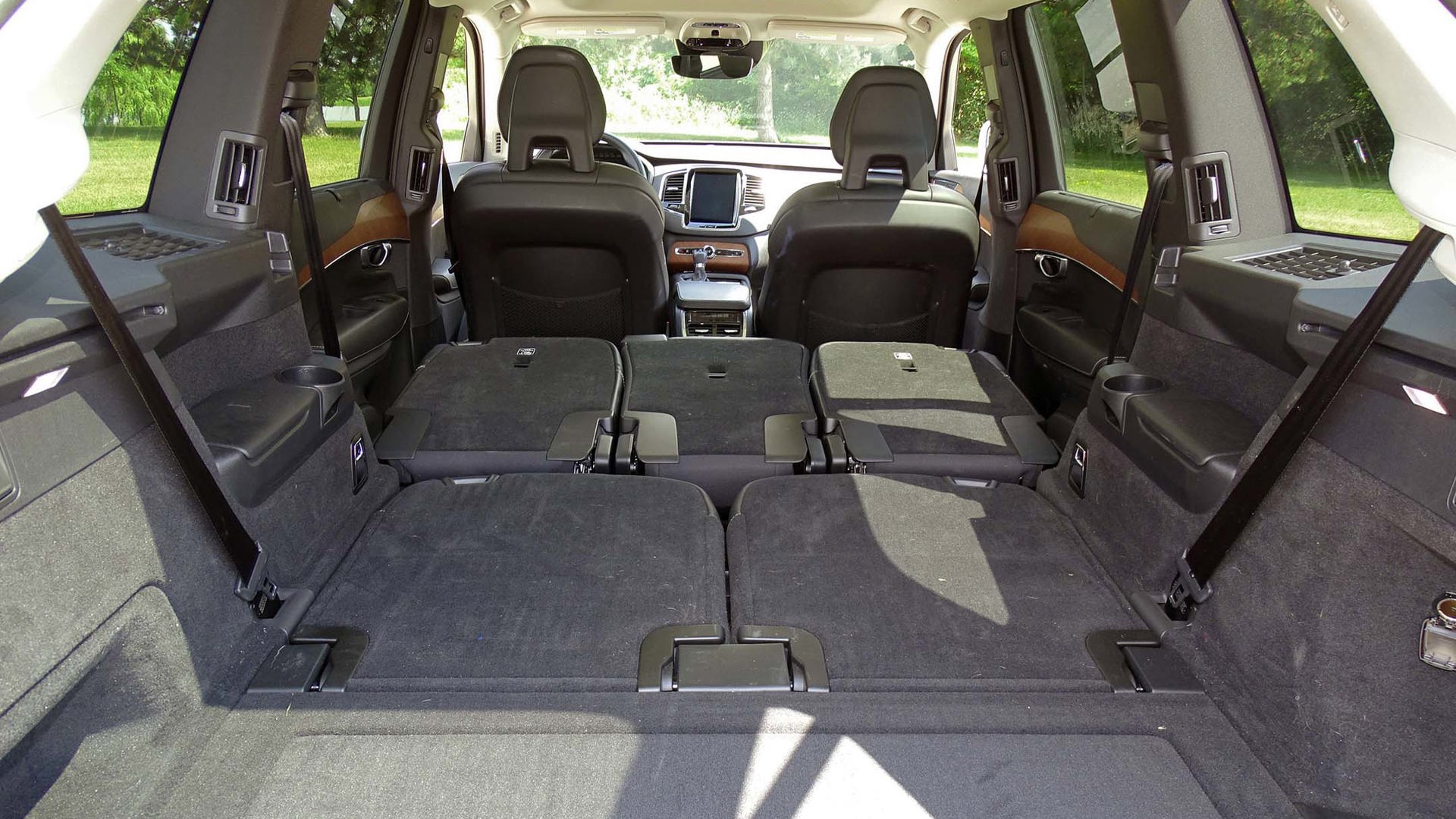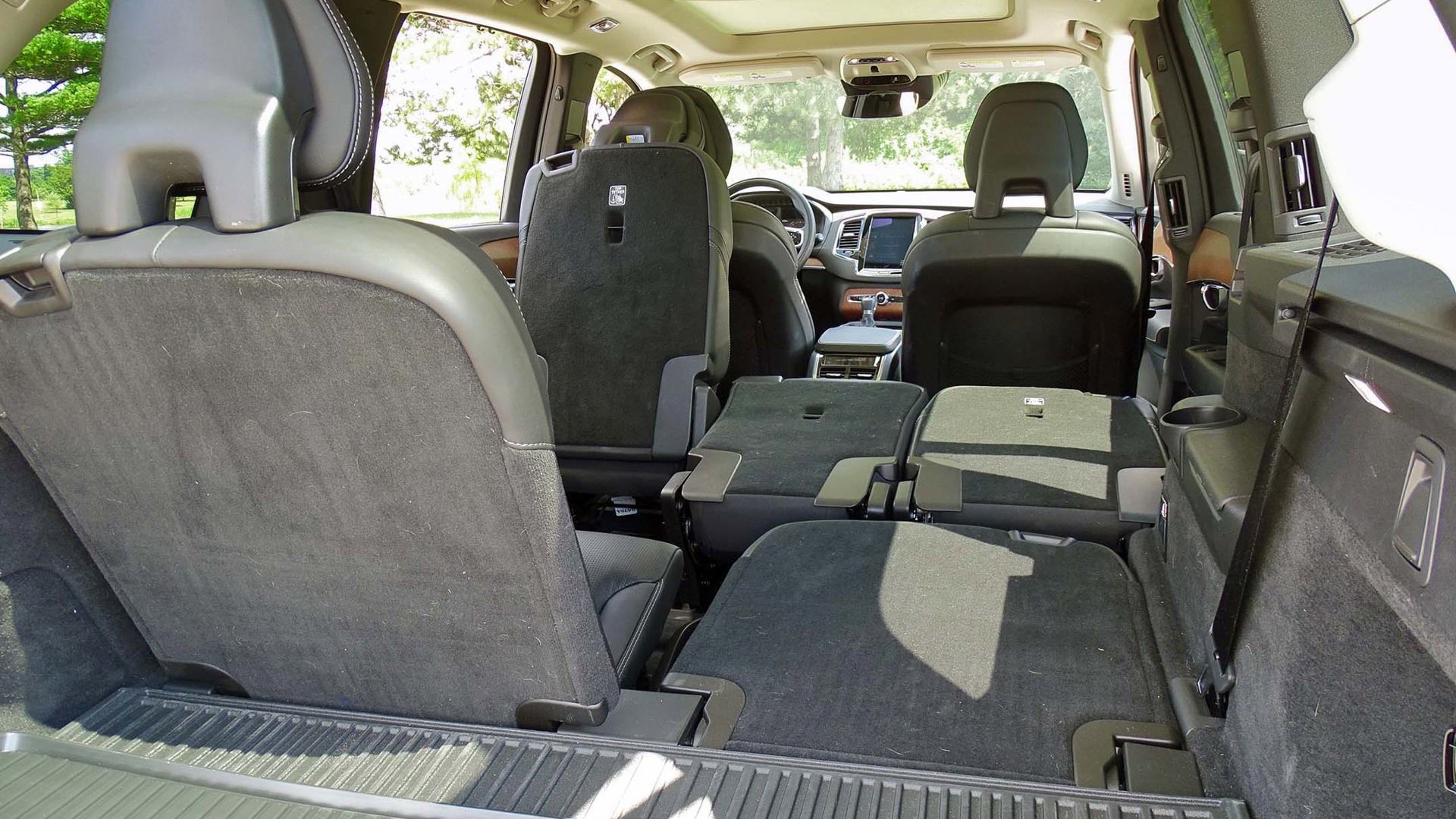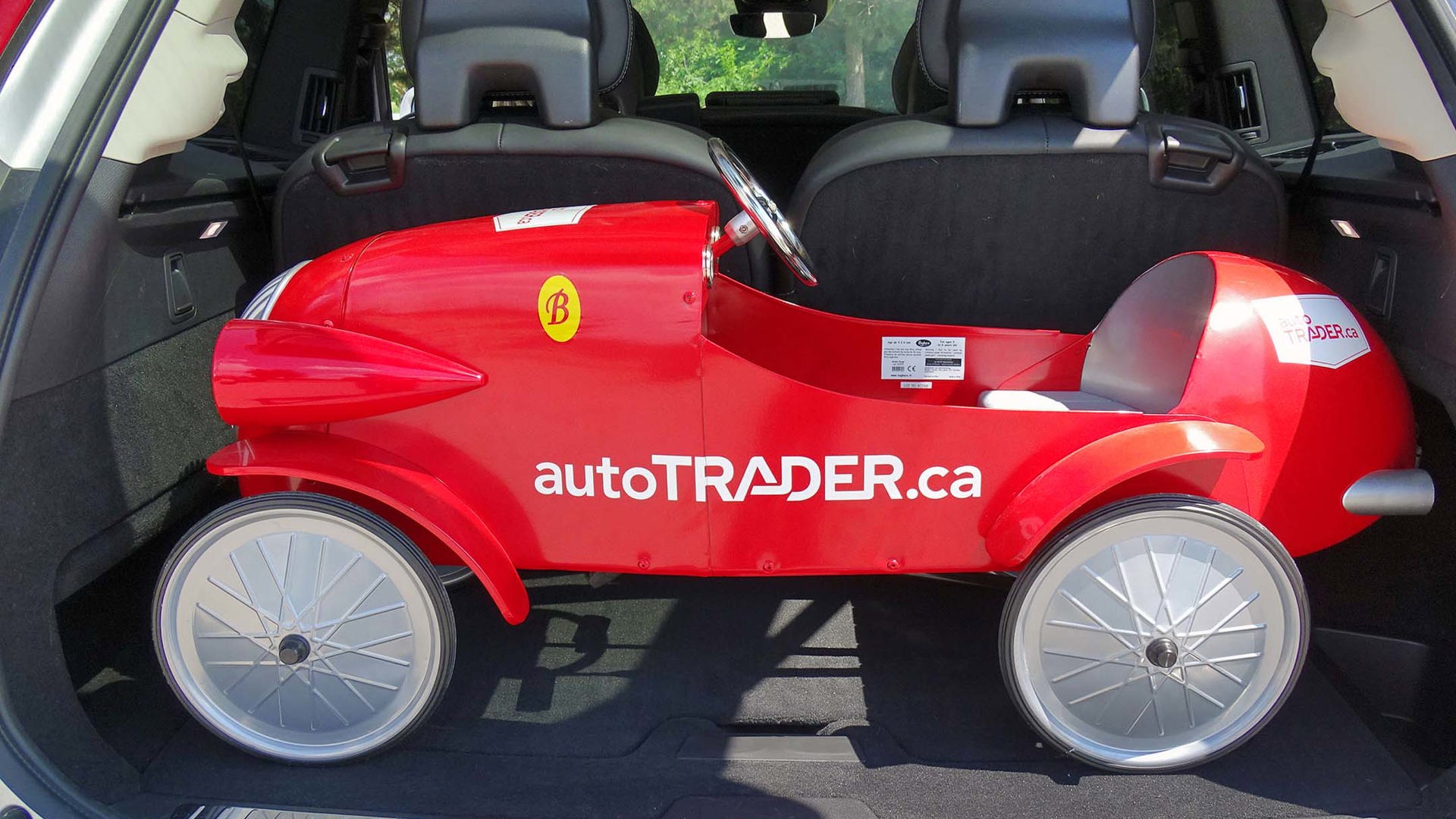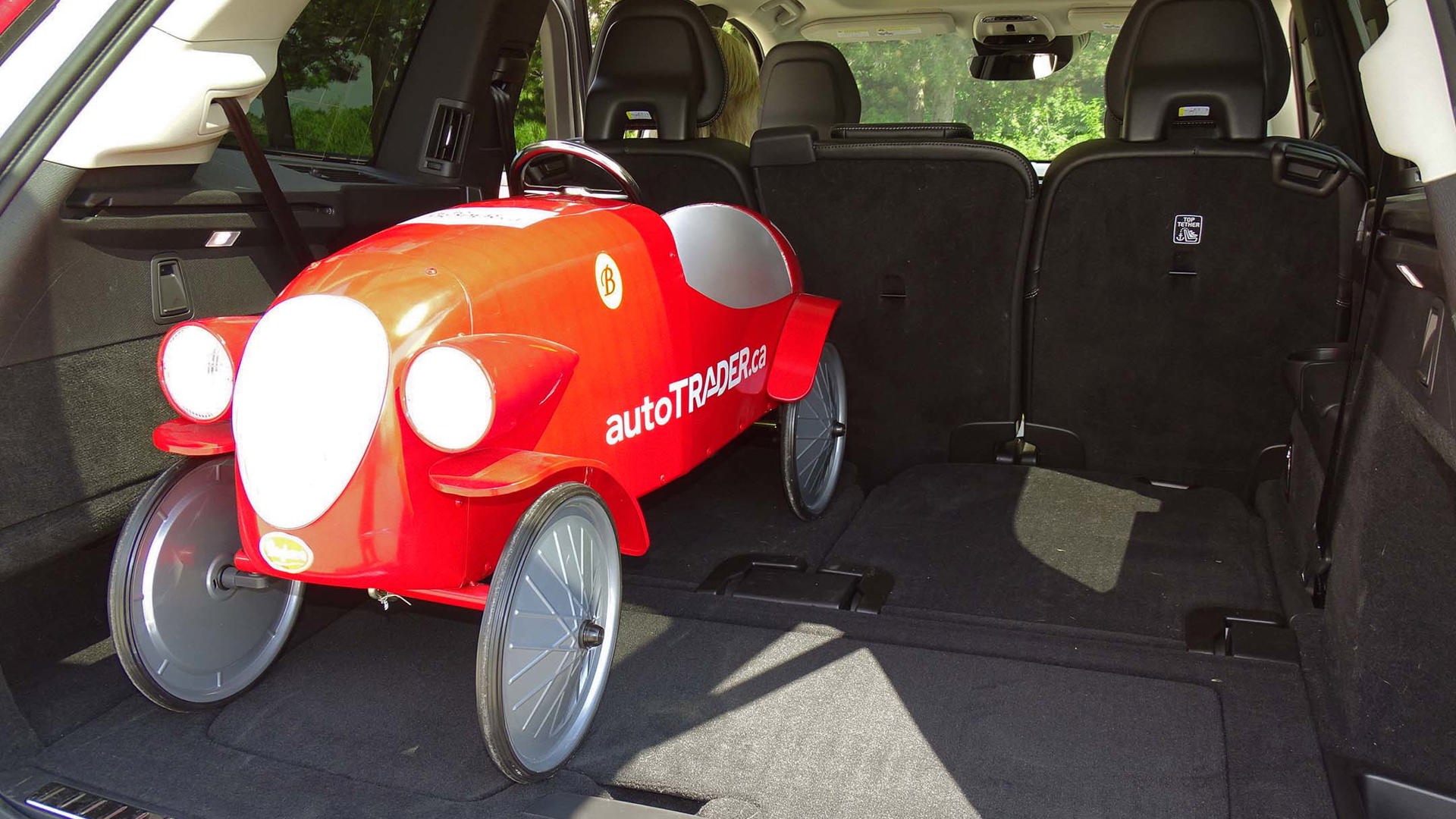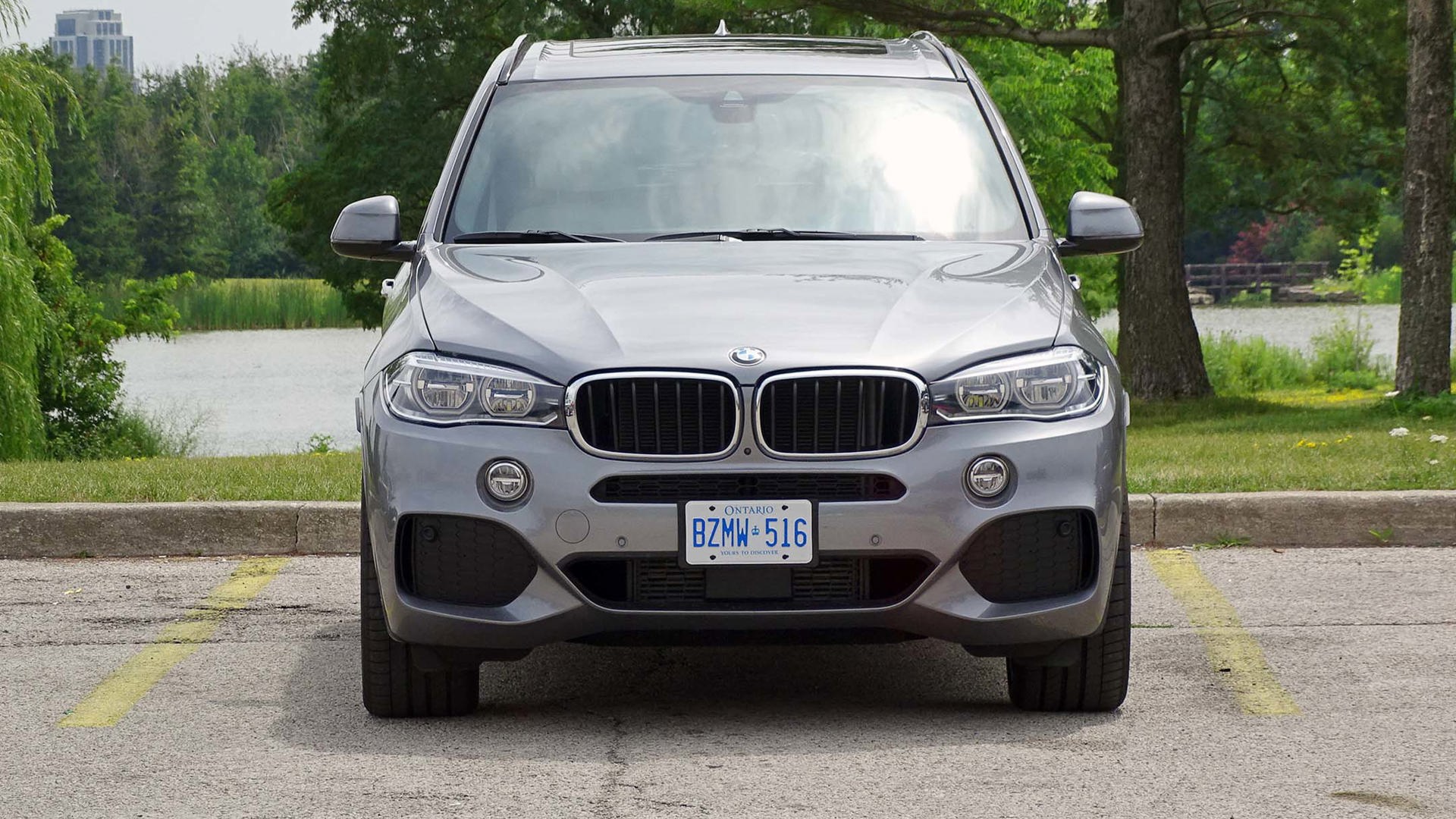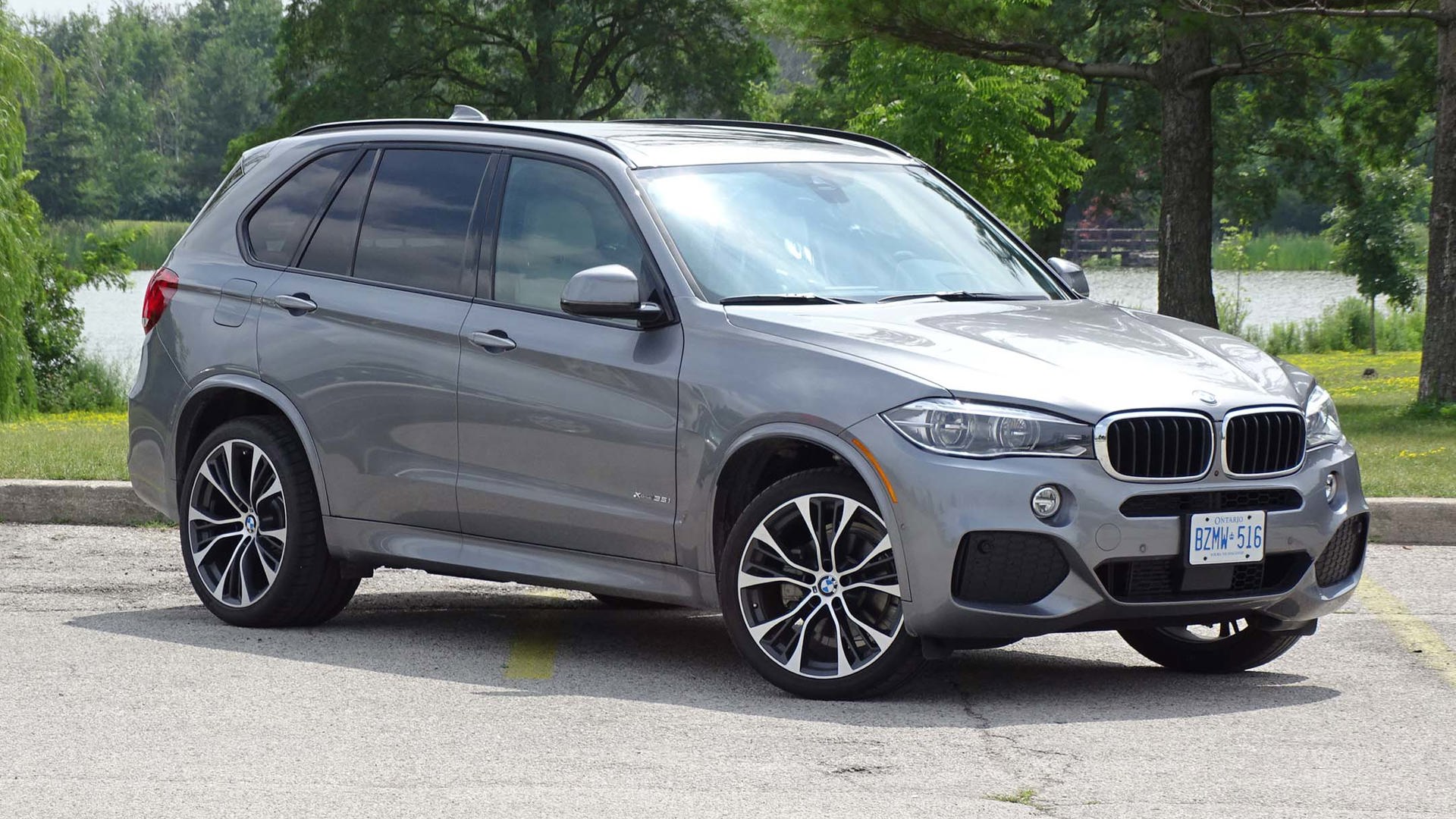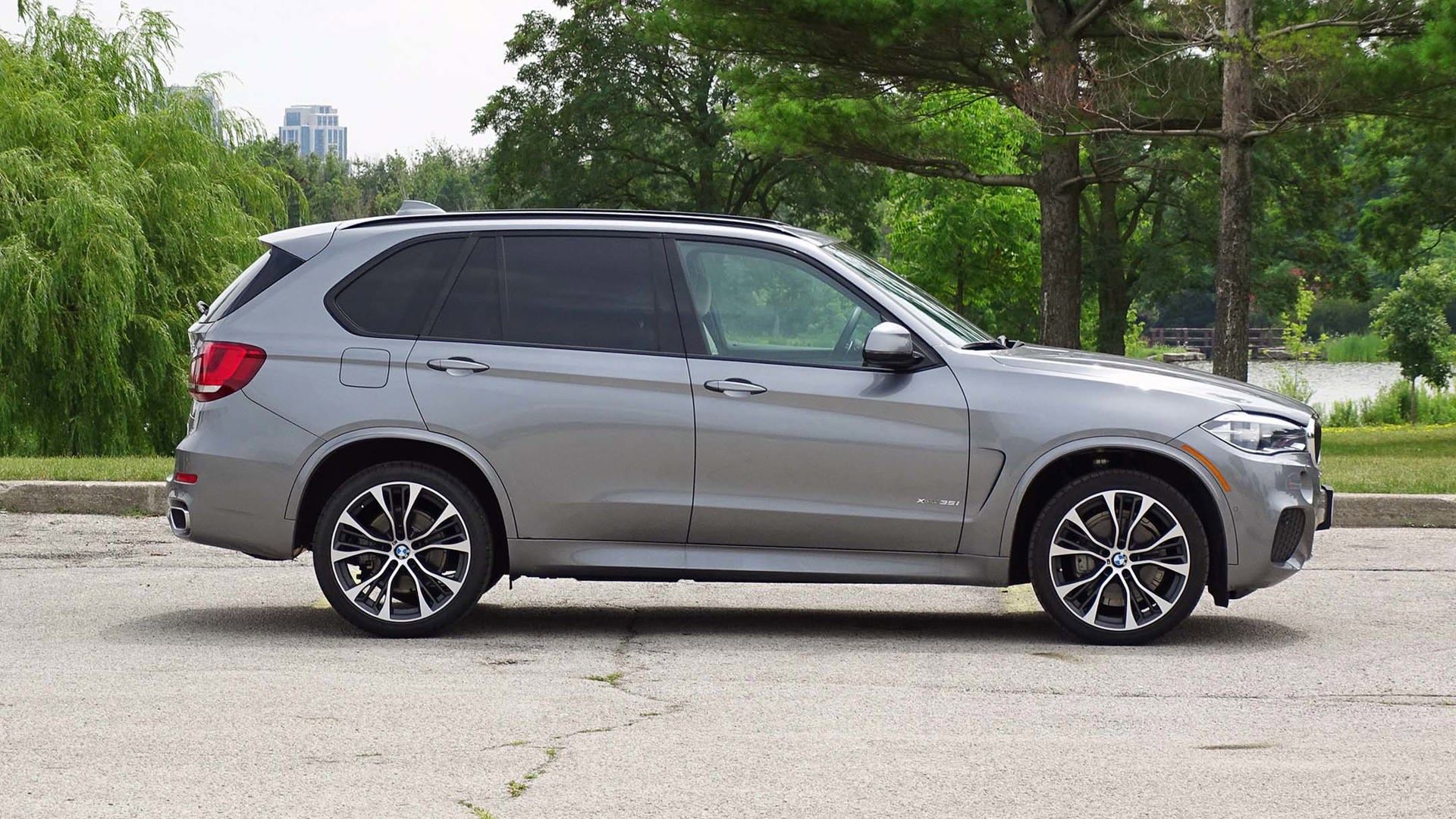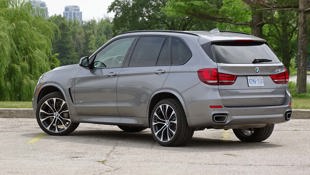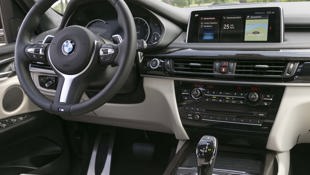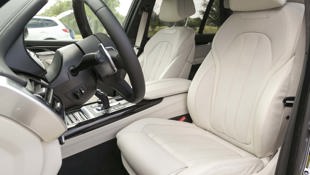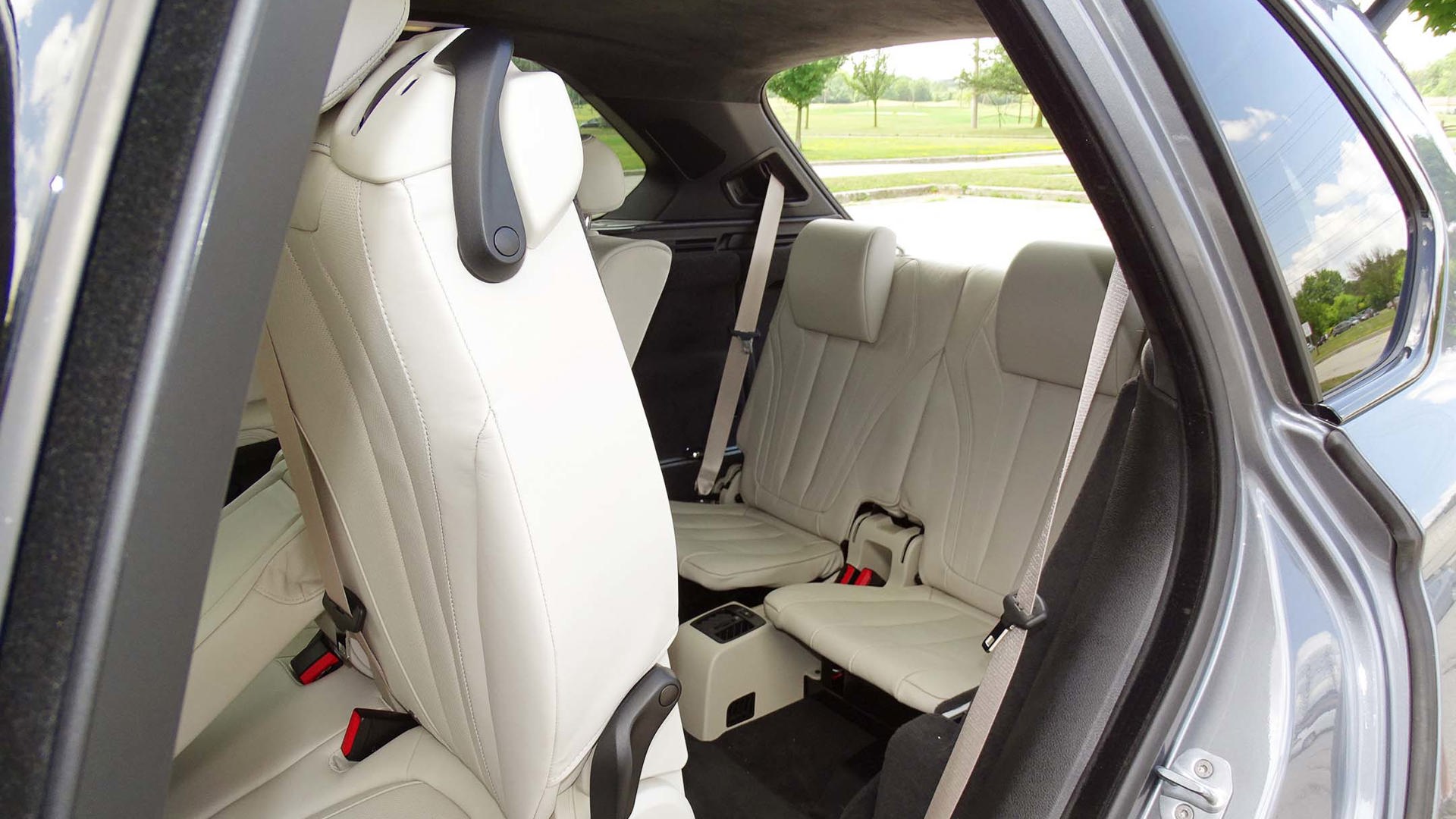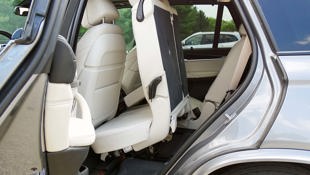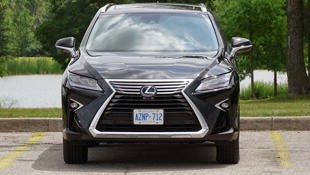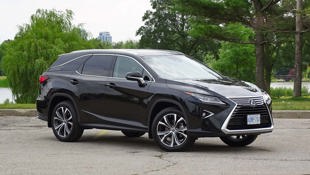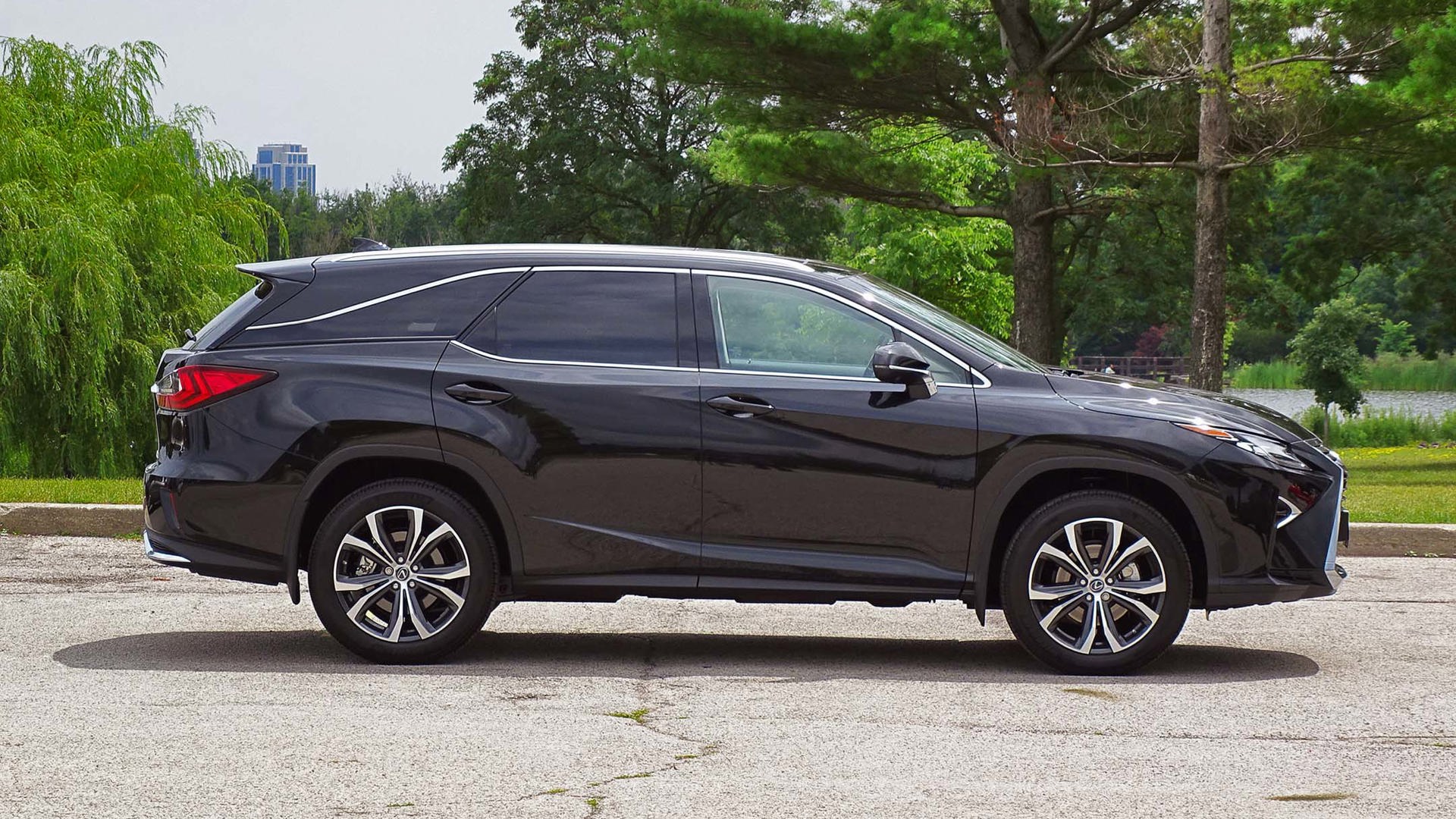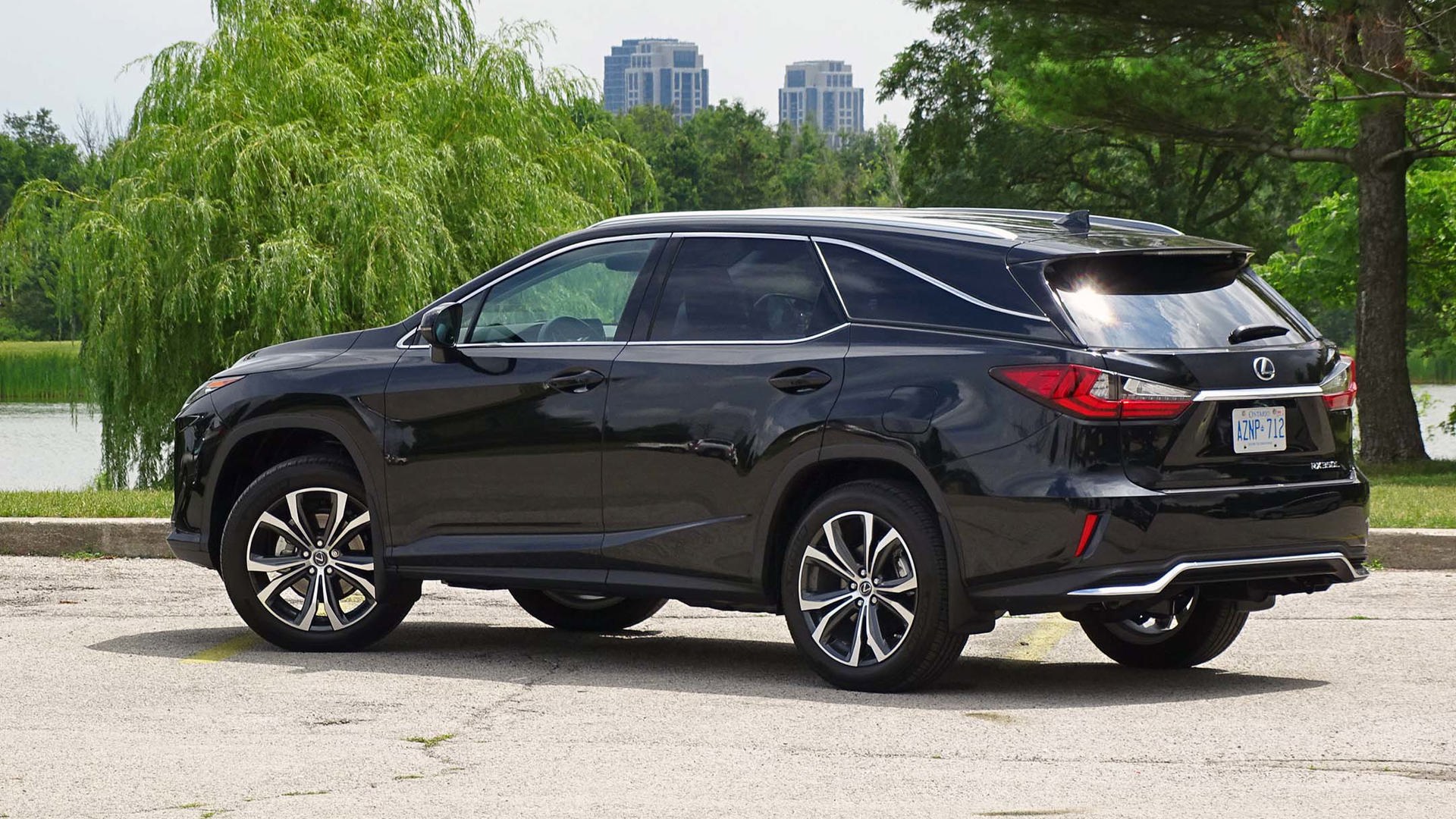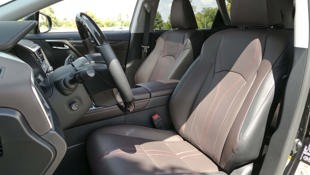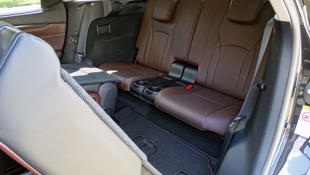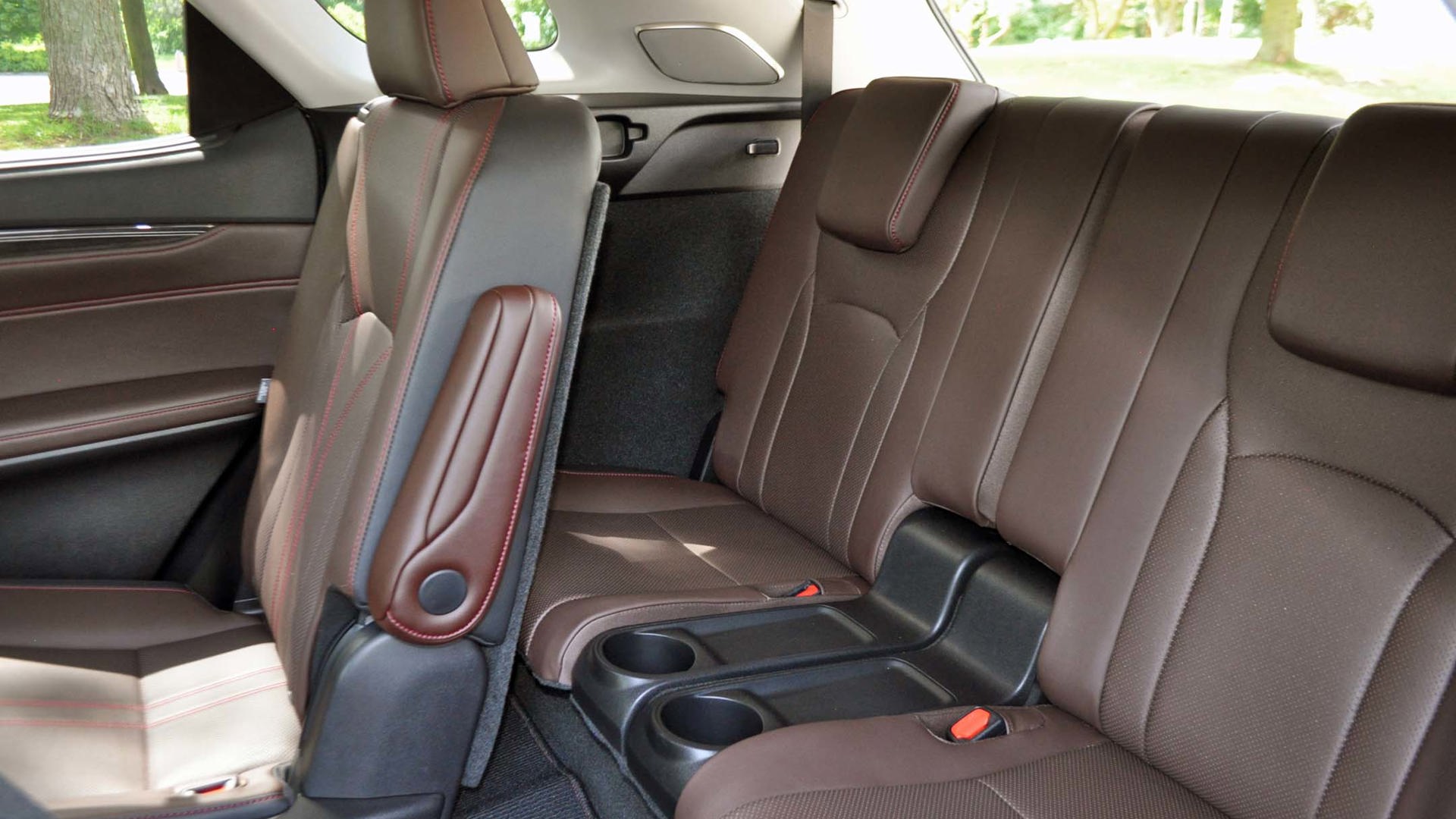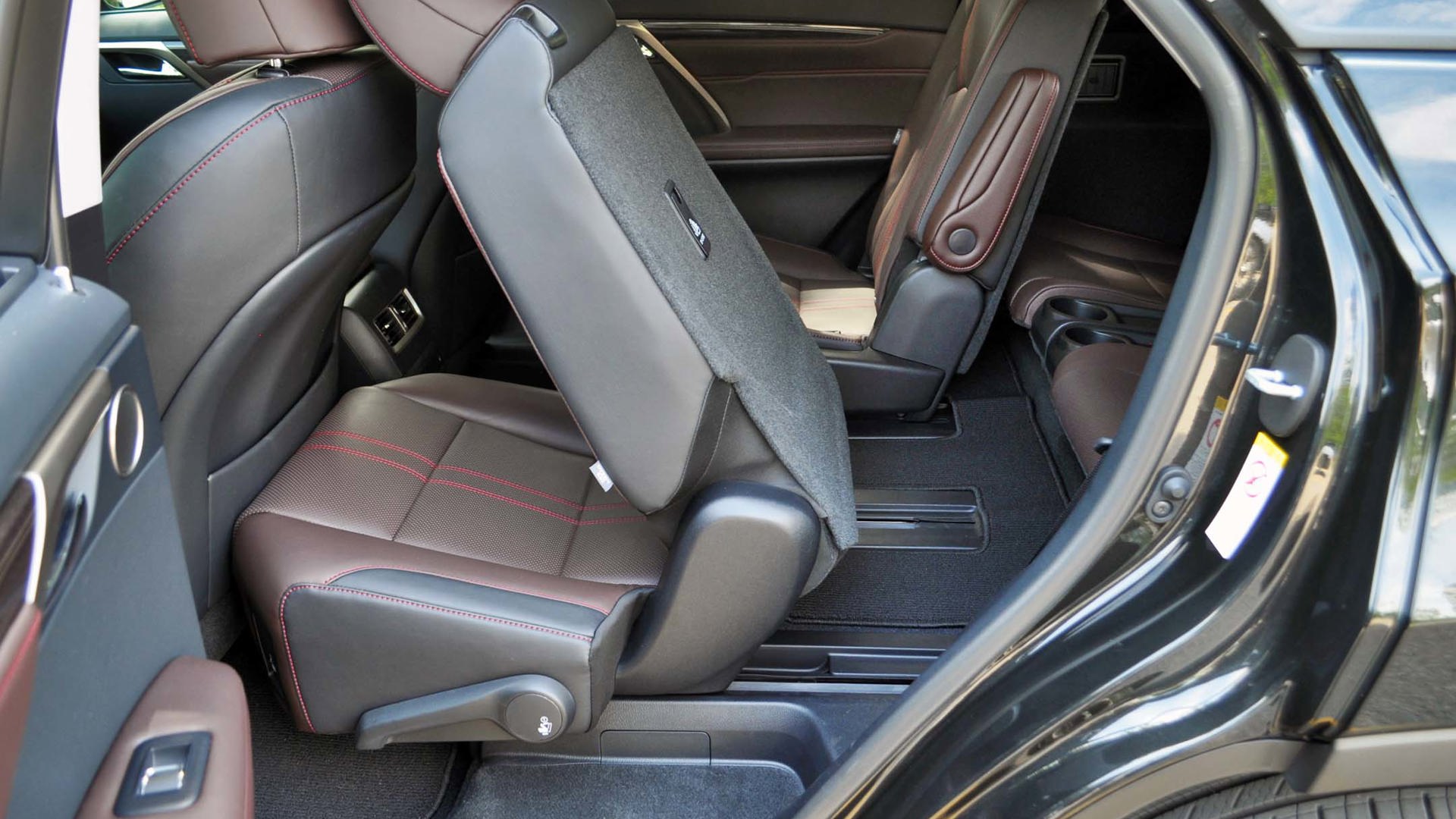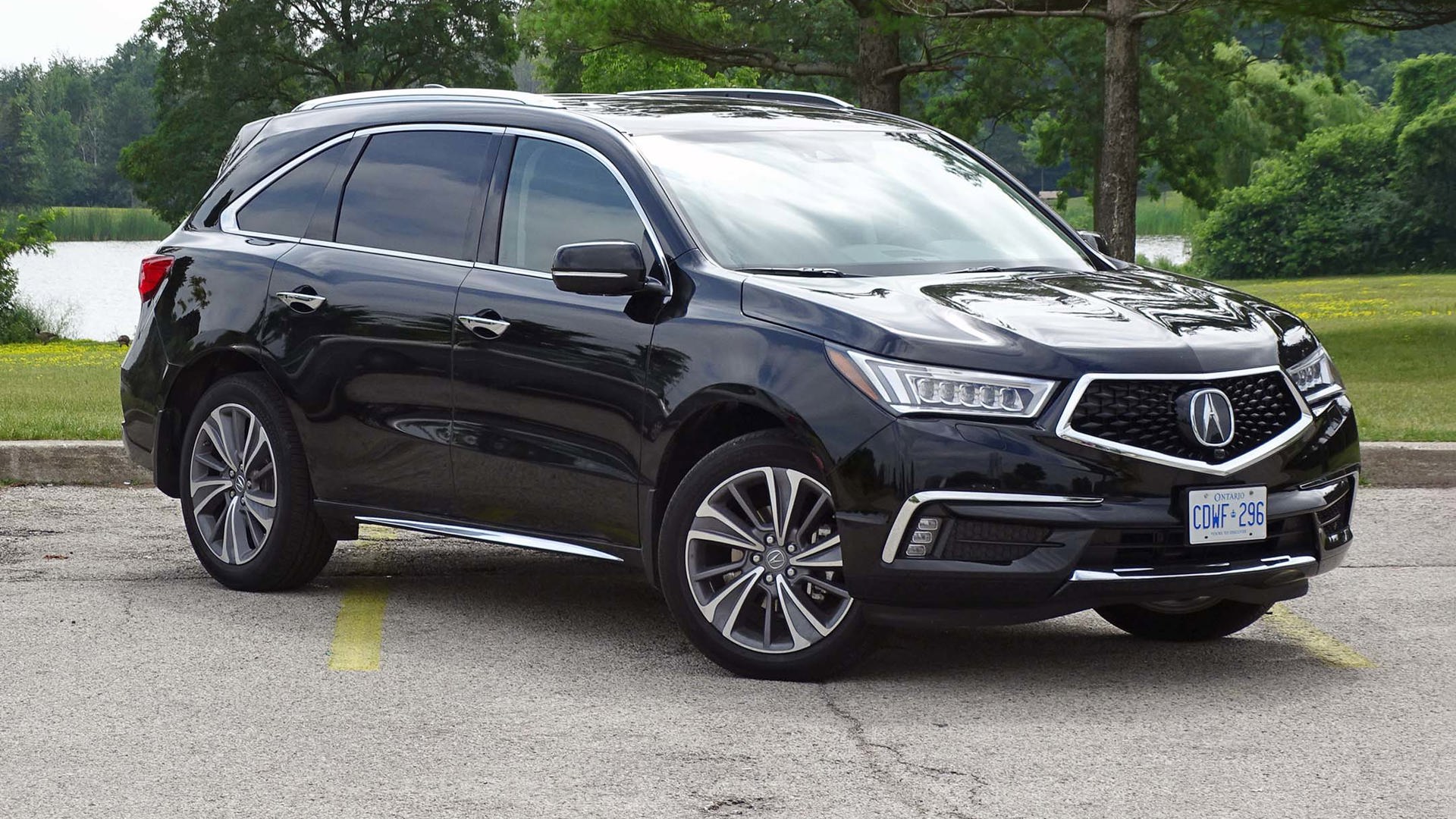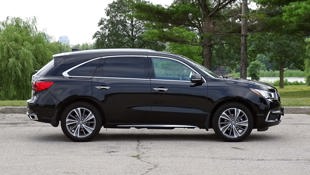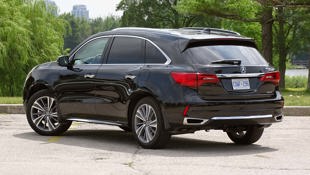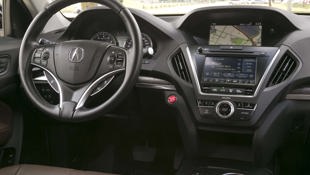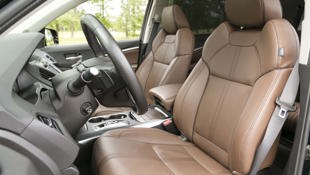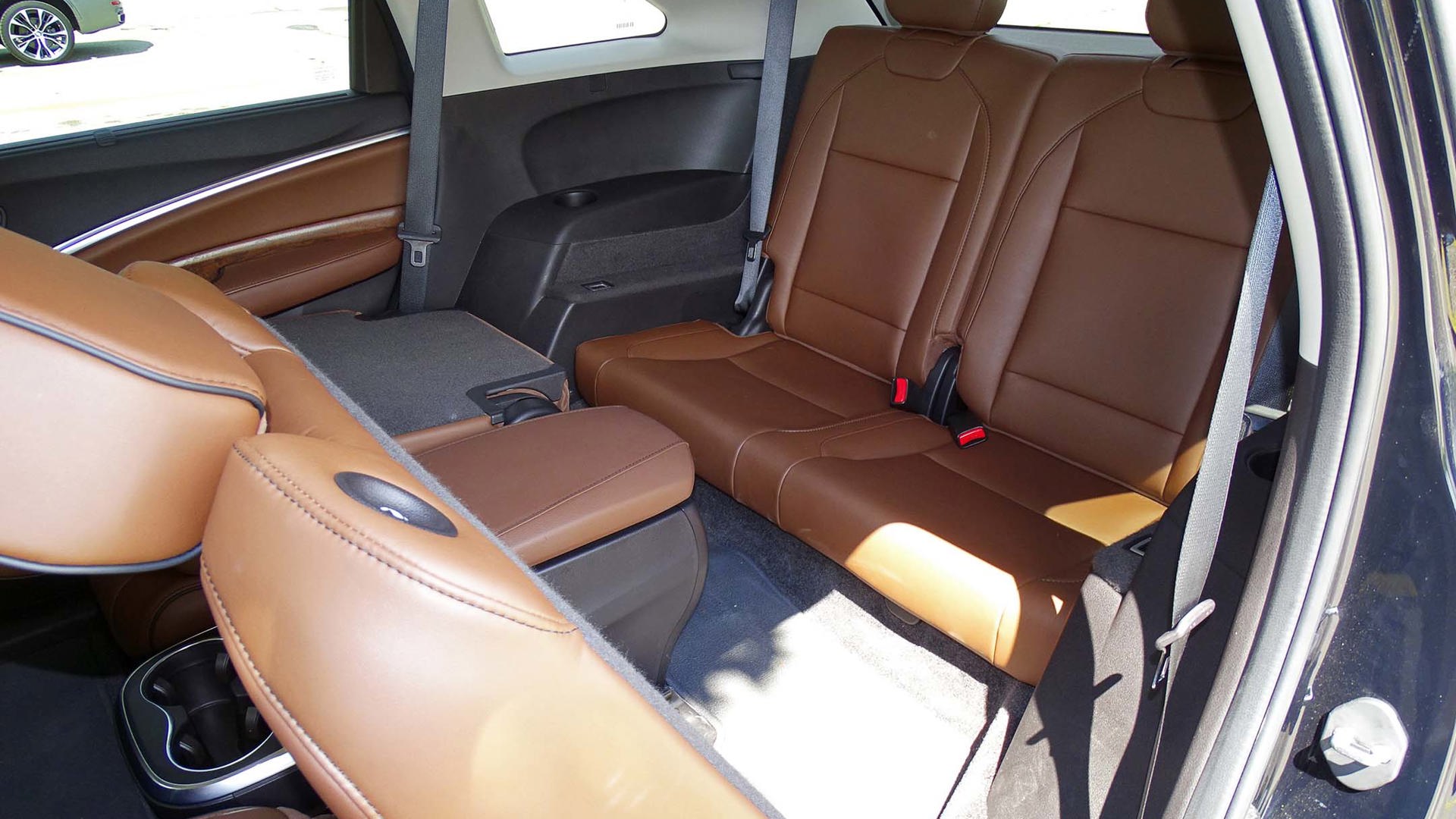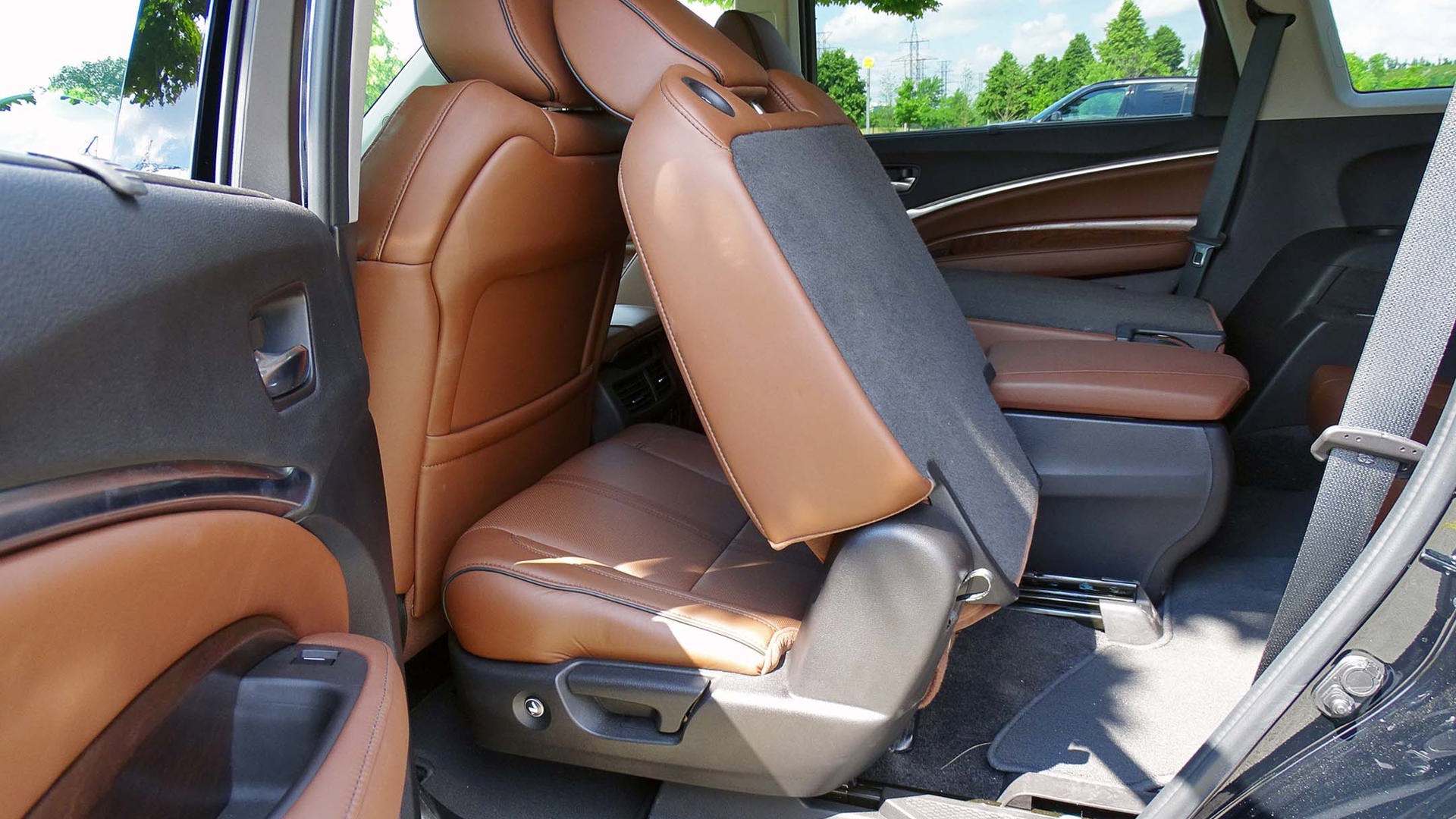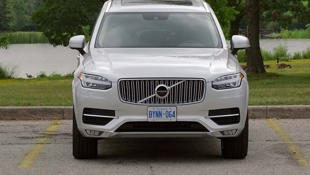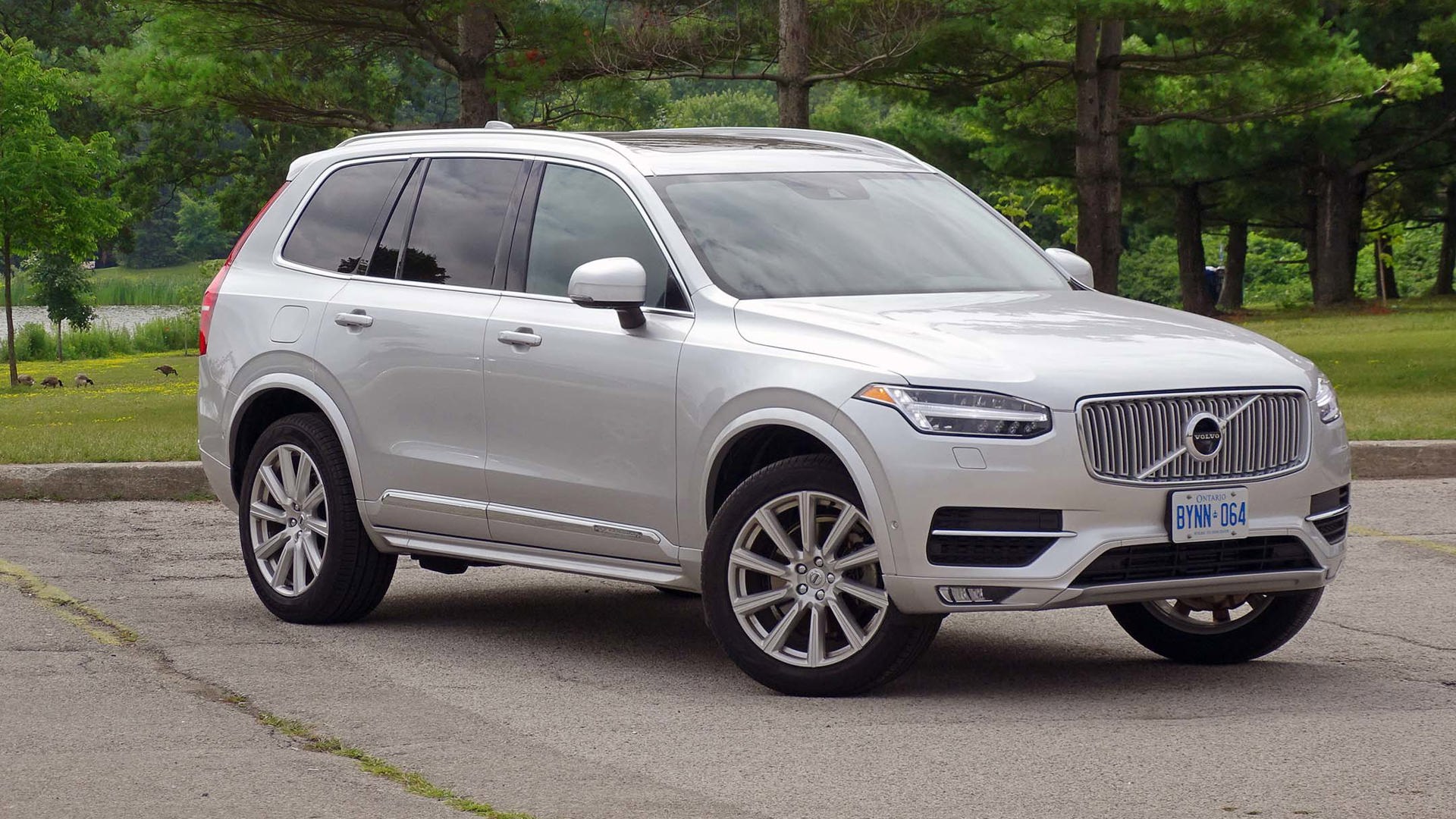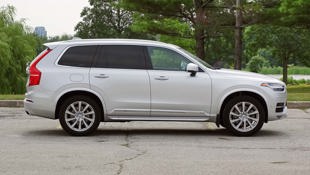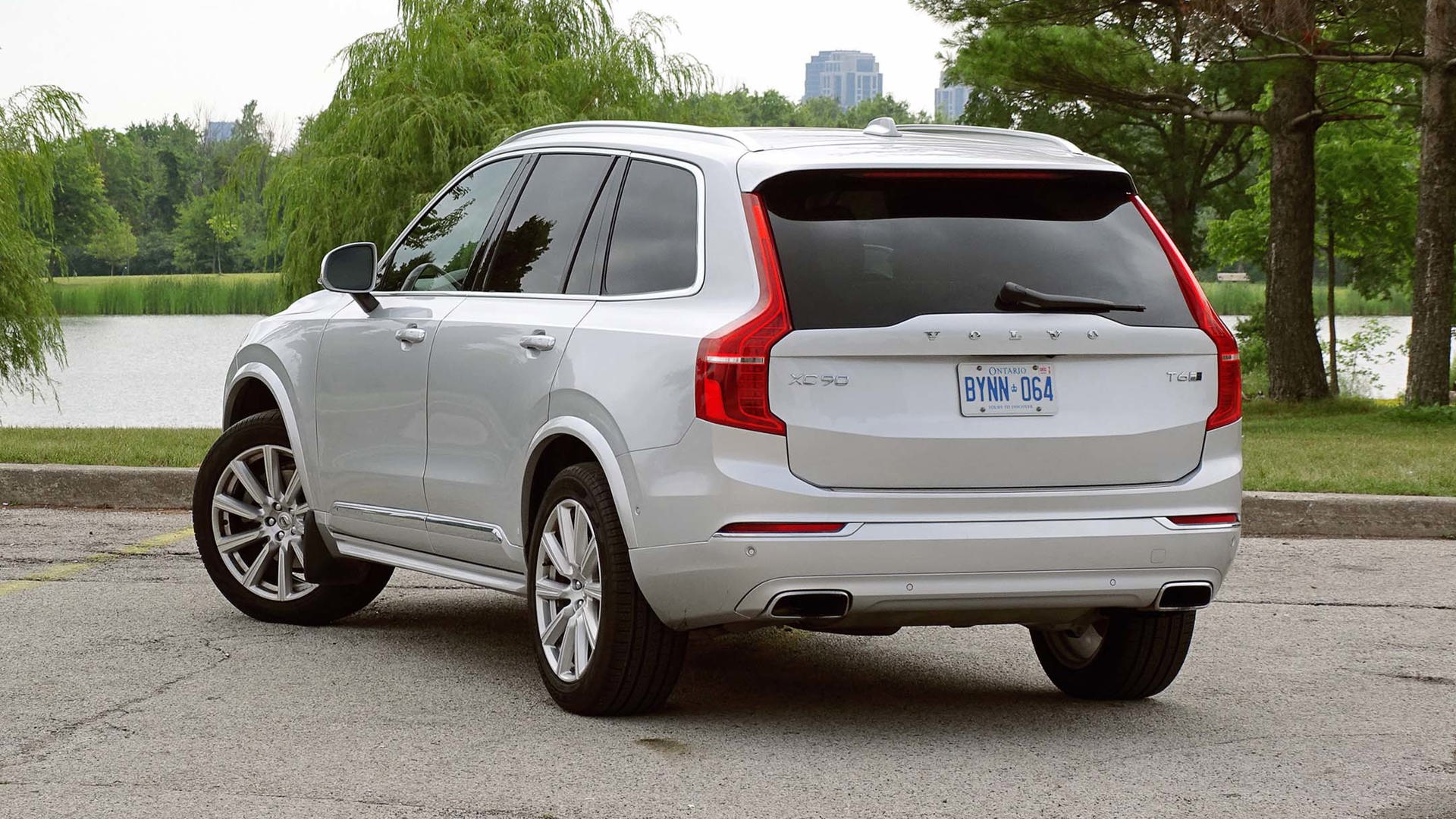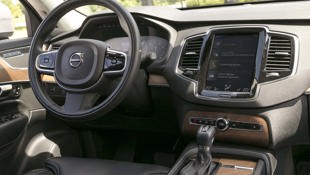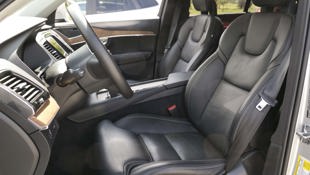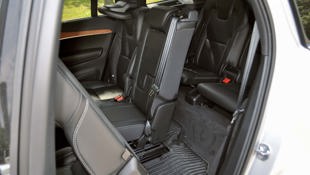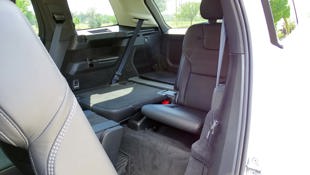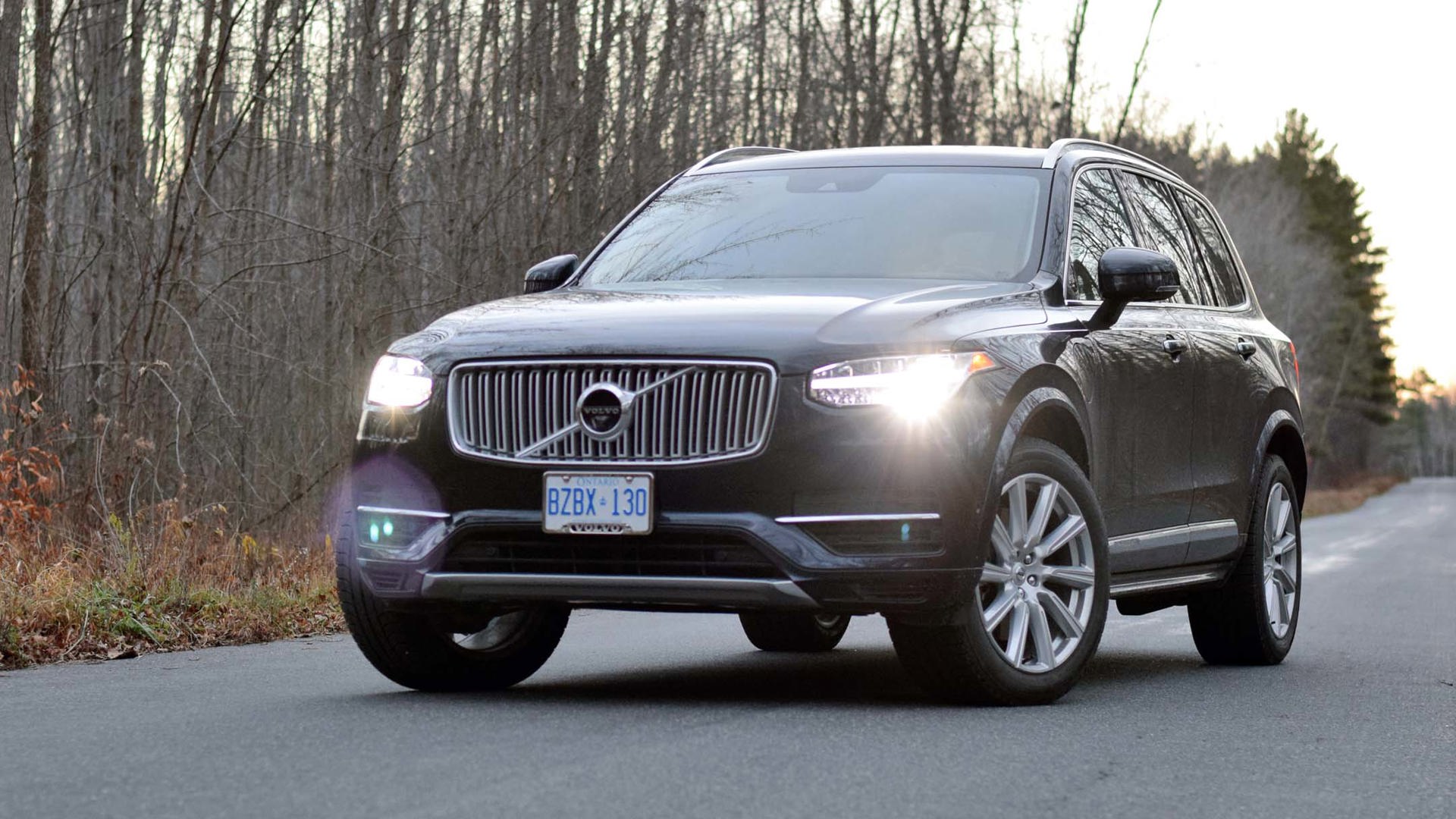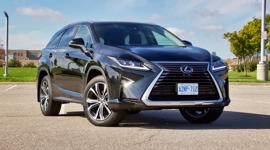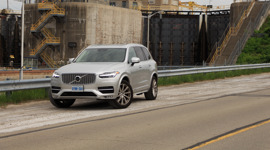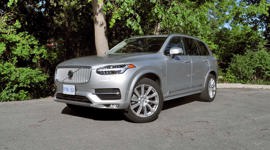Comparison Data
|
2018 Acura MDX
|
2018 BMW X5
|
2018 Lexus RX L
|
2018 Volvo XC90
|
|---|---|---|---|
|
Engine Displacement
3.5L
|
3.0L
|
3.5L
|
2.0L
|
|
Engine Cylinders
V6
|
I6
|
V6
|
I4
|
|
Peak Horsepower
290 hp
|
300 hp
|
263 hp
|
316 hp
|
|
Peak Torque
267 lb-ft
|
300 lb-ft
|
290 lb-ft
|
295 lb-ft
|
|
Fuel Economy
12.2/9.0/10.7 L/100 km cty/hwy/cmb
|
13.0/9.8/11.5 L/100 km cty/hwy/cmb
|
13.1/9.4/11.1 L/100 km cty/hwy/cmb
|
10.8/7.6/9.4 L/100 km cty/hwy/cmb
|
|
Cargo Space
447 / 2,575 L seats down
|
650 / 1,870 L seats down
|
210 / 1,650 L seats down
|
368 / 2,427 L seats down
|
|
Base Price
$66,190
|
$69,950
|
$66,050
|
$69,950
|
|
A/C Tax
$100
|
$100
|
$100
|
$100
|
|
Destination Fee
$2,045
|
$2,145
|
$2,101
|
$2,015
|
|
Price as Tested
$69,473
|
$95,245
|
$74,301
|
$78,415
|
|
Optional Equipment
$1,138 – Flexible Warranty 4 years/100,000 km $1,138
|
$23,060 – Premium Package Enhanced $6,900; Nappa Premium Seating $4,900; M Sport Line $4,000; LED Lighting Package $2,500; Third Row Seating $2,100; Smartphone Connectivity Package $750; Driving Assistant Plus $1,900
|
$6,050 – Executive Package $6,050
|
$6,350 – Vision Package (BLIS and Cross Traffic Alert; 360-degree surround view camera; retractable rear-view mirrors) $2,000; Climate Package $1,250; Convenience Package $2,200; Metallic Paint $900
|
There’s no denying the usefulness of a third row in an SUV for families, even if you’re not regularly carrying more than four passengers – extra flexibility to bring along grandma, for occasional birthday party shuttling, or even when loud siblings clash, as a de-militarized buffer zone. But even for upscale families that can afford a full-size luxury SUV in the vein of a Lincoln Navigator or Cadillac Escalade and the premium fuel bills that come with them, there are also urban driving situations where a mid-size luxury SUV just fits better, uses less fuel, and still offers the flexibility of a third row when needed.
For this comparison we looked at the mid-size luxury sales numbers, and noted that the sales leader (so far this year) and Canada-built Lexus RX had added a third-row option and christened it the RX L for 2018. This caught it up with many of the most popular vehicles in this class, which offer it either standard or optionally.
A Note on Absentees and Pricing Differences:
BMW is bringing out an all-new 2019 X5 by the end of the year – considering its imminent redesign, we debated whether to include the 2018 X5 in this comparison. With its options list, this particular X5 was also priced closer to German rivals like the Audi Q7, which wasn’t available, or the Mercedes-Benz GLE, which doesn’t offer a third row. We considered the $85,000-plus Mercedes-Benz GLS, but it seemed an unfair size up in price and purpose to all the others here. The three-row Infiniti QX60 is also up for redesign soon; the three-row Land Rover Discovery was a last-minute no-show, and also much less of a player than the others here in terms of Canadian sales.
All told, this was a super-close battle between the sales heavyweights of the three-row, mid-size luxury SUV class. It’s safe to say there were a few surprises here, but perhaps the biggest surprise of all was how close these vehicles finished overall.
Here’s how they ranked:
Fourth Place: 2018 BMW X5 xdrive35i
Michael Bettencourt
If only we all aged so gracefully – and opulently. With the fourth-generation 2019 model scheduled to land in Canada by the end of calendar year 2018, this regally priced 2018 X5 did surprisingly well for itself in this group of fresher and younger three-row luxury SUV rivals, with all of them finishing very close in the end. But the BMW still came out at the bottom of our accumulated scores, and it wasn’t all down to its estate-sized list of options.
Yes, its $95,245 as-tested price towered ominously over the others throughout the test, the next highest priced at $78,315 (Volvo XC90). That elevated sticker certainly hurt its value score, but its mountain of niceties certainly made it feel like a throne-eligible royal among mere all-wheel-drive gentry.
As soon as one steps into the X5, its exquisite interior finishes, soft leather seating surfaces, and bank-vault-heavy doors all contribute to its overall sense of solid Teutonic luxury, with autoTRADER.ca regular Lesley Wimbush noting its “matte-finish silvery wood and finely knurled switchgear”.
The X5’s unique suede-lined pillars and headliner oozed high-end luxury, while a massive panoramic sunroof flooded the interior with light, compared to the proletarian front-seat ones in the Lexus and Acura.
But the impressiveness in surfaces and visual appeal inside didn’t translate to high scores in the comfort-oriented Interior scoring categories, thanks to a third row judged to be most difficult to enter, and amongst the tightest. It also featured a relatively dated, button-heavy dashboard design – though some preferred the ease of buttons and the iDrive rotary controller ergonomically than the screen-heavy or, worse, mouse-like controls of the others.
The X5 excelled in its engine and transmission combination, with shift paddles that not only allow full control on shifts for frisky highway ramp attacks, but also engine braking down snow-covered ski hills. The X5 was also the only one that offered two levels of sportiness in its Sport and Sport+ modes.
“The turbocharged inline-six is wonderfully smooth, and the eight-speed automatic is the best of the group with unnoticeable shifts when doddling along, and rapid-fire ones when driven aggressively,” said Jeff Wilson.
Still, the electronic shifter came in for lots of criticism as well: “Yes, drivers will get used to pushing the lever forward for Reverse, but that’s not intuitive for newbies to the vehicle, and might potentially be an issue for those where other vehicles in the household don’t have the same oddball shift pattern,” noted Jil McIntosh. Plus, when you’re resting your hand on the electronic shifter to adjust one of those many buttons, it’s way too easy to hit a bump and inadvertently tap it into neutral.
We all agreed that the X5 and the Volvo were tops in the field in terms of ride and handling. “In terms of sporty performance from its engine and handling, the BMW ranked closely behind the Volvo for me,” said Jil. “It might have been on par except for its heft: it’s the heaviest of the four, and it feels it.”
From a practicality standpoint, the X5 lost points for its two-piece tailgate, which doesn’t feature a hands-free function that can open or close automatically at the swipe of a foot or detection of a key, and where the mini-tailgate that folds out means a longer stretch into the cargo bay to retrieve items. The optional $2,100 third row does come with standard heating elements, which is nice, but it was also the second-most difficult to access, and the tight confines back there means it’s very likely that these squeezed-in seats will be folded down for extra cargo space regardless.
“Flipping the second row forward to access the third is a not-so-royal pain in the butt, and clambering through that narrow opening is best left to the yogi-limber,” said Lesley.
Overall, we really liked the X5, but couldn’t get over the major price difference compared to the others. When planning this group test, we scoured around to find a tester equipped closer to the X5 35i’s base $72,195 price (after destination) and those of its rivals here, but unfortunately couldn’t secure one. We decided to still include the X5 in this shootout due to its long history in this market, and continuing high sales (and sales appeal) to this day. So here it is, showing well for itself in its twilight years, and providing an aging yet tempting entry in this upscale segment – especially if there’ll be some tasty lease or finance deals on these outgoing models with the all-new fourth-generation X5 just around the corner.
Third Place: 2018 Lexus RX 350L
Jil McIntosh
I’ve always thought highly of Lexus’ RX, and the longer-bodied RX L is more of the same. The big thing for me is that it’s such a well-rounded package. There isn’t anything that stands out and screams Hey, I’m fabulous, but when you put it all together, you get a vehicle that’s genuinely nice to drive. And for many buyers, that’s precisely what they want: something that coddles them in comfort while going smoothly down the street.
There’s no getting around that first glance: this is not a pretty vehicle. It’s cool and edgy when viewed from the side and rear, but that “spindle-grille” face just ain’t doin’ it for me. As Jeff put it, “It’s unlikely to age well, looking hopelessly out of fashion in a few years, I’d bet,” and I’ll put my money down alongside his.
Jeff didn’t like the RX L’s interior styling either, but while I admit it’s a mishmash of lines, materials, and colours – oddly enough, I kinda like it. It’s more interesting than the X5’s “BMW has looked this way forever” layout, and it looks far more premium than the MDX’s plasticky, belongs-in-a-minivan centre stack.
We all agreed that the console-mounted “mouse” needs to step into a mousetrap. For those blissfully unaware of Lexus’ Remote Touch infotainment controller – and we envy you for that – it’s a joystick-and-button affair that mimics a computer mouse to access functions on the non-touch screen. That’s fine when you’re sitting at your desk computer, but when you’re driving over bumpy roads and paying attention (we hope) to traffic, it’s annoyingly difficult to first get the cursor to the right spot, and then make sure it stays there while you select the function.
As Lesley put it, “Seriously, critics and drivers have complained about the mouse controller long enough that surely it should have found its way to the bottom of the Mariana Trench by now.”
First-row interior comfort was about the same all across our four test vehicles: all driver and front-passenger chairs proved supportive and cozy. The RX L’s second-row heated seats were equally easy on the butt and spine. None of our vehicles were very roomy in the third row, but the Lexus had enough space for compact humans, providing those in the second-row chairs slid theirs forward. The third row wasn’t as easy to enter as in the MDX, the clear-cut winner for back-row accessibility, but was far better than in the X5, where I couldn’t find enough of a foothold or handhold to even get in.
Very surprisingly, the Lexus was the only one of the four to have power-folding third-row seats, even though the Volvo and BMW were $4,000 and almost $21,000 more, respectively. Those two price-toppers were also the most difficult for lifting up or folding down the third row. I know minivan-style straps for easily pulling the seats up wouldn’t be considered a “premium look”, but the middle letter in SUV is supposed to stand for utility, right?
Strangely enough, Lexus stuck the secondary climate controls in the third row – the one that, for most people, will probably be the least-used. Those in the more-likely-to-be-filled second row can’t reach them, and really, do you want tots young enough to fit in the third row to be in charge of the temperature?
The seats almost derailed our test trips, as the RX L developed a constant, high-pitched warning beep that still has Michael’s ears buzzing. It took us quite a while to unravel the mystery: after checking the third-row seat, I hadn’t pushed the second-row chair hard enough to lock it in place. It didn’t look unlatched, which is why it took us so long to find it. “It’s nice of them to put in a warning, but it would be smart if they actually had some message on the dash to tell you what the constant beeping was, like the others all do,” Michael said.
While the RX L’s engine couldn’t measure up to the sportier nature of the Volvo or BMW, it proved more sprightly than the Acura, with Lexus pumping out less horsepower but a meatier torque rating. Back to that whole-package thing: the engine is smooth, the ride is super smooth, and the cabin is the quietest of the bunch. There’s little driving excitement, and far more body lean on curves than in the drum-tight Volvo, but it’s a big, three-row sport-ute, not a sports car.
Even though it didn’t hit the win in our comparison, the scores are so nail-bitingly close that it confirms the Lexus RX L as a must-try competitor for those shopping the segment.
Second Place: 2018 Acura MDX
Lesley Wimbush
You’ve really got to consider the customer demographic when evaluating this sort of vehicle. Although the MDX got the lowest scores in the group for design, powertrain, and suspension – all those things that resonate most with car enthusiasts – it still managed to rank second overall in the final scoring. That’s because it took top marks where it matters most for owners of family utility vehicles: comfort, versatility, fuel economy, and value.
None of us really cared much for the MDX’s styling, particularly the new grille. To paraphrase Jacob, it had a “face like a smashed crab”. But even our outspoken Aussie would have to admit it’s a big improvement on the fore and aft parrot beak fasciae that made it difficult to tell whether it was coming or going.
Climb inside, and the cabin of our tester projected a dated black leather and brushed-metal “man-cave” atmosphere. The vibe continues through the busy-ness of the centre stack and its driver-distracting preponderance of buttons. But some of the most-loved family environments do tend towards frumpy: the cottage, rec room, and kitchen table are places of familiarity, not cutting-edge style. And the MDX certainly does a good job at making people feel at home.
We were all impressed by the ingenious use of interior space. Compared to the other vehicles in our comparison group, the MDX was the storage space star, with numerous pockets, a voluminous centre console, and small cubbies within the driver’s reach for sunglasses, cell phones, keys, and such.
Jil really liked the two-tiered image screen which allows the driver to access other apps without losing the map display. Yet Jeff said, “The only thing worse than Acura’s two-screen infotainment set up (well, besides the Lexus infotainment mouse), is the decision to utilize the push-button gear selector.”
Whether or not you like the MDX’s rather unconventional gearshift selector will probably reveal a lot about your generation. Those of us who grew up with traditional stick shifts will find it awkward and alien, while younger folks who’ve grown up with electronic technology will accept it in stride. Sure, it does free up space for that impressive centre console, but using the PRNDL labelled buttons isn’t a very intuitive process – particularly when in a hurry – for the majority of people with traditional gear selector muscle memory.
With two USB ports for each row (a pair was added to the third row this year) the MDX was the undisputed champ of connectivity. As Michael pointed out, it “makes it seem like a good choice for tech-loving families, which is many of them these days.”
Second-row passengers enjoy heated captain’s chairs with plenty of head and legroom, separate climate controls, and there’s handsome pull-down console with leather upholstered armrest and two cupholders.
Accessing the third row was comparatively easy. While some of the other vehicles forced us to contort like origami figures in order to squeeze through a narrow rear opening, the MDX’s second row flips forward by pushing a button, creating an adequate step-through. Michael noted that “it gives nice, easy access to the third row, or at least easier than the others here – the closest to minivan ease, but not quite there.”
Raising the seats upright is accomplished by tugging on a latch, which is located within easy reach on the seat backs.
The MDX displays good on-road manners, handling well and with a minimum of engine and wind noise. But the firmness of its ride was surprising for this segment and its suspension could be harsh over rough roads. “The ride is noisy, with lots of banging over bumps,” said Jil, “although I didn’t think it was as bad as the Volvo’s clunking and crashing over road imperfections.” This was reflected in the MDX low chassis and suspension score.
With 290 hp and 267 lb-ft of torque, the MDX has more than enough power, but it lacks the sportiness of some of its competitors. It has the least amount of torque in our test group, which translates to less responsiveness and slower acceleration. Both Jeff and Jil noted that the nine-speed transmission, geared for efficiency rather than performance, tended to upshift, keeping the revs low and was lazy on downshift.
Buyers look for value and economy, even in the premium segments. Here, the MDX impressed, leading the pack with a 10.1 L/100 km on our test loops, compared to a 10.7 L/100 km official overall rating.
It was easily the least expensive at a relatively bargain-priced $69,363 as tested. That’s $5,000 cheaper than the Lexus, nearly $10,000 less than the Volvo – and a whopping $26,000 less than the BMW.
Although we had a few quibbles about the MDX, it managed to come second place, and beating pricier competitors while doing it. With among the oldest design of the group, the MDX is soon due for an overhaul – which may just up the ante even further.
First Place: 2018 Volvo XC90 Inscription
Jeff Wilson
Surprised to see the Volvo at the top of this heap? So were we, considering the very stiff competition it faced from three great machines.
Each one of these rigs fulfills its duty in the mid-size, seven-passenger luxury ute category, hence the incredibly close scoring, with less than half a point separating top from bottom. They’re all reasonably posh and offer plenty of safety features and amenities along with moderate space for people and cargo.
But the Volvo delighted each driver whenever one of us got behind the wheel and fooled a few of us into thinking we had mistakenly taken off in a smaller XC60. Typically, during our comparison tests, we find opinions split over which machine is the preferred driver’s choice, but this time it was unanimous. Despite its large size, the XC90 is the most fun to drive of the quartet.
With a buttoned-down suspension and good steering feel, we each found the biggest Volvo to be responsive and, dare we say, nimble? The taut suspenders do trade off ride quality and Jil found that the Volvo “bangs and crashes over bumps like an economy car, not a premium SUV hitting close to $80,000.”
In fairness, with the BMW rolling on rock-hard 21-inch rubber and the Acura’s slightly less sophisticated suspension, only the Lexus provided a truly supple ride quality, so the Volvo didn’t give up much here.
The XC90 T6 employs Volvo’s clever supercharged and turbocharged engine that produces the most power in this group (316 hp). Torque falls only slightly short of the Bimmer’s, but the svelte Swede weighs in nearly 200 kg lighter than the Bavarian, giving the Volvo proper urgency to its acceleration unmatched by any of the other utes in our test.
What makes this even more remarkable is that the XC90 is the only machine in the test with a four-cylinder engine. Displacing only two litres, the tiny Volvo mill is supposed to feel like a V8, but deliver the efficiency of a four-cylinder. In reality, it delivers the thrust of a good turbocharged six-cylinder, with the efficiency of, well, a six-cylinder, providing an as-tested result bettered by the miserly Acura.
We all liked the Volvo’s clean, sophisticated exterior style. Of the interior style, Managing Editor Bettencourt says, “the most modern interior of the bunch, with its large touchscreen and minimal button count highlighting the elegant yet advanced simplicity of the XC90’s entire persona.”
Even the button-loving traditionalists amongst us conceded that the infotainment system requires a very short familiarization period, with preferences easily programmed to facilitate easy use. Plus, as we found with the other SUVs in this test, the Volvo’s stereo is powerful and clear.
Thanks to its tall greenhouse profile and vast panoramic sunroof, the XC90 is bright and airy, even in the back seats, making the biggest-in-test second- and third-row passenger space feel properly inhabitable by real adults; something the BMW and Lexus surely can’t claim. Potential buyers should note that the Volvo’s second- and third-row seats are heavy and not as easily folded as those in some of the competition. Cargo capacity is nearly as capacious as the Acura MDX.
It’s easy to win over a bunch of driving enthusiasts with a powerful, dynamic machine, but in this test, where luxury and practicality are even more important, Volvo’s stylish XC90 T6 best knows how to have fun while doing its job as a mid-sized luxury SUV. Surprise!


